Circular 678
Christopher D. Allison, Range Scientist, Linebery Policy Center for Natural Resource Management
Jason L. Turner, Professor/Extension Horse Specialist, Department of Extension Animal Sciences and Natural Resources
John C. Wenzel, Extension Veterinarian, Department of Extension Animal Sciences and Natural Resources (Print Friendly PDF)
TABLE OF CONTENTS
- Introduction
- Factors Influencing Toxicity
- Management to Reduce Livestock Poisoning
- Environmental Conditions
- Control of Poisonous Plants
- Care of Poisoned Animals
- Key to Principal Livestock-Poisoning Plants
- Symptoms of Poisoning
- Primary Toxins
- Special Poisoning Problems and Associated Plants
- Principal Livestock-Poisoning Plants
- Losses From Causes Other Than Poisonous Plants
- Quick Reference Chart of Poisonous Plants and Symptoms
- Glossary
- References
Introduction
Poisonous plants rank high among the causes of economic loss to the livestock industry in New Mexico. This circular will help ranchers, veterinarians, county Extension agents, and all other concerned persons to identify potentially poisonous rangeland plants. Plants known or suspected to be toxic enough to cause animal disorders are included. Other sources of poisoning, such as grass tetany, mold, and fungus, are also discussed.
A poisonous or toxic plant causes physiological or biochemical changes when eaten by livestock. Symptoms and effects can vary greatly—from mild sickness to death—and can produce abortions, birth defects, sensitivity to light (photosensitization), chronic illness, or debilitation. Although livestock deaths attributed to poisonous plants vary with years and location, recent estimates indicate the annual death loss is from 3 to 5% for cattle, sheep, and horses. Economic losses are probably more significant and are reflected in lower weaning weights, lower percent calf or lamb crop, unmarketable animals because of birth deformities, and reduced longevity of the breeding herd. Poisonous plants on rangelands cost producers and consumers more than $250 million annually in the United States. These costs are attributable not only to livestock deaths and diminished productivity related to plant poisoning but also to management costs associated with using forage in areas infested with poisonous plants.
The least obvious loss caused by poisonous plants on New Mexico ranges is that the range resource is used at less than its potential. For example, deciding which class of livestock to graze could be a result of trying to avoid poisonous plant problems rather than which class of animal is best suited to use the range on the basis of forage and topography. Poisonous plants also dictate the season of range use, preventing ranges from being used as efficiently as they could without this danger. Range management costs are also higher where poisonous plants are a problem. These costs include plant control costs, fencing, and more intensive management associated with the presence of poisonous plants.
There are more than 200 plants in New Mexico that are poisonous or injurious, but only about half of these are dangerous enough to cause severe losses. These plants vary greatly in their toxicities, the classes of animals affected, and the conditions under which poisoning occurs.
Factors Influencing Toxicity
Palatability—The amount of poisonous plant material that is consumed by the animal is very important. If a plant is not eaten, the toxicity is not important. Plant palatability is extremely variable. Many species are more palatable after herbicide or fertilizer applications. Toxicity and palatability of plants can also vary with the stage of development. Generally, plants are most palatable during the early growth stages, and this is often the most dangerous period for poisoning because many poisonous plants start to grow before other forage plants do.
Forage availability—Generally speaking, most poisonous plants do not taste good, so livestock will usually choose more palatable and desirable species. However, if a range does not provide livestock with enough forage, animals may be forced to eat toxic amounts of poisonous plants. In some cases, poisonous plants may be quite palatable.
Climatic conditions—Climatic stress, such as drought or freezing, usually increases the toxicity of plants. For example, Johnson grass is normally a non-harmful forage plant, but under conditions of cool nighttime temperatures and warm daytime temperatures, it can accumulate dangerous levels of prussic acid.
Soil conditions—The mineral composition of soil has a powerful effect on plant toxicity. For example, four-wing saltbush is a valuable browse species under most conditions; however, when growing in soils with a high selenium concentration, saltbush will accumulate toxic levels of selenium.
Plant part—Poisonous compounds are often concentrated in different parts of the plant. Western water hemlock accumulates the poison cicutoxin in large amounts in the roots. Sacahuista, on the other hand, causes photosensitization in animals that eat the plant’s flowers or seedheads.
Type of toxin—Although some toxins are lethal in small amounts, such as cicutoxin in western water hemlock, most are not. Some toxins, such as those found in tansy mustard, rayless goldenrod, and some locos or peavines, have a cumulative effect.
Kind and class of animal—Some poisonous plants are more dangerous for one kind of livestock, while others are equally toxic to all classes. Larkspurs are toxic to cattle, but sheep are seldom affected. Some lupines, on the other hand, are poisonous to sheep and only rarely to cattle and horses. Generally, as an animal grows, there is usually a corresponding change in the amount of toxin required to be serious; younger animals are more susceptible to poisoning than older ones.
Sex of animal—A few poisonous plants are sex-specific. Pine needles and broom snakeweed appear harmless when consumed by males, but may cause abortion when eaten by females.
Color of animal—Skin color determines the susceptibility of animals to photosensitization, with light-colored animals affected more.
Condition of animal—Livestock in poor physical condition, or subjected to stress conditions such as cold temperatures or exertion, are usually more susceptible to poisoning than animals that are in good condition.
Nutrition level of animal—Most poisonous plants pose a greater threat when eaten by hungry animals than when eaten by fully fed animals because hungry animals will eat more toxic plant material.
Management to Reduce Livestock Poisoning
The amounts and kinds of poisonous range plants eaten by livestock vary greatly from area to area, and from ranch to ranch, in New Mexico. Management of ranges and livestock is a major determining factor behind these differences.
The four cardinal practices of range management to minimize livestock poisoning are 1. proper numbers of livestock, 2. proper season of use, 3. proper distribution of grazing, and 4. proper kind of grazing animals. Various types of grazing systems allow for occasional rest from grazing, allowing the better plants to become established and providing, over the long run, a good feed reserve.
Proper use of ranges—The most common situation where livestock are poisoned by range plants is when ranges are repeatedly overgrazed. As ranges are overgrazed, the more palatable plant species decrease in abundance and the less palatable ones increase. Most poisonous range plants fall into the latter category. As range deterioration continues, animals are forced to eat more and more of the less palatable plants to meet their intake requirements. This relationship between lack of good feed and poisonous plant-inflicted losses cannot be overemphasized.
Well-fed animals—Animals graze less selectively when they are hungry than when they are full, and tend to eat whatever plant is available first. Hungry animals should never be released onto areas containing poisonous plants, or driven through areas containing large numbers of poisonous plants, until they have been well fed.
Proper turn-out time—Where certain parts of the ranch are used only during spring and summer, such as high mountain pastures, it is necessary to wait until the right time before turning animals onto these areas. If these pastures are grazed before they are ready, the earliest-growing species must carry the grazing load. Many poisonous plants are among the first to green up. During this stage, they are most succulent and palatable; livestock can be expected to eat more of the poisonous plants at this time. Livestock should not be placed on seasonal ranges until the desirable forage plants have grown enough to support grazing.
Graze animals familiar with the area—Animals that are new to an area may be less selective in their grazing and eat more undesirable—and possibly poisonous—plants than an animal familiar with the range. Exceptions to this rule do occur. For example, animals that have been “locoed” tend to become habituated to locoweed. Animals teach others to graze certain plants. This social facilitation can cause naïve livestock to consume toxic plants that they would otherwise avoid. In general, when livestock are grazed in new or unfamiliar pastures, ranchers should watch them carefully.
Proper herding—Herding or driving animals should be done slowly and with little crowding to minimize the amount of poisonous plants eaten. Crowded animals are not able to feed normally and may be forced to eat any vegetation available. When animals are driven or trailed, they often become nervous and will graze less selectively. Hungry animals driven quickly are even more susceptible to poisonous plants.
In the few areas of New Mexico where herders are used, it is good management to select proper bed grounds. Livestock prefer to graze late in the evening while bedding down and in the morning soon after leaving the bed ground. During these periods, animals are less selective and more likely to eat toxic amounts of poisonous plants, if present. This becomes more hazardous when the same bed grounds are used night after night. New trails and bed grounds should be selected if the old ones support large amounts of poisonous plants.
Provide adequate nutrients—Animals with severe nutrient deficiencies develop abnormal appetites and may eat poisonous plants to try to satisfy the deficiency. A balanced mineral supplement with adequate phosphorus should be supplied year-round to ensure proper mineral nutrition. Salt can also be used effectively to improve livestock distribution, attracting animals away from areas where poisonous plants grow. Salt should be moved regularly to prevent destruction to the native vegetation.
Animals need adequate water all the time. When livestock have been without water for several days and finally drink, they tend to graze more indiscriminately. Also, without access to water, animals tend to graze succulent plants for the water content, and these may be toxic.
Under many situations, animals eat poisonous plants in early spring before green grass appears, even if enough dry grass exists. Judicious feeding of mineral or protein supplements often solves this problem.
Feed high-quality hay—Livestock sometimes need to be fed hay to minimize losses from poisonous plants until the better range forage has grown enough. If poisonous plants are mixed with the more palatable non-poisonous plants and fed together in hay, livestock are not able to discriminate between plants as readily as they do in the field. Consequently, livestock are more vulnerable to poisoning under these circumstances. Milkweed is one poisonous plant that grows in hayfields and remains highly toxic after haying. Areas containing large amounts of poisonous plants should not be hayed, and hay containing poisonous plants should not be fed.
Know when plants are poisonous—Species of poisonous plants vary in their toxicities and palatability with conditions, seasons, and years. Tansy mustard, for instance, is not toxic when young, but turns toxic from the time it starts to bloom until the seedpods mature. Areas with stands should be avoided during the danger period.
Graze the proper kind of livestock—Many poisonous plants are only poisonous to certain kinds of livestock. Also, each kind of livestock tends to graze certain types of plants more than others. For example, cattle and horses prefer grasses, while sheep prefer forbs and browse. Ranges should be inspected for the kinds and quantities of poisonous plants before grazing. This information should be used to decide what kind of livestock should be grazed.
Environmental Conditions
Snowstorms—Early fall and late spring snow may cover up many of the shorter, more desirable species, leaving only the taller plants available to livestock. Under these conditions, livestock should be moved or fed hay.
Winter and spring precipitation—In years when ranges get more than normal amounts of precipitation during winter and early spring, there will usually be a flourish of forb growth in spring. Many of New Mexico’s early spring forbs are poisonous, and a number of livestock poisonings occur during these years. The problem is compounded because most grasses and other desirable forage species are still dormant, and livestock are craving something green and lush.
Drought—During drought, many palatable plants mature early. Consequently, little good forage is produced during the growing season. In contrast, many poisonous plants have the ability to remain green during these periods. As a result, these poisonous plants receive considerable use. Poisonous plants are more abundant after a long drought because the higher successional plants die off. Desirable plants are replaced by poisonous ones because poisonous plants are the ones that come into a bare area first. The adverse effects of drought are greatly magnified on overgrazed ranges. In these situations, the more palatable non-poisonous plants are already weakened, and even a slight drought can cause severe problems through high plant mortality. Ranges should be grazed properly, leaving a carryover of forage that can be used in times of drought. In periods of extended drought, livestock numbers may have to be reduced or supplemental feeding initiated.
Control of Poisonous Plants
Controlling poisonous plants is the best way to reduce livestock losses. However, it is difficult to control some plants, and several have forage properties that offset their poisonous nature. Generally, removing poisonous plants does not increase forage production to a great extent. Consequently, the extent of livestock losses dictates how much money can be used to control toxic plants.
Good grazing management has been effective in poisonous plant control if the plant was not originally present in the native vegetation, and only abundant in the lower stages of plant succession. Range improvement through grazing management is generally a slow process on New Mexico’s arid ranges. Therefore, to reduce poisonous plant numbers to a manageable level sooner, some type of control measure may be necessary. Control practices include mechanical and chemical measures, the use of fire, and, occasionally, use of biological agents. Such treatments can be expensive, and in many cases are not practical except on small areas such as holding pens, calving or lambing pastures, and traps and around watering points. Quite often, control of poisonous plants is necessary if a pasture to be used is infested with a large number of poisonous plants. Sometimes it is not a case of whether the rancher can afford to control, but whether he or she can afford not to control and stay in the livestock business.
Recommended control treatments for common poisonous plants of New Mexico are available from the county Extension agent in every county (https://aces.nmsu.edu/county/). Current recommendations are also available in NMSU Extension Circular 597, Chemical Weed and Brush Control for New Mexico Rangelands (https://pubs.nmsu.edu/_circulars/CR597.pdf). Chemical applications should be made with the recommended herbicide, or one that is labeled for use on the particular poisonous plant. Applications should be made at the most susceptible plant growth stage and with the recommended form and rate of the herbicide. Spraying poisonous plants may increase their palatability for a short time after application. Animals should be kept off ranges supporting poisonous plants for at least 2 weeks after herbicides are applied.
Chemical treatments, as well as mechanical treatments such as mowing, grubbing, and hand pulling, may be economically feasible around heavily used areas such as bed grounds, corrals, and waterholes. Disturbance associated with these areas generally opens up the vegetation and allows invasion of noxious species. Spot treatment of these areas is recommended, even when it is not practical to control the plants in larger pastures.
Seldom is one method completely successful. Often they must be repeated, and in many cases combinations of methods, in conjunction with good range management, are the key to success. Management after control is just as important as the control itself. Good forage species must replace poisonous plants for the benefits of poisonous plant control to be lasting.
Care of Poisoned Animals
It is usually easier to prevent poisoning than to cure a poisoned animal. In cases where a poisoned animal is found alive, it should be removed from the problem area (if possible) and placed in a cool, shaded area and provided with feed and water. A veterinarian should be contacted as quickly as possible to diagnose and treat the animal. However, treating poisoned animals is seldom practical on rangelands. Effects of many poisonous plants have no known treatment, or the poisoning may be too far advanced to treat. Treatments exist for cyanide (prussic acid), nitrate, oxalate, oak, and tansy mustard poisoning. These are effective, but should be tried only when the nature of the poisoning is known, and a veterinarian should administer treatment.
Key to Principal Livestock-poisoning Plants
A key to some of the principal livestock-poisoning plants was prepared in NMSU Extension Circular 274 by J.J. Norris and K.A. Valentine in 1957. The key is based on symptoms, class of Livestock Affected, and the habitat and distribution of the plants in New Mexico. The key is reproduced below:
Chronic; vomiting, greenish frothing at mouth, greenish discharge from nose, heavy breathing, belching, sneezing, coughing; mainly sheep but cattle may be affected:
- Borrow ditches, dry intermittent lake and tank bottoms, areas with light perennial vegetative cover; valleys and plains in the central, southern, and eastern parts of the state: BITTERWEED
- Open woodland and forest range on foothills, mesas, and mountains of western, central, and northern parts of the state: PINGUE
- Mountain meadows, canyon bottoms, parks, and open timber in high mountains throughout the state: SNEEZEWEED
Acute; slobbering and vomiting followed by weakness, staggering, and convulsions, then coma for several hours or days, followed by death; mainly sheep, but cattle and horses may be affected; open forest and woodlands in mountains, foothills, and adjacent plains in several parts of the state: DEATH CAMAS
Acute; frothing at mouth, uneasiness followed by violent intermittent convulsions, bellowing and groaning, death occurs in a few minutes to an hour; mainly cattle, but other classes of livestock may be affected; wet meadows, stream bottoms, and ditches; mountains in several parts of the state: WATER HEMLOCK
Acute; death from respiratory failure following first appearance of symptoms within a few hours or rapid complete recovery from sub-lethal dosage, even after severe poisoning; breathing at first deep, becoming rapid and labored, finally noisy, violent gasping; trembling, staggering, and convulsions; bloat common in late states of poisoning; all classes of livestock:
- Open foothills and mountain ranges in western and southwestern parts of the state: ANNUAL GOLDENEYE
- Fresh or saline marshes and meadows on foothills and mountain ranges in several parts of the state: ARROWGRASS
- Moist canyon bottoms, along streams, moist slopes at middle elevation throughout the state: CHOKECHERRY
- Foothills, mesas, and mountain ranges throughout the state: MOUNTAIN MAHOGANY
- Roadsides, flood areas, field borders, and fields; lower elevations throughout the state: JOHNSON GRASS and SORGHUMS
- Muddy margins of temporary ponds, tanks, and lakes in northeastern quarter of the state: POISON SUCKLEYA
- Old fields, roadsides, and weedy ranges throughout the state: PIGWEED
Acute; weakness, unsteady gait; rapid breathing, rapid weak pulse, below-normal temperature, convulsions, vomiting; death in fatal poisoning in 12 to 24 hours after first symptoms; all classes of livestock; old fields, intermittent lakes, drainage ways, and around stock tanks in lower and middle elevations throughout the state: COCKLEBUR
Acute; listlessness and depression; staggering and falling or lying down, convulsions at intervals, legs exhibiting running movements when down (in sheep); pulse rapid and weak, breathing a series of grunts and pants, all developing in a few hours; congestion and degeneration of liver, kidneys, and spleen; all classes of livestock; fields, along roads, borrow ditches, and open range; lower and middle elevations throughout the state: MILKWEEDS
Acute; listlessness, drowsiness, depression, and weakness followed by non-violent prostration and difficult breathing, all developing in a few hours; condition lasting several hours before death; sheep and cattle:
- Lowland plains and valleys with alkaline soil, center of the state northward and westward: GREASEWOOD
- Intermittently flooded bottomlands and clay soil flats in south-central and southwestern parts of the state: DRYMARIA
Chronic; trembling after exertion, weakness, inactivity, humped up posture, constipation, breathing becoming labored and gasping just before non-violent death; liver pale, gall bladder distended, bile dark and thick; cattle and horses: RAYLESS GOLDENROD
Chronic; nervous disorder, incoordination, erratic stumbling gait, shying at familiar objects, jumping imaginary hazards, emaciation, coat coarse and roughened; all classes of livestock; various habitats throughout the state: LOCOWEEDS
Chronic; muscular trembling and incoordination resembling that of intoxication, varying from unsteady gait to inability to rise; all classes of livestock; grassland ranges throughout the state: ERGOT
Chronic; depression, incoordination—especially of hind legs—characterized by crossing of hind legs in walking, rapid labored respiration, coughing, rapid loss of condition; cattle, sheep, and goats; various habitats throughout the state except the higher elevations: RED-STEMMED PEAVINE
Acute; frenzied running and butting into objects and other animals; trembling, labored breathing, and violent spasms, frothing at mouth; sheep only; various habitats in foothills and mountains throughout the state: LUPINE
Chronic; aimless walking, stumbling into and pushing against solid objects, inability to swallow because of paralysis of tongue or throat; all classes of livestock; various habitats throughout the state except at higher elevations: TANSY MUSTARD, PATTERSON’S LOCO, PRINCE’S PLUME, and other seleniferous plants
Chronic; aimless walking with tendency to stumble into and push into solid objects; sometimes violent, frequent attempts to void scanty yellowish feces; coat rough, nose dry and scaly, liver abnormally hard, gall bladder thick and much enlarged, intestines frequently surrounded by gelatinous fluid; mainly cattle; various habitats at lower and middle elevations throughout the state: GROUNDSEL
Acute; excitement, rapid pulse, difficult breathing, trembling and staggering; horses, cattle, and sheep; moist habitats throughout the state: HORSETAIL
Acute; bleeding from nose, bloody feces, high temperature, difficult breathing; cattle; moist sites in forests and meadows at higher elevations: BRACKEN FERN
Chronic; scanty dry feces that are dark, bloody, or mucous-coated, later becoming watery but remaining dark; nose dry and scaly, temperature below-normal, depression, emaciation; mainly cattle; shinnery and other oak brush ranges throughout the state: SHINNERY OAK
Acute; unsteady gait, posture with head lowered and ears drooped; dark watery diarrhea, increased urine production, bloat, abdominal pain, temperature rise, pulse rapid, breathing weak and labored; bloody froth in air passages, complete prostration and coma preceding death; widespread damage to internal organs; all classes of livestock; various habitats throughout the state: PATTERSON’S LOCO, PRINCE’S PLUME, and other seleniferous plants
Chronic; listlessness, loss of appetite, arched back and drooping head; urine bloody in severe cases, liver and kidneys severely damaged; mainly cattle; plains and foothills throughout the state: BROOM SNAKEWEED
Chronic; listlessness, emaciation; sore feet, lameness, hoof growth excessive with cracking and sloughing; erosion of contact surface of bones; all classes of livestock; various habitats throughout the state except higher elevations: PATTERSON’S LOCO, PRINCE’S PLUME, and other seleniferous plants
Acute; yellowish coloration and intense irritation of light-colored skin areas upon exposure to sunlight; swelling and oozing of serum from affected parts, sloughing of scabby skin; urine dark, liver yellowish-brown to green, green plugs in bile ducts, kidneys enlarged and greenish to greenish black; all classes of livestock:
- Dry plains and foothills in several parts of the state: SACAHUISTA, GRAY HORSEBRUSH, LECHUGUILLA
- Gangrene, sloughing of ears, tails, teats, or hooves; all classes of livestock; various habitats throughout the state: ERGOT
- Abortion; various habitats throughout the state: PONDEROSA PINE, JUNIPER, BROOM SNAKEWEED, PIGWEED, ERGOT
Symptoms of Poisoning
Ranchers face confusion and frustration when managing livestock operations and dealing with poisonous plant problems. Poisoning symptoms for many plants were defined in the laboratory under forced feeding conditions. Symptoms may not follow the classic Description under range conditions. Some poisonous plants can be grazed without trouble most of the time, but can be extremely toxic at certain times.
Poisoning can occur on lush pastures at one time and under drought at another time. Several poisonous plants may have the same, or a similar, poisonous principle and cause similar symptoms. A single species can be poisonous in several ways so that the symptoms vary depending on the toxin most active at a particular time. Much poisonous plant research is not reproducible in the field because symptoms and lethal doses were determined mostly by force-feeding animals in confinement. It is virtually impossible to duplicate the number of diet combinations possible when a range animal has access to 30 or 40 plant species, which may include two or three kinds of poisonous plants.
Primary Toxins
Poisonous plants may contain at least one of the following substances: (1) Substances that are by themselves toxic, such as alkaloids in certain lupine species and oxalates in halogeton. (2) Harmless substances that are changed when eaten by the animal and then become toxic. Normally harmless nitrates in plants such as careless weed or pigweed are converted into toxic nitrite in the rumen of ruminant animals. Another example is chokecherry, which contains the non-toxic glycoside amygdalin that forms the highly toxic prussic acid (hydrocyanic acid) in the animal’s rumen. (3) Elements in the soil that are absorbed and accumulated in toxic amounts by the plant. Selenium is a common element that certain milkvetch species tend to accumulate. (4) Compounds that make parts of the animal hypersensitive to sunlight (photosensitivity). (5) Miscellaneous substances, including toxic elements such as fluorine, arsenic, and lead, that have been concentrated in plants in areas of industrial development.
Many biotic and abiotic factors influence the toxicity of plants, making a definite diagnosis of the poisoning plant often difficult. However, a basic understanding of the major known poisonous principles can be helpful in identifying the offending plant.
Alkaloids
Pyrrolizidine alkaloids (PA) may cause irreversible liver damage. Signs of Poisoning are jaundice, rough hair coat, diarrhea, prolapsed rectum, and anemia. Horses and cattle are the primary Livestock Affected, followed by pigs and goats. Sheep are less susceptible. Horses may exhibit “head pressing” and blind walking.
If PA poisoning is chronic, animals may not be visibly ill, but death can occur several months after exposure due to liver failure. There is no known treatment once liver damage has occurred. Senecio species are the most common plants containing PA on New Mexico rangelands.
Piperidine alkaloids affect the central nervous system and may cause birth defects such as “crooked calf disease.” Acute toxicity signs include nervousness, trembling, incoordination, dilated pupils, and weak heartbeat, followed by coma and death. Cattle are most susceptible. Hemlock (Conium maculatum) and some lupines (Lupinus spp.) are common plants containing piperidine alkaloids.
Indole alkaloids include ergot alkaloids and those produced by endophyte-infected tall fescue (Festuca arundinacea).
Quinolizidine alkaloids cause acute poisoning in sheep and birth defects in cattle, such as “crooked calf disease.”
Indolizidine alkaloids cause damage to nerve cells. The most common plants containing indolizidine alkaloids include the locoweeds.
Steroid alkaloids
- Solanum type affects the liver and central nervous system.
- Veratrum type causes birth defects and reproductive problems.
- Diterpene alkaloids, primarily a toxin in larkspurs, affect the central nervous system.
- Tropane alkaloids, primarily found in jimsonweed, affect the central nervous system.
Glycosides
Cyanogenic glycosides produce hydrocyanic acid (prussic acid), which affects the respiratory system. Hydrocyanic acid symptoms are quick-acting and include labored breathing, gasping, paralysis, coma, and death. Bright red blood is also present. Plants that have been subject to stress such as frost, drought, and crushing are the most dangerous.
Goitrogenic glycosides affect the thyroid and cause goiter. Linum spp. (flax) are the most common plants containing these glycosides.
Coumarin glycosides are found in molds growing in sweet clover hay and cause hemorrhaging and reduced blood clotting.
Steroid and triterpenoid glycosides
- Cardiac glycosides slow the heart rate but intensify the individual beat. Oleander and dogbane are the most common plants in New Mexico containing cardiac glycosides.
- Saponins are most frequently encountered in broom snakeweed and threadleaf snakeweed (Gutierrezia spp.) and cause abortion and retained placentas in cattle. Saponins have a bitter taste, and are foaming compounds.
Nitropropanol glycosides are the toxins found in red-stemmed peavine (Astragalus emoryanus). Difficulty walking is a symptom, commonly called “cracker heels.”
Carboxyatractyloside in cocklebur (Xanthium strumarium) causes liver damage, convulsions, and hypoglycemia.
Isoflavones are plant estrogens that are found in soybeans and may cause reproductive problems.
Proteins
Protease (trypsin) inhibitors interfere with digestive system processes and result in poor growth.
Amylase inhibitors interfere with starch digestion in monogastric animals.
Lectins, found in the locust trees (Robinia spp.), may prevent nutrient utilization.
Enzymes such as thiaminase cause a deficiency of thiamine. Thiaminase is most common in bracken fern (Pteridium aquilinum) and horsetail (Equisetum spp.).
Plant cytoplasmic proteins in legumes may cause foam in the rumen and result in bloat.
Oxalates
Oxalates are a type of organic acid and can cause acute metabolic calcium deficiency.
Phenols
Hypericin is a photosensitizing agent.
Gossypol is found in cottonseed products and causes a marked decrease in spermatogenesis in cattle.
Tannins, found primarily in oaks (Quercus spp.), cause liver damage, constipation, and rumen impaction.
Terpenes
Sesquiterpene lactones are irritants that cause severe gastrointestinal irritation. These compounds are common in species of bitterweed (Hymenoxys spp.) and sneezeweed (Helenium spp.).
Special Poisoning Problems and Associated Plants
Cyanogenic Glycosides
Cyanogenic glycosides are present in over 2,000 species worldwide, and can produce the highly poisonous hydrogen cyanide (HCN), also known as prussic acid. Certain plant enzymes are released when plants are stressed or damaged by chewing, crushing, wilting, or freezing, and these enzymes hydrolyze the glycosides into cyanide.
Cyanide poisoning of livestock is most commonly associated with Johnson grass (Sorghum halepense), Sudan grass (Sorghum vulgare), and the forage sorghums. Chokecherry (Prunus virginiana), serviceberry (Amelanchier alnifolia), and arrowgrass (Triglochin maritima) have long been recognized as potential threats, but have a much lower incidence of HCN poisoning. Below is a partial list of plants known to have caused HCN poisoning in livestock that are also discussed in this publication (adapted from Knight and Walter, 2001).
- Bermuda grass, Cynodon dactylon
- Chokecherry, Prunus virginiana
- Bracken fern, Pteridium aquilinum
- Johnson grass, Sorghum halepense
- Sudan grass, Sorghum vulgare
- Poison suckleya, Suckleya suckleyana
- White sweet clover, Trifolium repens
- Arrowgrass, Triglochin maritima
Cyanogenic glycosides in the plant are not toxic unless acted on by rumen microorganism enzymes to form HCN. This enzymatic conversion is enhanced when the plant cells are damaged or stressed. In the process, the glycosides, which are located in the vacuoles, come in contact with the cell enzymes, forming HCN.
At least 55 cyanogenic glycosides are known to occur in plants. Some of the more common include amygdalin (laetrile), prunasin, linamarin, dhurrin, and triglochin. Ruminants are more susceptible to cyanide poisoning than monogastrics. Water drunk after livestock have consumed cyanogenic plants enhances the hydrolysis of the glycosides. Ruminants on high-energy grain rations have a more acidic rumen contents and thus a slower release of HCN than those on a grass or hay diet.
Acute Cyanide Poisoning
Hydrogen cyanide is extremely toxic because it rapidly inactivates cellular respiration, causing death quickly. The cherry-red venous blood associated with acute cyanide poisoning results from the failure of oxygen-enriched hemoglobin to release its oxygen to the tissues because the enzyme cytochrome oxidase is inhibited by the cyanide. When exposed to small doses of cyanide, the body can detoxify the cyanide by cellular enzymes and thiosulfates, and then the harmless thiocyanate is excreted in the urine.
However, when large amounts of cyanide are absorbed, the body’s detoxification mechanism is overwhelmed and cyanide poisoning occurs. The lethal dose of cyanide is in the range of 2–2.5 mg/kg body weight.
Sudden death is often the only sign of poisoning since animals die within 1–2 hours after consuming lethal amounts of a cyanogenic plant. Early signs of acute cyanide poisoning include rapid and labored breathing, frothing at the mouth, ataxia, dilated pupils, muscle tremors, and convulsions. The heart rate is usually elevated, with arrhythmias present. Mucous membranes are bright red at first, followed by cyanosis (blue or purple coloration) when the animal’s tissues are depleted of oxygen.
In addition to the bright red venous blood, hemorrhages are seen in the heart and lungs. The smell of bitter almonds, reputedly characteristic of cyanide poisoning, may be present in the rumen gases. Plants containing 200 ppm or 200 mg/kg of cyanide are toxic to all animals.
The recommended treatment for cyanide poisoning is the intravenous administration of a mixture of 1 ml of 20% sodium nitrite and 3 ml of 20% sodium thiosulfate per 100 lb of body weight. The dose can be repeated in a few minutes if no response is seen. Administering 1 gallon of vinegar in 3–5 gallons of water via stomach tube will help acidify the rumen contents and reduce the production of hydrogen cyanide.
Chronic Cyanide Poisoning
Low levels of cyanide consumed over time cause a variety of chronic effects in livestock. The problem is caused by the loss of the myelin sheath surrounding the peripheral nerves, resulting in loss of nerve function. This demyelination of the nerves is thought to result from the conversion of the cyanogenic glycoside to T-glutamyl B-cyanoalanine, a known lathyrogen that interferes with neurotransmitter activity.
Affected animals develop posterior ataxia, urinary incontinence, and cystitis resulting from lower spinal cord degeneration. Kidney infection is a complicating factor in this cystitis.
Ergotism
Ergot poisoning on rangelands is relatively rare in New Mexico. Poisoning results from ingestion of ergot fungus that infests the seedheads of grains and some range grasses. Several species of New Mexico range grasses can be infected with ergot, but it is most commonly seen in galleta (Hilaria jamesii) and tobosa (Hilaria mutica).
Two ergotism syndromes are produced in cattle: gangrenous and convulsive. Relatively large amounts of ergotized feed are involved in each, although daily intake of ergot can be small in gangrenous ergotism. Eating as little as 0.02% by weight of ergot for 11 days has produced gangrenous ergotism in cattle.
Ergot alkaloids constrict the vascular system and reduce circulation in the extremities. Most cases involve one or both hind feet. Symptoms begin with lameness, followed by coldness and insensitivity of the affected area. In more severe cases, tips of tails, ears, and tongue can become gangrenous. Typically, a distinct band circles the affected limb between gangrenous and healthy tissues. A crack forms in this area, and continuing constriction causes disjunction of gangrenous tissue from healthy tissue. Often, the horns or switch of the tail will come off if pulled.
Convulsive ergotism in cattle appears to result from ingesting larger amounts of ergot per day. Symptoms appear within 48 hours to a week after animals have access to a heavy infestation. Hyper excitability is the first sign of convulsive ergotism. This is sometimes accompanied by belligerency and followed by prominent trembling and incoordination. Exaggerated flexure of the forelegs may be observed when the animals are made to run.
Nitrate Poisoning
Although poisoning from the various forms of nitrate is referred to as nitrate poisoning, the nitrate ion itself is relatively nontoxic. In the rumen, ingested nitrate is broken down to nitrite and then undergoes further degradation to ammonia, which is used to form microbial proteins. The reduction of nitrate to nitrite occurs much more rapidly in the rumen than the reduction of nitrite to ammonia. Consequently, when ruminants consume plants high in nitrate, excess nitrite formed in the rumen enters the bloodstream where it converts blood hemoglobin to methemoglobin. This greatly reduces the oxygen-carrying capacity of blood, and the animal suffers from oxygen starvation of the tissues.
Plant nitrates are rarely a problem for horses because their digestive system does not readily convert nitrate to toxic nitrite. The potential for nitrate poisoning is increased when the drinking water also contains high levels of nitrates. Nitrate fertilizers are highly toxic chemicals capable of causing fatal poisoning in ruminants and horses when accidentally eaten. When consumed, these nitrate fertilizers cause severe gastrointestinal irritation, colic, and diarrhea.
Many common weeds and crops have the potential to accumulate nitrate under specific growing conditions. Nitrate levels can vary considerably in plants depending on the plant species, stage of growth, water and organic matter content of the soil, and the application of nitrate fertilizers.
Drought conditions, acidic soils, and soils deficient in sulfur, phosphorus, and molybdenum result in accumulation of nitrate in plants. Cool, cloudy days enhance nitrate formation in plants because these conditions inhibit the enzyme nitrate reductase, allowing nitrate to accumulate in the plant. Nitrate levels are therefore highest in plants at night and early morning when the nitrate-reducing enzymes are least active. Nitrate does not accumulate in the flowers and fruits of plants. Properly prepared silage from forage crops high in nitrate reduces nitrate by up to 60%, but there is little reduction of nitrate in dried hay.
Below is a partial list of plants known to have caused nitrate poisoning in livestock that are also discussed in this publication (adapted from Knight and Walter, 2001).
- Pigweed, Amaranthus spp.
- Field bindweed, Convolvulus arvensis
- Kochia, Kochia scoparia
- Sweet clover, Melilotus spp.
- Sorrel or dock, Rumex spp.
- Russian thistle, Salsola iberica
- Johnson grass, Sorghum halepense
- Sudan grass, Sorghum vulgare
- Nightshades, Solanum spp.
- Alfalfa, Medicago sativa
Plants containing more than 1% nitrate (10,000 ppm) are dangerous, and nitrate consumption in amounts of as little as 0.05% of the animal’s weight can be lethal. Forages containing more than 1% nitrate can be fed if diluted with nitrate-free plant material. Water levels of 1,500 ppm nitrate or greater are potentially toxic. Laboratory testing of suspected plant material is imperative for the safety of the livestock being fed. Laboratory results are frequently reported in a variety of values. Conversion factors for nitrate and nitrite compounds are listed below:
- nitrate ppm = nitrate mg/kg = nitrate mg/L
- % nitrate × 10,000 = ppm
- ppm × 0.0001 = % nitrate
- ppm = mg/L
- potassium/sodium nitrate × 0.61 = nitrate
- potassium/sodium nitrate × 0.14 = nitrate-nitrogen
- nitrate-nitrogen (NO-N) × 4.45 = nitrate
- nitrate-nitrogen (NO-N) × 3.29 = nitrite
- nitrate-nitrogen (NO-N) × 6.1 = potassium/sodium nitrate
In all animals, the nitrite ion reacts readily with the hemoglobin in red blood cells, oxidizing it to form methemoglobin, which cannot transport oxygen. When 30–40% of the hemoglobin is converted to methemoglobin, clinical Signs of Poisoning become apparent. Death occurs as methemoglobin levels approach 80%.
Adding monensin to rations high in nitrate may exacerbate nitrate poisoning. Water containing up to 100 ppm of nitrate can be considered safe for all classes of livestock. For more on livestock water quality, see NMSU Extension Guide M-112, Water Quality for Livestock and Poultry (https://pubs.nmsu.edu/_m/M-112.pdf).
Acute Nitrate Poisoning
The end result of nitrate poisoning is usually the sudden death of one or more animals. If observed prior to death, ruminants with nitrate poisoning may exhibit drowsiness and weakness, followed by muscle tremors, increased heart and respiratory rates, staggering, and recumbency. Symptoms of nitrate poisoning develop within 6 to 8 hours after consuming a toxic dose of nitrate. Stress or forced exercise increases the severity of the poisoning signs and hastens death. Mucous membranes show a brownish discoloration when 20% or more methemoglobin has formed. Venous blood also has a chocolate brown color. Death may occur within 2 to 10 hours.
Chronic Nitrate Poisoning
Sub-lethal doses of nitrate may cause abortion because nitrate readily crosses the placenta and causes fetal methemoglobinemia and death due to fetal hypoxia. Abortions may also result from decreased progesterone production induced by chronic nitrate poisoning interfering with luteal production of progesterone.
Low levels of nitrate in the diet have been suspected of affecting vitamin A metabolism, thyroid metabolism, reproduction, and milk production. Low levels of nitrate accumulate in milk of cows consuming forages high in nitrate, with maximum levels reached within 2 hours after ingestion of the nitrate.
Treatment
Death occurs very quickly in most nitrate poisoning cases, and treatment is rarely an option under range conditions. Livestock showing nitrate poisoning signs should be handled quietly to avoid stress or excitement that could worsen the animal’s respiratory distress. Separate the animal from the suspected nitrate-containing feedstuff.
The preferred treatment for nitrate poisoning is methylene blue solution administered intravenously. Methylene blue is a reducing agent and converts methemoglobin to hemoglobin and restores normal oxygen transport by the red blood cells. Recommended dosages of methylene blue are 4–15 mg/kg body weight administered as a 2–4% solution. Normal dose of 8 mg/kg body weight is effective in cattle. The half-life of methylene blue is about 2 hours, meaning that small doses can be given repeatedly every few minutes until the animal is not exhibiting severe respiratory distress.
Horses, dogs, and cats are particularly susceptible to methylene blue toxicity. Administering oxygen, if possible, to optimize oxygen saturation of the remaining hemoglobin is advised in the case of monogastrics. In severe cases, epinephrine can be given intravenously to counter the acute hypotensive effects of the nitrite.
Administering mineral oil (1 gallon for a 1,100-lb cow) orally via stomach tube counteracts the caustic effect of the nitrates on the gastrointestinal tract and speeds up the passage of the nitrates. Vinegar given orally will also help prevent nitrate reduction to nitrite in the rumen.
Sorghum Cystitis
This disease syndrome of ataxia/cystitis/teratogenesis, commonly called sorghum cystitis, was first seen in the 1960s in horses. It generally follows several weeks or months of grazing sorghum or Sudan grass pastures. Although episodes in cattle and sheep have not been shown conclusively to be the same disease as in horses, sorghum is the common factor in all cases, and the fetal deformities and spinal pathology are similar across all species.
In horses, poisoning symptoms begin with incoordination and then urinary incontinence a few days later. In severe cases, paralysis of the tail and pelvic limbs may be observed within 24 hours after the onset of Signs of Poisoning. Horses show difficulty in walking and may sit if they don’t fall down. Mares exhibit continual opening and closing of the vulva and dribbling of urine. Geldings and stallions have an extended, relaxed penis, with continual dripping of urine.
Cattle and sheep show inconsistent signs of urinary incontinence. Ataxia, weakness, head shaking, inability to rise, and knuckling of the fetlocks are universal signs in ruminants.
The reproductive effects may include abortion at any time during gestation and difficult delivery due to malformed fetus, or as deformed and weak newborns. The primary deformation is arthrogryposis (persistent contracture or flexure of a joint) of the thoracic and pelvic limbs.
Removal of affected livestock from the forage source is the only remedy. Animals may make apparent improvement, but the pathologic changes will persist.
Grass Tetany
Grass tetany, sometimes called grass staggers, wheat-pasture poisoning, lactation tetany, or hypomagnesemia, is a metabolic disorder of livestock. It occurs primarily in ruminants, and lactating cows are most susceptible. Older, high-producing cows are more susceptible than younger ones, and cows that are worked or herded may be more susceptible to tetany.
Grass tetany is common during cool, cloudy, and rainy weather, and often occurs when cool weather is followed by a warm period. Animals get grass tetany most often while grazing cool-season grasses or small-grain pastures in the spring.
Rapidly growing, lush grasses are the most dangerous. Grass tetany has occurred on orchard grass, perennial ryegrass, timothy, tall fescue, crested wheatgrass, brome grass, and winter annuals such as cheat grass. The small-grain pastures include wheat, oats, barley, and rye. Grass tetany also occurs when livestock are wintered on low-magnesium grass hay.
High rates of nitrogen and potassium fertilizer are sometimes associated with increased incidence of grass tetany. Forages should be analyzed when a grass-tetany hazard is suspected. Forages containing less than 0.2% magnesium and more than 3% potassium and 4% nitrogen (25% crude protein) are especially likely to cause tetany. Forages high in potassium and nitrogen should also have at least 0.25% magnesium. When an animal is on high-nitrogen forage, the rumen produces a large amount of ammonia. Under these conditions, dietary magnesium may be converted to the relatively insoluble magnesium hydroxide, lowering magnesium availability to the animal’s tissues.
The exact mechanism of poisoning is not well understood. A deficiency of serum magnesium is generally associated with tetany, frequently accompanied by a less-marked decrease in serum calcium. Normal levels of blood magnesium are around 2 mg per 100 ml of plasma. If the level drops to around 1 mg per 100 ml, it is referred to as hypomagnesemia; if it drops below 1 mg, tetany can be expected to occur. However, a test for serum magnesium level is not a good indicator of grass tetany. Immediately before the onset of visual symptoms, plasma magnesium is low, but as tetany begins, plasma magnesium usually increases to a near-normal level and is no longer a diagnostic symptom. Because the kidneys apparently start conserving magnesium when the serum level reaches about 1.8 mg per 100 ml, one of the better aids in diagnosing hypomagnesemia is low urinary magnesium (less than 20 ppm of magnesium).
Quite often, clinical signs are not observed, and the only evidence is a dead cow. In mild cases, milk yield is decreased, and the animal is nervous. These signs may indicate the need for preventive measures.
Animals affected by acute grass tetany may suddenly stop grazing, appear discomforted, and show unusual alertness, such as staring and keeping their heads and ears in an erect position. Also, they may stagger; have twitching skin, especially on the face, ears, and flanks; and lie down and get up frequently. At this stage, they are easily disturbed, and any stimulation may lead to startling reactions, such as continuous bellowing or running. Sooner or later, a staggering gait develops, followed by collapse, stiffening of muscles, and violent jerking convulsions with the head pulled back. Animals lie flat on one side, the forelegs pedal periodically, the eyes and ears twitch, and chewing motions produce froth around the mouth.
Between convulsions, the animal may appear relaxed. During this period, a noise or touching the animal, as when administering treatment, may result in violent reactions. These produce an increase in body temperature and respiratory rate. Heart sounds become audible. Animals usually die during or after a convulsion unless treatment is given.
Sub-acute and chronic grass tetany are generally slower to develop, and muscular dysfunction may be limited to twitching, a clumsy walk, or exaggerated motions. Convulsions may occur if animals are driven or handled roughly. Both are characterized by loss of appetite, suppressed milk flow, and dullness.
Symptoms of milk fever in lactating cows are similar to grass tetany, except animals become paralyzed rather than show violent muscular response. Serum calcium is low in animals with milk fever, but not always in animals affected with grass tetany. Calcium deficiency may cause sluggishness in animals instead of nervousness, but not always in animals affected with grass tetany with magnesium deficiency.
Nitrate toxicity and grass tetany may occur at the same time on some pastures. In cases of nitrate toxicity, the blood is usually a chocolate-brown color. Also, there is a grayish to brownish discoloration of white areas on the skin and on non-pigmented mucous membranes of the mouth, nose, eyes, and vulva.
Livestock owners who have not seen animals with grass tetany should consult a veterinarian, county agricultural agent, or other person who has had experience with the problem. Where grass tetany has been a problem, one or more of the following practices may be useful.
Applying magnesium fertilizer and dolomitic limestone to the soil can increase the magnesium concentration in plants; the effect is generally greatest on coarse-textured acidic soils that are low in potassium. Obtain local recommendations from your county Extension agent (https://aces.nmsu.edu/county) before fertilization.
Dusting pastures with magnesium oxide (MgO) as finely powdered calcined magnesite helps increase the magnesium intake by cattle. Rates of 15–30 lb of MgO per acre are recommended, with the lower rates for pastures where cattle are moved every 2 or 3 days.
To keep rain from washing the MgO off the plants, a water slurry containing 10% MgO and 1.5% bentonite can be applied with a suspension fertilizer applicator. Where forage yields are low, as in many arid regions, dusting or spraying pastures with MgO is not practical.
Animals can be fed a supplement of special high-magnesium mineral blocks or mineral salt mixtures. Magnesium can also be added to a protein supplement, silage, or liquid supplements.
Magnesium supplements include good legume hay and mineral mixtures, such as 30% salt (with iodine and cobalt), 30% dicalcium phosphate, 30% magnesium oxide, and 10% dried molasses. This mixture provides about 18% magnesium by weight.
Assuming 20% availability, the cow’s magnesium requirement for maintenance and lactation would be 13–15 g per day. However, situations may require at least 36 g to prevent development of tetany in herds. Lactating ewes should receive about 3 g of magnesium (5 g MgO) per day.
Use grass-tetany hazard pastures for steers and dry stock, and use legume hay or high-legume pastures for lactating cows. A 1,000-lb lactating cow should consume approximately 30 lb of dry matter per day. If the forage is lush and contains only 20% dry matter, the animal must eat 150 lb of feed per day to meet these requirements. Under these conditions, it may be profitable to feed hay, especially to cows that have previously had grass tetany.
Early treatment is important. Cattle down for more than 12 hours are prone to suffer enough muscle damage to make them unable to rise and support themselves. These downer animals rarely recover.
Cows in the early stages of grass tetany should be handled gently, producing the least stress and exertion possible. Driving, roping, or anything producing excitement can cause sudden death.
Injected under the skin, 200 ml of a saturated solution (50%) of magnesium sulfate (Epsom salts) gives a high level of magnesium in the blood in 15 minutes. This can be administered by ranchers under range conditions.
Any solution injected into an animal should be sterile, otherwise an infection may be introduced. Therefore, ranchers interested in using magnesium sulfate solutions should contact a veterinarian.
Some veterinarians use intravenous injections of chloral hydrate or magnesium sulfate to calm excited animals, followed with a calcium–magnesium gluconate solution. Intravenous injections should be administered slowly by a trained person because there is danger of heart failure if they are given too rapidly
As a follow-up treatment, the animal should be removed from the tetany-producing pasture and fed hay and concentrates. Also, 30 g of magnesium sulfate should be given daily. Force-feeding of magnesium may be necessary, but after a week the amount can be greatly reduced.
Cows that have tetany are likely to get it again later in the season or in later years. However, these animals may continue to be high producers.
Selenium
Plants contain selenium in widely varying amounts depending upon the species, plant part, and soil selenium content. Certain plants are restricted to seleniferous soils. These are called primary selenium indicators and include various species of Astragalus, Haplopappus, and Stanleya. Some of these plants have offensive odors.
Other plants are not restricted to seleniferous soils, but can accumulate toxic levels of selenium if growing on these soils. These plants are called secondary selenium absorbers and include some species of Aster, Atriplex, and Grindelia. Crop plants, grasses, and a number of weeds can also absorb lesser amounts of selenium, usually not more than 50 ppm. It must be noted that the National Research Council recommended safe level of selenium in the ruminant diet should not exceed 5 ppm.
Chronic Selenosis
Two types of chronic selenium poisoning have been described: the blind staggers and the alkali disease types.
Blind staggers appears in cattle and sheep that consume primary selenium indicator or secondary selenium absorber plants of moderate (less than 200 ppm) selenium content over a week or more. The blind staggers syndrome expresses itself in three stages. In the first stage, some impairment of vision can be observed; animals may wander in circles and disregard objects in their paths. In the second stage, the severity of the initial symptoms increases, and the front legs become weak and cannot support the animal. In the third stage, the tongue and swallowing mechanisms become paralyzed, respiration is labored and quickened, there are obvious signs of abdominal pain, the animal grates its teeth, and there is excessive salivation. The body temperature is below normal, the corneas become cloudy, the eyelids are swollen, and the mucous membranes of the mouth are pale. The third stage usually appears suddenly, and death often follows within a few hours, apparently as the result of respiratory failure. Gradual weight loss is common.
Recovery from the blind staggers is often incomplete because mature animals lack vigor and young animals are stunted. A delayed action of the poison has been noted; clinical signs can appear up to several months after animals are removed from seleniferous feeds. The disease is not as easily diagnosed in sheep as it is in cattle because the three stages are not as clearly differentiated.
The second chronic syndrome, alkali disease, usually appears in animals on forage or grain crops grown on seleniferous soils. Corn, wheat, oats, barley, grass, and hay containing 5–40 ppm selenium, ingested over a period of a week to a month or more, produce alkali disease symptoms.
Symptoms are loss of long hair from the mane and tail of horses, and from the switch of cattle; loss of body hair of swine; and sore feet with inflammation at the coronary band in horses, cattle, and swine, followed by lateral cracking and other deformities of the hoof. Dullness and emaciation are also pronounced. Lesions at the horn bases in cattle are similar to those of the hoof, but less pronounced. Anemia, liver atrophy and cirrhosis, atrophy of the heart, erosion of the joints of the long bones, deterioration of the bone marrow, and some kidney lesions are prevalent in horses and cattle. Sheep apparently are not affected in the same manner as cattle and horses. In fact, no chronic effects of selenium in sheep have been reported, except for severely reduced reproduction rates when the animals graze pastures that produce the typical syndrome in cattle.
Diagnosis of alkali disease is usually based on the clinical signs described previously. The South Dakota Agricultural Experiment Station has developed guidelines for using blood and hair analysis in diagnosis (Table 1). Blood analysis indicates what the present level of selenium intake is. Hair analysis indicates what the long-term ingestion has been.
The only practical control measures have been based on management. These include avoiding or limiting seleniferous feeds. With range animals, this demands a mapping program based on knowledge of the geology of the area and on plant analysis. Proper protein nutrition somewhat reduces the effects of excessive selenium intake.
|
Table 1. Selenium (ppm) In Blood and Hair as Indicator of Degree of Selenium Poisoning |
||
|
Blood |
Hair |
Degree of poisoning |
|
0 ppm |
≤4.9 ppm |
Chronic selenosis not expected |
|
1.0–2.0 ppm |
5.0–10.0 ppm |
Borderline |
|
>2.0 ppm |
>10.0 ppm |
Excessive selenium intake, selenosis can be expected |
Acute Selenosis
Acute selenium poisoning is produced by a single massive dose of primary indicator or other plants containing several hundred ppm or more of selenium. As many as 340 sheep have died within 24 hours after consuming Astragalus bisulcatus plants. This type of poisoning is uncommon.
Symptoms appear in a few hours to a day or two, and consist of loss of appetite, depression, frequent urination, difficult breathing, coma, and death through respiratory and myocardial failure. Death usually occurs before the disease can be diagnosed, and there is no known treatment.
Photosensitization
Certain plants cause animals to become highly sensitive to sunlight, causing watery swellings under the skin and eventual death of the skin in affected parts. Photosensitization is produced by plant pigments or other light-reacting substances in the bloodstream. The reaction usually occurs in white or light-colored areas of the skin not covered with a dense coat of hair. The disease is called bighead in sheep because swellings are prominent about the head.
Photosensitivity consists of two types: primary photosensitivity, produced by substances coming directly from ingested plants, and hepatogenic photosensitivity, produced by toxic accumulations of a normal digestive product of chlorophyll, which, because of liver damage, is sensitive to light. Certain breeds of cattle and sheep are more susceptible to photosensitization because of heritable defects in pigment metabolism.
Liver damage is usually caused by toxic plant substances and precedes the onset of hepatogenic photosensitization. Jaundice is a prominent sign associated with photosensitization and indicates liver damage.
Plants capable of causing photosensitivity include buckwheat (Fagopyrum spp.), gray horsebrush (Tetradymia spp.), puncture vine (Tribulus spp.), molds (Aspergillus spp.), sacahuista (Nolina spp.), lechuguilla (Agave lechuguilla), and kleingrass (Panicum coloratum). Kleingrass does not seem to affect cattle as severely as sheep. Severe cases of bighead have been reported from sheep grazing seeded kleingrass pastures in Texas.
Affected animals should be placed in the shade or under a shed to minimize the effects of sunlight on the light-colored areas of the skin. Skin that has broken open should be prophylactically treated for secondary infection.
Principal livestock-poisoning plants
All problems with poisonous plants cannot be predicted, effectively prevented, nor alleviated by management. In some cases, the manager must accept losses in production, or not use the range where poisonous plants occur. However, good range management, an understanding of poisonous plants on the range, and common sense animal husbandry can keep losses to a minimum. One of the first steps in preventing livestock losses caused by poisonous plants is to recognize the plants and understand their effects on animals. The plants presented in this section do not include all plants known to be poisonous in New Mexico, but are the major plants that cause the most problems for ranchers.
African Rue (Peganum harmala)
Caltrop family (Zygophyllaceae) (Figures 1A and 1B)
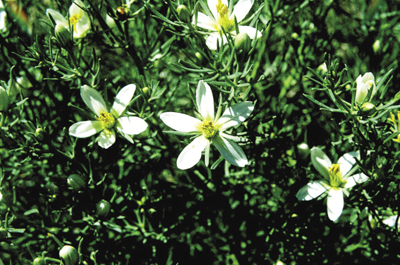
Figure 1A. African rue (Peganum harmala).
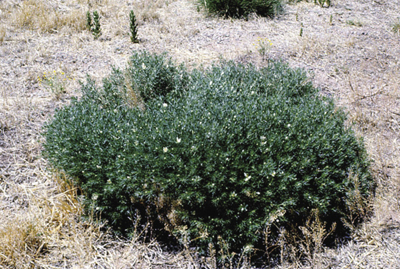
Figure 1B. African rue (Peganum harmala).
Description: Bright green, succulent, perennial forb about 1 foot tall when fully grown, with a woody rootstock; leaves are somewhat fleshy, alternate, and pinnately or bipinnately divided; flowers are white and showy with five petals; fruit is a many seeded leathery capsule about 0.4 inch in diameter, with two to four capsules.
Distribution and Habitat:A native of the deserts of Africa and southern Asia, African rue was first reported in the United States near Deming, NM, in 1935, and has since spread across southern New Mexico, Arizona, and west Texas.
Livestock Affected: Cattle and sheep. It is uncertain whether horses are affected.
Poisonous Principle and Toxicity : Alkaloids extracted from African rue have proven toxic to laboratory animals, producing the same symptoms as observed when the whole seed was fed. The seeds contain at least four alkaloids, of which three have the indole configuration. Fruits are the most toxic; a lethal dose is 0.15% of the animal’s body weight. Leaves are less toxic, requiring 1.0% of body weight to be lethal.
Signs of Poisoning: Loss of appetite, listlessness, weakness of hind legs, knuckling of fetlocks, stiffness, trembling, incoordination, and frequent urination.
Conditions of Poisoning: African rue is highly unpalatable to livestock, and the few cases of poisoning were reported on denuded ranges.
Alfalfa (Medicago sativa)
Legume/pea family (Fabaceae) (Figure 2)
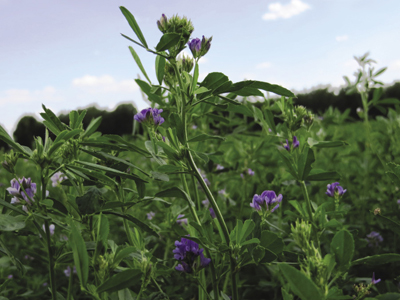
Figure 2. Alfalfa (Medicago sativa).
Description: Perennial, herbaceous flowering plant with deep taproot; stems are 18–36 inches long; leaves are pinnately compound with 3 leaflets; flowers are small with 5 petals, and usually blue to purple in color.
Distribution and Habitat: Widespread throughout the state’s farming areas as a hay crop; the most important hay crop grown in the state. Sometimes found as solitary plants or small populations along roadsides or in fallow fields.
Livestock Affected: Cattle, sheep, and goats and occasionally horses.
Poisonous Principle and Toxicity : Commonly causes bloat and acute respiratory distress syndrome (ARDS). Photosensitivity and estrogenic effects are of lesser importance.
Bloat: The lack of tannins allows rapid release of proteins from the highly digestible alfalfa, which increases the surface tension of the rumen fluid and results in the formation of foam as small gas bubbles are trapped. This foam prevents the normal release of gas from the rumen.
ARDS: Usually occurs when livestock are moved from low-quality forage or rangeland onto alfalfa hay land. The acute pneumonia-like disease appears in less than a week. The abrupt change in diet quality causes a spike in tryptophan, which is converted to compounds that are toxic to the pulmonary tissue.
Signs of Poisoning:Bloat: Rapid onset of ruminal distention, initially seen in the left flank of the animal, but soon involving the entire abdomen. The discomfort and colic cause the animal to lie down, roll, and kick at its abdomen. Labored, open-mouthed breathing along with protruding tongue and foamy salivation.
ARDS: Abrupt onset of labored breathing with loud grunting, frothy salivation, and development of subcutaneous emphysema along the neck and shoulders. Death usually occurs 1–2 days after onset of symptoms.
Conditions of Poisoning: Abrupt change in forage quality is usually a common factor with the onset of bloat and ARDS.
Bloat: Mechanically release the gas with a stomach tube or ruminal trocar. Feeding surfactants like poloxalene in blocks can effectively reduce the formation of the gas-trapping foam.
ARDS: Limiting the grazing time on the alfalfa field by rotating grazing between the alfalfa and rangeland or dry lot feeding of lesser-quality hay has been effective in limiting the occurrence of ARDS, as has feeding ionophores such as monensin or lasalocid at a supplementation rate of 200 mg/animal/day. Ionophores should be fed for 2–3 days before grazing alfalfa and continued while the animals are on the alfalfa field.
Arrowgrass (Triglochin maritima, T. palustris)
Arrowgrass family (Juncaginaceae) (Figure 3)
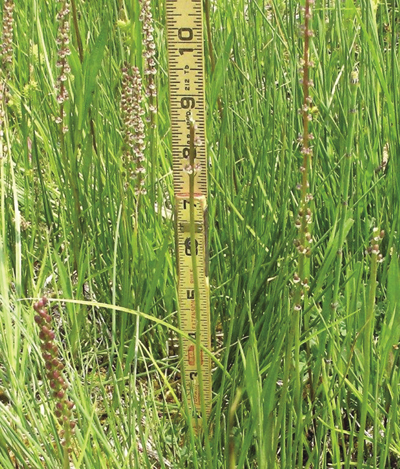
Figure 3. Arrowgrass (Triglochin sp.).
Description: Perennial, unbranched, grass-like plants 1–3 feet tall; leaves are basal, 6–18 inches long, linear, unjointed, somewhat fleshy; flowers are small, 0.125 inch long, greenish, inconspicuous individually, bunched together on the upper portion of the main flowering stem; seedpods are three-seeded, about 0.25 inch long, lobed, and oblong. Arrowgrass leaves are unlike grass leaves in that they are more fleshy and flat on one side and round on the other.
Distribution and Habitat: Both species are scattered throughout New Mexico in damp, wet, marshy areas. They are most abundant on saline and alkaline soils, and may be underwater or partially underwater for all or part of the growing season. Arrowgrass is commonly found growing abundantly with sedges, rushes, and slough grasses.
Livestock Affected: All classes are somewhat susceptible, but sheep and cattle are the most commonly poisoned.
Poisonous Principle and Toxicity: Triglochinin, a tyrosine-derived cyanogenic glucoside. Depending on the plants’ HCN (hydrocyanic acid) potential, the lethal dose of green plant material ranges from 0.1–0.5% of the animal’s weight (1–5 lb for a 1,000-lb animal). Triglochinin is non-cumulative in toxicity, and small repeated doses are of little risk.
Signs of Poisoning: Ingestion of arrowgrass produces the classic signs of cyanide intoxication: uneasiness, abnormal rapid breathing, muscle weakness, staggering and falling, possible dilation of eyes, bloating, convulsions, and coma followed by death. Poisoning by lethal amounts is followed so rapidly by death that animals are not commonly found alive or in time to administer an antidote.
Conditions of Poisoning: Poisoning is most common in spring on ranges where hungry livestock have little green forage to choose from. Poisoning from hay containing arrowgrass is also quite common.
If allowed to complete its life cycle with adequate moisture, arrowgrass accumulates little potentially toxic material. Arrowgrass growing under drought conditions has been found to be 5–10 times more toxic than arrowgrass that has been partially submerged throughout the entire growing season.
Plants are apparently poisonous at all times of the year, and both the leaves and the flowering structures contain the poison. Hydrocyanic acid is not cumulative, and for it to be fatal the animal must consume a lethal dose in a relatively short period (0.5–1 hour). Cases have been reported where cows, lacking salt, have consumed greater than normal amounts of arrowgrass because of its high salt content.
Bermuda Grass (Cynodon dactylon)
Grass family (Poaceae) (Figure 4)
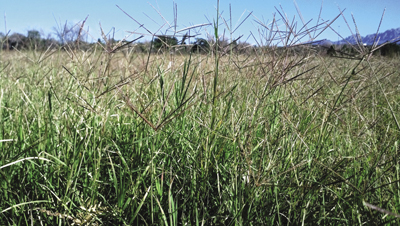
Figure 4. Bermuda grass (Cynodon dactylon).
Description: Introduced perennial sod grass that reproduces by seed, rhizomes, and stolons; internodes are flattened; seedheads have 3–6 purplish spikes in a whorled cluster; plants can form a dense mat.
Distribution and Habitat: Bermuda grass is a commonly planted pasture grass, especially in irrigated systems. Generally found across the southern desert and eastern plains areas of the state. This grass is considered a valuable pasture species under most conditions, but it is documented to occasionally cause poisoning.
Livestock Affected: Cattle.
Poisonous Principle and Toxicity: Of the six major intoxication problems associated with various species of grasses, Bermuda grass has been implicated in three of them. These include fungal endophyte toxicosis (“Bermuda grass staggers”), photosensitization, and acute respiratory distress syndrome (ARDS). The remaining possible intoxication problems—tetany, nitrate toxicosis, and cyanide toxicosis—are generally not attributable to Bermuda grass. Two of the toxic syndromes are related to fungal growth. The first syndrome—Bermuda grass staggers—results from an unknown tremorgenic mycotoxin produced by an endophyte. ARDS associated with Bermuda grass is the result of a sudden change in forage quality that causes an abrupt increase in L-tryptophan in the rumen where it is eventually converted by bacteria into 3-methylindole (3-MI), which is selectively toxic to the lung.
Signs of Poisoning: Bermuda grass staggers is typified by head bobbing, muscle tremors, incoordination, collapsing when forced to make quick movement, and inability to regain their feet. Removing cattle from the Bermuda grass pasture usually reverses the grass staggers. Photosensitization occurs when the liver is damaged. Removing cattle from the Bermuda grass pasture usually results in recovery. Both the staggers and photosensitivity can take up to 3 weeks for recovery. ARDS usually comes on rapidly, and cattle demonstrate severe breathing difficulty. Labored, open-mouthed respiration with frothy salivation and severe distress are typical.
Conditions of Poisoning: The staggers syndrome may result from the consumption of the stable toxin in hay or from pastures in the fall of the year. The second syndrome causes liver damage and secondary photosensitization when the pasture has a moldy thatch beneath it. The ARDS problem usually occurs when cattle are abruptly placed on extremely lush Bermuda grass pastures.
Bitterweed (Hymenoxys odorata)
Sunflower family (Asteraceae) (Figure 5)
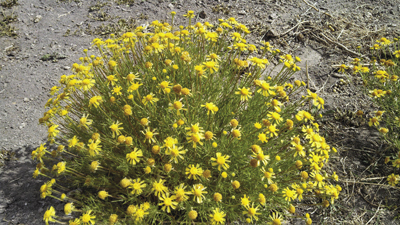
Figure 5. Bitterweed (Hymenoxys odorata).
Description: Erect annual forb up to 2 feet tall; stems are purplish near the base; leaves are alternate, entire to pinnately divided, glandular, and usually wooly on the underside; bright yellow flower heads occur at the tips of the long stems; fruit is a one-seeded, dry capsule (achene) with a crown of scales.
Distribution and Habitat: Bitterweed occurs in the southern half of the state and is more predominant in the southeastern quadrant. Soil disturbance accentuates its establishment and density.
Livestock Affected: Sheep are more often poisoned, goats occasionally, and cattle or horses rarely.
Poisonous Principle and Toxicity: Sesquiterpene lactones are the toxic constituents, and cause severe irritation of nasal and intestinal membranes. Only 1% of an animal’s weight in green plant material is lethal, whether ingested at one time or over a period of several months. Rapid consumption produces chronic symptoms and eventually death. Toxicity increases with maturity and under drought conditions.
Signs of Poisoning: Symptoms include depression, vomiting, salivation, and general weakness. A green salivary discharge is a typical range symptom. An arched back, difficulty walking, and teeth grinding are common. Affected animals should be removed from infected areas and given good-quality feed and clean water. They will likely make a slow recovery with such treatment. There is no treatment for poisoned animals. Symptoms usually appear after a month or so of access to the plant.
Conditions of Poisoning: Bitterweed increased dramatically on southwestern rangelands after 1900 because of overstocking and the destruction of perennial grasses and forbs. The first losses attributed to bitterweed were reported in 1920. Bitterweed is distasteful to range livestock; for this reason, it is probably difficult to find natural cases of poisoning in cattle, horses, or goats, although these animals can be poisoned experimentally. Under conditions of starvation, sheep will eat bitterweed and may develop a liking for it. If removed at the onset of symptoms, sheep may be expected to make an uneventful, though slow, recovery.
Black Locust (Robinia pseudoacacia)
Legume/pea family (Fabaceae) (Figures 6A and 6B)
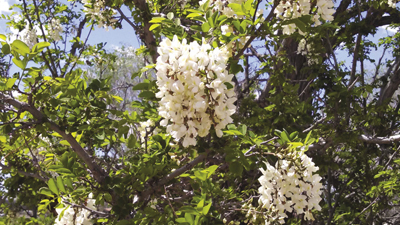
Figure 6A. Black locust (Robinia pseudoacacia).
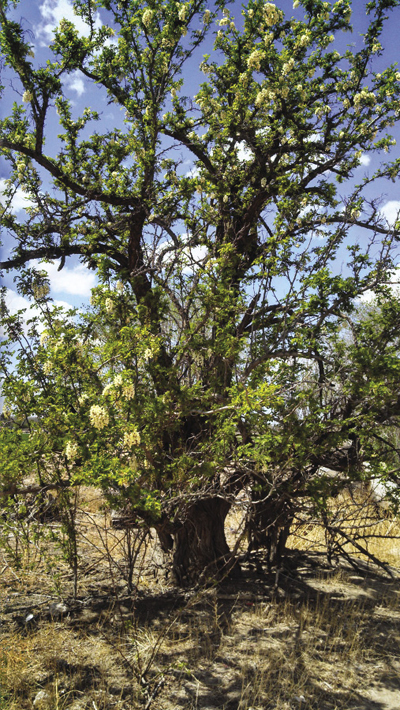
Figure 6B. Black locust (Robinia pseudoacacia).
Description: Introduced deciduous spiny tree with a height of 50 feet or more; spines on the young stems are unbranched, similar to rosebush thorns; leaves are pinnately compound and alternate, up to 6 inches long, with usually 7–19 leaflets arranged oppositely, each 0.5–2 inches long; bark is usually gray to reddish brown, thick, rough, ridged, deeply furrowed, sometimes twisted dark with a furrowed appearance; inner bark is yellow, with paired and scattered thorns; fragrant, abundant flowers have white petals in loose, hanging clusters with a yellowish center 4–8 inches wide; seed pods are flat, thin, and brown and may persist through the winter.
Distribution and Habitat: Black locust is found around old homesteads, abandoned fields, and along fence rows. A native of the eastern and southern states, it was a commonly planted ornamental in the early settlement of the state. The native New Mexico locust (Robinia neomexicana) has not been documented to be toxic.
Livestock Affected: All classes; horses are most at risk.
Poisonous Principle and Toxicity: The specific toxin is unknown, although a variety of toxins have been reported. Glycoprotein lectins and triterpene glycosides in the bark have been the most implicated compounds. Horses that consumed as little as 0.04% of their body weight in black locust bark showed Signs of Poisoning in 1–2 hours.
Signs of Poisoning: The signs of intoxication are primarily indicative of cardiac and gastrointestinal dysfunction. Signs most commonly seen include colic, diarrhea, weakness, depression, cold extremities, weak pulse, and irregular heartbeat. Horses and cattle will exhibit posterior paralysis. Necropsy lesions are usually restricted to reddening, edema, and small hemorrhages of the stomach mucosa.
Conditions of Poisoning: Poisoning was first described in horses when they were tied to black locust trees for prolonged periods. Boredom and hunger can cause the horses to strip bark from the trees. Most animals recover after removing them from the area. Complete recovery may take several weeks, and horses often founder and may develop laminitis.
Bracken Fern (Pteridium aquilinum)
Polypod fern family (Polypodiaceae) (Figure 7)
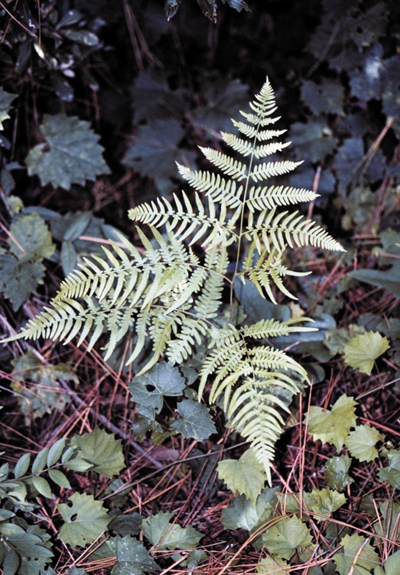
Figure 7. Bracken fern (Pteridium aquilinum).
Description: Large, coarse, perennial forb originating from stout, black, horizontal root stalks often more than 3 feet long; leaves are scattered, 1–4 feet long, 0.5–2 feet wide, borne on terminating erect, rigid, straw-colored stalks that are 1–3 feet tall; leaves are broadly triangular in outline, divided into three main parts, each part subdivided, the ultimate segments oblong, the upper undivided, and the lower lobed; fruiting bodies appear as small circular dots on the underside of mature leaves.
Distribution and Habitat: Scattered throughout New Mexico mountains on burned areas, woodlands, and shaded areas; has an affinity for sandy or gravelly soils.
Livestock Affected: All classes.
Poisonous Principle and Toxicity: 1. Thiaminase, which destroys thiamin (vitamin B1), essential in energy metabolism. Horses and swine must consume a diet containing 3–5% bracken fern for 30 days before symptoms appear (generally central nervous system depression). Ruminants are generally not affected by thiaminase in bracken fern. 2. Ptaquiloside, a norsequiterpene glycoside with carcinogenic and bone marrow depressant effects.
Signs of Poisoning: Horses exhibit a loss of weight and condition, coupled with progressive incoordination. Animals become drowsy and depressed and will stand in a crouching position with legs apart and back arched. Muscles begin to twitch, ending in severe tremors; pulse becomes weak and fast; convulsions or spasms set in; and death soon follows. Inspection of poisoned animals reveals no characteristic gross lesions. Ruminant animals exhibit a rough hair coat, high temperature, difficult breathing, loss of appetite, increased salivation, depression, nasal and rectal bleeding, blood in urine, and hemorrhages of mucous membranes. The disease is of short duration, and poisoned cattle usually die.
Conditions of Poisoning: Losses can occur by either eating hay containing high amounts of bracken fern or when livestock are grazed on ranges where the more desirable species are scarce. This is especially true in late summer to fall when most range grasses have dried up and become less palatable. Both the dried and green leaves of bracken fern are poisonous. Livestock have been poisoned by eating rhizomes of bracken fern; these rhizomes are about five times as toxic as the leaves.
Buckwheat
Wild Buckwheat (Polygonum convolvulus; Figure 8A) Knotweed (P. aviculare; Figure 8B)
Buckwheat family (Polygonaceae)

Figure 8A. Wild buckwheat (Polygonum convolvulus).
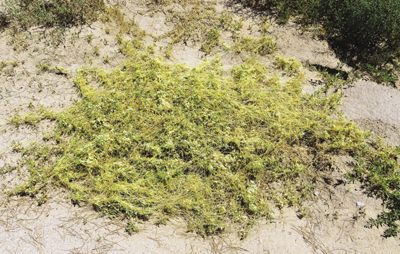
Figure 8B. Knotweed (Polygonum aviculare).
Description: Perennial or annual forbs or herbaceous vines; stems are prostrate (P. aviculare) or erect (P. convolvulus), jointed with swollen nodes; leaves are simple and alternate, margins entire; flowers are in racemose or spicate panicles or axillary clusters with 4–6 petaloid sepals; fruit is a shiny black or brown achene.
Distribution and Habitat: Wild buckwheat is usually found in disturbed sites and roadsides across the state; is an introduced annual seen along roadsides throughout North America. Knotweed is a native found across the state as a weed in lawns; it is very tolerant of trampling and also occupies waste areas and weedy sites.
Livestock Affected: Primarily sheep and cattle, but horses have also been affected.
Poisonous Principle and Toxicity: While the genus Polygonum is not commonly thought of as a cause of intoxication, they have been implicated in livestock deaths or photosensitization in other countries (United Kingdom, Australia, and Argentina). Photosensitivity is more common.
Signs of Poisoning: Reddening, swelling, edema, and sloughing of the skin of the udder and teats, and the less-haired or lighter-pigmented skin. There is usually a distinct demarcation of the affected areas, ending abruptly at the edge of the darker skin. Diarrhea, restlessness, agitation, loss of appetite, and increased respiratory rate may accompany the photosensitization.
Conditions of Poisoning: Moving livestock into areas or pastures containing Polygonum species from areas without these species has been the primary circumstance leading to the intoxication of livestock. Removing affected animals to a buckwheat-free area is the only remedy. Recovery of photosensitized animals is quite slow.
Burroweed
Burroweed (Isocoma tenuisecta; Figure 9A) Rayless Goldenrod/Jimmyweed (I. pluriflora; Figures 9B and 9C)
Sunflower family (Asteraceae)
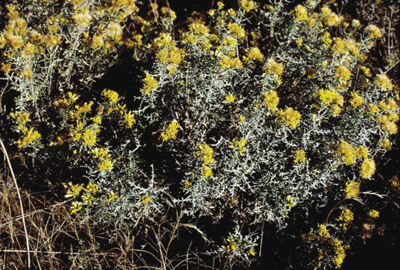
Figure 9A. Burroweed (Isocoma tenuisecta).
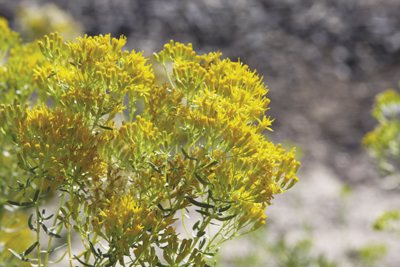
Figure 9B. Rayless goldenrod or Jimmyweed (Isocoma pluriflora).
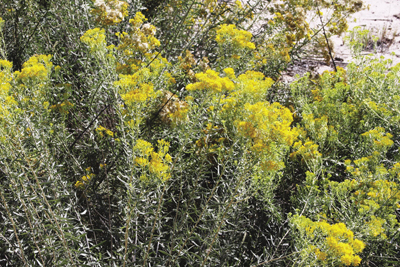
Figure 9C. Rayless goldenrod or Jimmyweed (Isocoma pluriflora).
Description: Semi-woody half-shrubs; rayless goldenrod/Jimmyweed will grow up to 4 feet tall; burroweed grows 1–2 feet tall; leaves are alternate, narrow, and divided into linear lobes, and are resinous and sticky; the yellow flowers are borne in flat-topped clusters; mature flowers produce a crop of seeds with numerous short bristles.
Distribution and Habitat: Rayless goldenrod/Jimmyweed is common throughout the state, particularly along roadsides and in areas such as river drainages and irrigation canals. It has been a particular problem along the Pecos Valley drainage in southeastern New Mexico. Burroweed is found mainly in southwestern New Mexico in Grant, Luna, and Hidalgo Counties. It grows on plains, mesas, and hillsides at elevations of 2,000–6,000 feet, and is most abundant on depleted ranges.
Livestock Affected: All classes of livestock are subject to poisoning, and calves and lambs may be poisoned from the milk of poisoned dams. In some instances, calves may die from the milk of the poisoned dam before she shows symptoms. The poison can be transmitted to humans through the milk of the cow, causing milk sickness in humans.
Poisonous Principle and Toxicity: The compound tremetone, or tremetol, is the toxin involved. It is similar to the compound found in white snakeroot (Ageratina altissima). Tremetone is secreted in the dam’s milk and is present in both the green and dry leaves, making these plants poisonous at all times. The poison is cumulative, with toxic doses in the neighborhood of 1–1.5% of the animal’s body weight accumulated over a week. Tremetol has been shown to impair the tricarboxylic acid (TCA) cycle and glucose utilization.
Signs of Poisoning: Burroweed and rayless goldenrod/Jimmyweed produce the disease known as trembles in livestock, named for the violent trembling of afflicted animals. Muscular trembling is particularly noticeable around the nose and hips and over the shoulders, especially after exercise. The animal will stand in a humped-up position and move with a stiff gait. Stiffness and weakness are most emphasized in forelegs. As poisoning progresses animals become weaker and inactive, lie down, and eventually are unable to rise. Other symptoms are constipation, vomiting, quickened and labored breathing, and dribbling of urine.
Conditions of Poisoning: Burroweed and rayless goldenrod/Jimmyweed are generally low in palatability. Precautions must be taken in winter when snowfall covers better forage plants and burroweed is the only plant available. Native livestock apparently become sickened from eating the plant and tend to avoid it. An adequate supply of good feed during harsh times when livestock are more prone to consume burroweed may reduce its consumption.
There is no definite medicinal treatment for poisoned animals. They should be removed from the area and fed good-quality hay and given clean water. Veterinarians have found the intravenous administration of glucose and calcium gluconate to be helpful. The use of purgatives, stimulants, and laxative feeds may help the animal recover. Oral administration of activated charcoal, at 1 g/kg of body weight, shows promise as a treatment. Calves and lambs should be taken off poisoned dams, the mothers milked out, and the milk thrown away. The most important consideration is alleviating the severe ketosis and acidosis accompanying ingestion of these species. This may be accomplished by administering parenteral carbohydrates for control of the low glucose levels in the blood. To prevent enterohepatic recycling, activated charcoal may be given orally (2–3 g/kg body weight) to reduce reabsorption of the toxin, including that eliminated in the bile. It is critical that livestock are not permitted to access the plants during recovery.
Chinaberry (Melia azedarach)
Mahogany family (Meliaceae) (Figure 10)
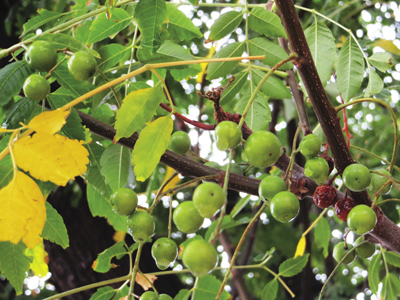
Figure 10. Chinaberry (Melia azedarach).
Description: Deciduous tree up to 50 feet tall with a stout trunk and spreading round crown; bark is usually dark with a furrowed appearance; stems are smooth; leaves are large, up to 15 inches long, with leaflets up to 3 inches; loose clusters of aromatic purple flowers yield hanging clumps of smooth single-seeded fruits 0.5–0.75 inch in diameter; the fruit ripens to yellow in the fall and usually persists through the winter.
Distribution and Habitat: Chinaberry is an introduced ornamental tree found throughout New Mexico.
Livestock Affected: All classes. Pigs are most commonly affected from consuming fallen fruit.
Poisonous Principle and Toxicity: Toxicity is due to several tetranortriterpenes called meliatoxins A1, A2, B1, and B2, which have been isolated from the fruit. The bark, leaves, and flowers are also poisonous.
Signs of Poisoning: Intoxication causes increased salivation, retching, vomiting, anorexia, and diarrhea. Early excitement is followed by paralysis along with digestive disturbance. Respiration is labored and irregular. More serious signs include weakness, muscle cramps, ataxia, and tetanic- or clonic-type seizures. Death may occur without obvious digestive disturbance. Gaseous distension of the stomach occurs in the final stages of poisoning.
Conditions of Poisoning: Hogs and dogs are the most commonly poisoned animals, usually in the fall from consuming fallen fruit. Interestingly, early literature attributes medicinal value to Chinaberry extract for horses in controlling intestinal parasites, especially stomach bots (Gasterophilus spp.).
Chokecherry (Prunus virginiana)
Rose family (Rosaceae) (Figure 11)
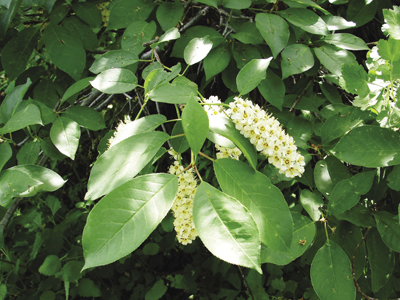
Figure 11. Chokecherrry (Prunus virginiana).
Description: Large, erect shrub or tree up to 20 feet tall; young twigs are red to brown and covered with light-colored dots (lenticels); leaves are dark green, 2–4 inches long, and 1–2 inches wide, usually oval with a pointed tip, rounded base, and saw-toothed margins; flowers are small and yellow-white, occurring in dense clusters as a cylindrical raceme; fruit is dark red to black, about 0.4 inch in diameter. Other members of the genus known to be toxic include pin cherry (P. pensylvanica) and wild black cherry (P. serotina).
Distribution and Habitat: Found throughout the state on moist soils of riverbanks, valleys, and hills.
Livestock Affected: Potentially poisonous to all classes of livestock and wildlife, but sheep and cattle are most often affected.
Poisonous Principle and Toxicity: Chokecherries contain two cyanogenic glycosides: amygdalin in the seed and prunasin in the leaves and stems. Leaves contain the highest concentration of cyanogenic glycosides. There is little or no free hydrocyanic acid (HCN) in plant tissues. Therefore, test results measuring HCN traditionally refer to “HCN potential.” The cyanogenic glycosides and hydrolytic enzymes found in the plant tissue are activated by chewing and are converted to hydrocyanic (prussic) acid. A 200 ppm HCN potential in plant tissue is hazardous. Consuming 0.25% of the animal’s weight (2.5 lb for a 1,000-lb animal) in fresh green leaves is usually fatal to cattle. Sheep often die from eating as little as 0.25 lb of fresh green leaves.
Signs of Poisoning: Rapid onset (within 15 minutes) of symptoms, including uneasiness, abnormal breathing (either rapid or slow), muscle weakness, staggering and falling, possible dilation of eyes, bloating, convulsions, and coma followed by death. Lethal dosage is followed so rapidly by death that animals are not commonly found alive or in time to administer an antidote.
Conditions of Poisoning: Problems from poisoning arise in early spring. At this time, the more preferred species are still scarce, the chokecherry leaves are green and succulent, and the concentrations of hydrocyanic acid are highest. Hydrocyanic acid is not cumulative, and for it to be fatal the animal must consume a lethal dose in a relatively short period (0.5–1 hour). Poisoning can be intensified when animals consume water soon after eating chokecherry.
By the end of summer, chokecherry leaves have lost their toxicity. The fleshy fruit of chokecherry is not poisonous, although eating pits has been reported to cause death, and should be a concern from the standpoint of human health.
Cocklebur (Xanthium strumarium, X. spinosum)
Sunflower family (Asteraceae) (Figure 12)
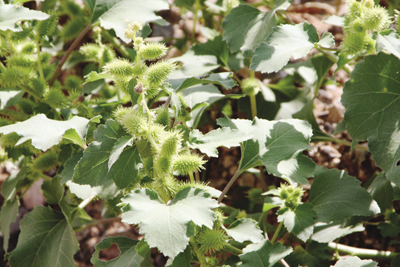
Figure 12. Cocklebur (Xanthium sp.).
Description: Coarse annual forb with alternate, rough, broad, triangular leaves; has separate male and female flowers on the same plant, the male flowers are in dense clusters at the ends of the stems and the female flowers occur in clusters in the leaf axils; fruit is a hard, two-celled, two-beaked bur covered with stiff, hooked barbs and contains two seeds.
Distribution and Habitat: Cockleburs are common annual weeds throughout the state. They are more common in disturbed areas along roadsides and around water holes.
Livestock Affected: All classes of livestock are susceptible.
Poisonous Principle and Toxicity: Diterpene glycosides, most notably carboxyatractyloside (CAT), are the primary toxins involved and produce hypoglycemia in poisoned animals. CAT inhibits ADP translocase in cellular mitochondria; inhibition of oxidative phosphorylation and ATP formation also occurs. A variety of tissues are affected, including brain and liver.
The seeds contain the toxic substance CAT, but are rarely eaten. Upon germination, the toxic principle is distributed to the seedling and remains through the cotyledon stage. The concentration drops quickly as the first true leaves develop. A toxic dose of seedlings is 0.75–1.5% of the animal’s body weight. Poisoning is apparent within 12–48 hours. After onset of symptoms, death can occur within a few hours to several days. Toxicity is not lost through drying.
Signs of Poisoning: Symptoms include weakness, depression, an unsteady gait when moving, rapid and labored breathing, weak and rapid pulse, below-normal body temperature, nausea, and vomiting. Prostrated animals convulse and make running motions with their legs, or show a marked backward curvature of the neck. Poisoned animals have a sharp decrease in blood glucose with an increase in liver enzymes. Postmortem findings include degenerative changes in liver and kidney, hemorrhages on the heart and elsewhere, and moderate irritation of the stomach and intestines.
Conditions of Poisoning: Cocklebur often grows in areas under water for long periods of time but that dry out during the summer. These conditions are found along streams or around farm ponds. It should be stressed that the toxins in cocklebur are very potent disrupters of cellular function and cannot normally be treated. There is no specific treatment to counteract the ADP/ATP mitochondrial imbalance. Parenteral glucose and bicarbonate are reported to be helpful but not curative. Fatty diets may offer some protection from the ingestion of sprouts. Giving animals, especially swine, fatty substances such as cream, lard, or linseed oil has had some limited success in treating poisoned animals. Linseed oil should be administered through a stomach tube to avoid producing inhalation pneumonia.
Copperweed (Oxytenia acerosa)
Sunflower family (Asteraceae) (Figure 13)

Figure 13. Copperweed (Oxytenia acerosa).
Description: Slender-stemmed erect perennial 3–6 feet tall, somewhat woody at the base, with narrow, threadlike leaves; flowers, borne in July–September, occur in dense panicles with many white discoid heads; 10–20 inner flowers are sterile and staminate, with white corollas and distinct anthers; the plant also has about 5 outer flowers without corollas; erect green to grayish stems have alternate leaves, often entire on the upper portion of the stem, with lower leaves pinnately parted into 3–5 long filiform lobes.
Distribution and Habitat: Copperweed occurs in the western and northwestern areas of the state on dry plains and valleys, frequently on alkaline soils. Normally found at elevations of 3,500–6,500 feet.
Livestock Affected: Cattle, with sheep being less susceptible.
Poisonous Principle and Toxicity: The specific toxin(s) have not been identified, but pseudoguaianolide sesquiterpene alkaloids are common in this genus, and the clinical signs are consistent with the effects of these types of compounds.
Signs of Poisoning: Symptoms include weakness, depression, and anorexia followed by coma. In some instances, there may be signs of struggling, nervousness, or excitement. The lesions are not distinctive, but include small hemorrhages of the mucosa of the abomasum and small intestine and congestion of the liver. Microscopic, degenerative changes in the liver include cloudy swelling and fatty change.
Conditions of Poisoning: First recognized as a problem in the early 1920s, poisoning by copperweed has been a sporadic problem across southwestern ranges, affecting cattle and, to a lesser extent, sheep. The plant is eaten only when other forage is scarce. Most cases of intoxication involve trailing cattle from summer range to lower-elevation winter range in the fall. The foliage is especially toxic, and the leaves remain poisonous after leaf fall, when sheep appear to be more susceptible. Early literature documented two-thirds of affected animals died within 7–10 days. Affected animals rarely recover. The lethal dose for cattle is about 0.5% of body weight, and 1% of body weight in sheep. There is no specific treatment.
Death Camas (Zigadenus elegans, Z. paniculatus, Z. venenosus)
Lily family (Liliaceae) (Figure 14)
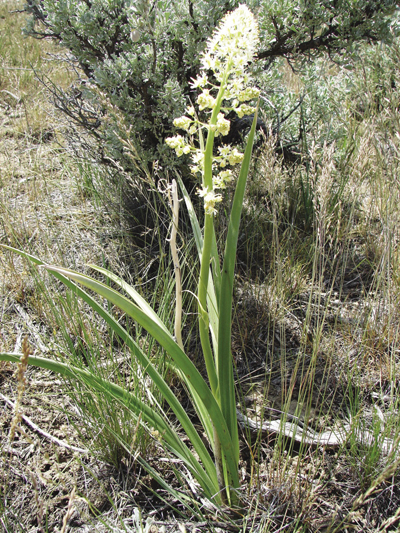
Figure 14. Death camas (Zigadenus sp.).
Description: Slender, perennial forbs 8–24 inches tall, growing from an onion-like bulb 1–1.5 inches long and 4–6 inches below the ground; stems are single and unbranched and produced at time of flowering; leaves are basal, grass-like, smooth, 8–26 inches long, 0.15–0.5 inch wide, V-shaped in cross section; flowers are whitish to yellow and borne along the main stem.
Death camas are often confused with the nonpoisonous wild onion, but can easily be distinguished by its lack of the characteristic onion odor.
Distribution and Habitat: Found throughout the state in moist meadows and pastures at elevations over 7,000 feet.
Livestock Affected: Sheep, although all classes are somewhat susceptible.
Poisonous Principle and Toxicity: Zygadenine and several other complex alkaloids. Toxic levels for sheep are between 2 and 2.5 lb (green weight basis) per 100 lb of body weight. As little as 0.1 lb of death camas seeds can kill a mature cow.
Signs of Poisoning: Increased salivation, nausea followed by vomiting, increased rate of breathing, initial rise in body temperature that soon falls below normal, weakness and staggering, and coma frequently followed by death. Colic and grinding of the teeth accompany the excess salivation, especially in cattle and horses. Cattle and horses usually recover in a day or two.
Conditions of Poisoning: Death camas is the most important of all poisonous plants in spring. It begins to grow early, and if there is a lack of other better forage, animals will eat death camas. At this time there may be high losses. The bulbs of death camas are extremely poisonous, but are rarely pulled up by grazing animals. All parts of the plant are poisonous at all times, but after the plant blooms, it soon withers and sheep seldom eat it. People are sometimes poisoned by eating the bulbs of this plant, mistaking them for wild onions. Death camas does not have the characteristic onion aroma. Atropine (2 mg) and picrotoxin (8 mg) are the recommended treatment for range sheep. Preparations of this mixture were, at one time, referred to as death camas tablets.
Desert Baileya (Baileya multiradiata)
Sunflower family (Asteraceae) (Figure 15)
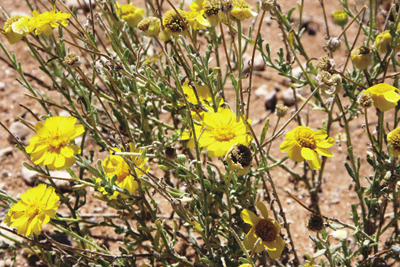
Figure 15. Desert Baileya (Baileya multiradiata).
Description: Also known as desert marigold; annual or weak perennial forb 1–1.5 feet tall that grows from a taproot; leaves are alternate and covered with dense wooly hairs; flowers are yellow and very showy and arise from long stalks with a leafy base.
Distribution and Habitat: Found throughout the desert areas of southern New Mexico. Usually found on sandy or shallow sandy range sites at elevations below 5,500 feet.
Livestock Affected: Sheep and goats.
Poisonous Principle and Toxicity: Paucin, a pseudoguaianolide glucoside, has been found in concentrations as high as 0.04%. Hymenoxon is another pseudoguaianolide glucoside present in desert Baileya and suggests that its toxicity is most likely another expression of the disease commonly associated with Hymenoxys spp. (bitterweed and pingue) and Helenium spp. (sneezeweeds).
Signs of Poisoning: The first sign of poisoning is a frothy green salivation, followed by extreme weakness, a rapid heartbeat, and trembling limbs. Poisoned animals follow the flock with a stiff gait and show marked weakness. Other symptoms include a rapid, pounding heartbeat, often audible without a stethoscope. Affected sheep show trembling and loss of appetite. They also show an arched back when standing, and lie down and are unresponsive. There are no distinctive lesions, but there may be a few ecchymotic hemorrhages on the heart and diaphragm.
Conditions of Poisoning: Desert Baileya was first documented as being toxic in the 1930s, with extensive (exceeding 25%) mortality in flocks. Palatability varies considerably, but the flowers are relished by sheep. Because the flowers are more toxic than the leaves, toxicity increases with maturity. Removing livestock from the infested range and providing nursing care is the only remedy at this time. Herbicidal and mechanical control measures are not economically practical.
Dock (Rumex crispus)
Buckwheat family (Polygonaceae) (Figure 16)
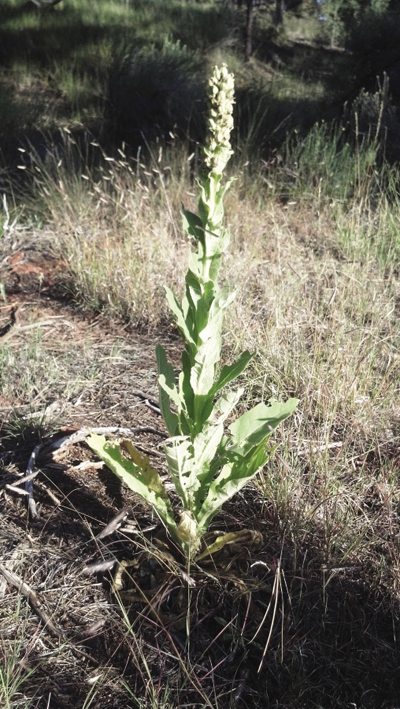
Figure 16. Dock (Rumex crispus).
Description: Also known as lengua de vaca (cow’s tongue); a perennial forb with a rosette of basal leaves; leaves are alternate with entire margins; flowering stalk is upright; flowers are small and greenish and arranged in dense clusters on elongated stems; fruit is a three-sided capsule containing a single black seed.
Distribution and Habitat: Dock is common across the state, especially in the higher elevations that have seasonally wet areas.
Livestock Affected: Cattle and sheep.
Poisonous Principle and Toxicity: Oxalic acid concentrations of 6–11% have been measured. The concentration of soluble oxalates increases as the plant matures. Rumen microflora can become adapted to low levels of oxalates over a period of several days.
Signs of Poisoning: The onset of poisoning is sudden, within 8–12 hours after animals begin grazing a new pasture containing dock. Typically, there is depression, excessive salivation, a staggering gait, and tremors of the head, neck, and legs. Walking is difficult, and the animals frequently fall and struggle to rise. Respiration is labored, and prostration comes quickly.
Conditions of Poisoning: Poisoning occurs when non-adapted livestock consume a large amount of oxalate. Calcium oxalate crystals are deposited in the kidneys and along the walls of blood vessels. Prompt treatment with parenteral calcium solutions results in immediate relief of many of the symptoms, and the animals become ambulatory within a few hours. Acute renal failure may occur, and a veterinarian will be needed to treat those animals.
Dogbane (Apocynum cannabinum, A. × floribundum)
Dogbane family (Apocynaceae) (Figure 17)
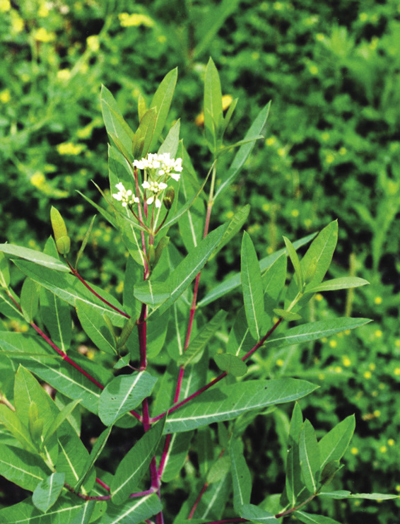
Figure 17. Dogbane (Apocynum sp.).
Description: Perennial forb with simple, opposite leaves with entire margins and no stipules; small flowers with white, pink, or greenish petals borne in terminal, compound cymes; plants often form colonies via root sprouts.
Distribution and Habitat: Dogbane (A. cannabinum) is found throughout the United States; in New Mexico it is found in moist soils along ditches and waterways and in irrigated fields. Dogbane is common in older hay fields and can be incorporated into hay bales fed to livestock. Western dogbane (A. × floribundum) is restricted to the western states and is found on a variety of range sites, from moist soils to rocky sites. Both species spread from horizontal rootstalks and can form dense stands.
Livestock Affected: All classes; horses are most susceptible.
Poisonous Principle and Toxicity: Toxicity is due to cardiotonic glycosides such as cymarin, the glycoside found in apocynamarin or cynotoxin, and glycosides of strophanthidin. The cardiotoxins are similar to the glycosides in foxglove (Digitalis spp.), the toxic effects of which may include arrhythmias as well as cardiac conduction and function. In addition to being cardioactive, these glycosides have emetic and diuretic activity. All parts of the plant are toxic, but are likely to be hazardous only when the tender new shoots are consumed or when the plant is baled with hay. The literature indicates that, in general, dogbane is low in toxicity.
Signs of Poisoning: The first and most consistent sign is diarrhea with blood in some cases. Cardiac insufficiency, weakness, cold extremities, bradycardia, and arrhythmias are also usually present. Compaction may also be present because of the highly fibrous nature of the plant.
Conditions of Poisoning: Almost always associated with hay fields and when baled with hay.
Fiddleneck (Amsinckia menziesii var. intermedia)
Forget-me-not family (Boraginaceae) (Figure 18)
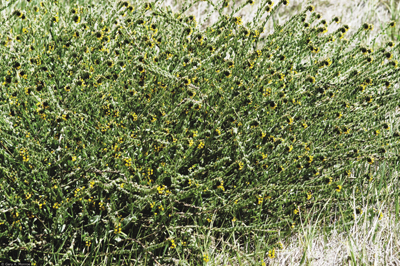
Figure 18. Fiddleneck (Amsinckia menziesii var. intermedia).
Description: Annual forb, usually erect, with basal leaves that are linear or narrowly ovate; flowers are tubular with 5 sepals and yellow to orange petals; fruits are nutlets.
Distribution and Habitat: Also known as scorpion weed, this annual forb is found throughout the southern desert ecosystems in New Mexico.
Livestock Affected: Horses; pigs and cattle are less susceptible.
Poisonous Principle and Toxicity: Fiddleneck contains a mixture of diesters and monoesters of the pyrrolizidine alkaloid, retronecine. The toxic dosage requirements are high.
Signs of Poisoning: Signs of intoxication are most distinctive in horses and begin with the refusal of grain, and icterus (jaundice) and oral ulcers. Thereafter, the animals may be unthrifty, sluggish or sleepy, and emaciated and may have distended abdomens due to fluid accumulation. Often there are periods of furious delirium or restlessness with incessant and aimless walking. Horses eventually become comatose and die. Other species do not show the nervousness that horses exhibit.
Conditions of Poisoning: Most cases in New Mexico involve horses that are confined to areas lacking forage. These animals are generally fed harvested forage such as hay and graze the fiddleneck plants from boredom or curiosity.
Field Bindweed (Convolvulus arvensis)
Morning glory family (Convolvulaceae) (Figure 19)
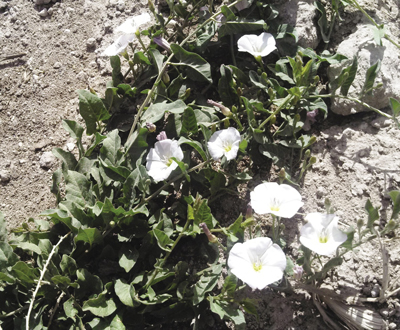
Figure 19. Field bindweed (Convolvulus arvensis).
Description: Perennial, prostrate forb with a tendency to form tangles around other plants or vertical supports, creating a dense mat covered with white or pink flowers; leaves are alternate and arrow-shaped; the root system is extensive, penetrating to depths of 10 feet; fruits are round capsules containing 4 brown seeds, flattened on two sides.
Distribution and Habitat: A native of Europe, field bindweed is an aggressive weed in cultivated fields, along roadsides, and in waste areas throughout most of North America.
Livestock Affected: All livestock are potentially affected.
Poisonous Principle and Toxicity: Field bindweed accumulates nitrates. It also contains various tropane alkaloids, including pseudotropine, tropine, tropinone, and cuscohygrine. Pseudotropine is the predominant alkaloid and affects smooth muscle activity. The purgative action of field bindweed is due to a resinoid, convolvulin.
Signs of Poisoning: Diarrhea, which can occur with small amounts of field bindweed in the diet, is the most common symptom. Large amounts of the plant in the diet will cause a decrease in stomach and intestinal motility. Secondary ulcerative lesions may be present.
Conditions of Poisoning: Drought and fallow fields are the most common conditions resulting in livestock consuming field bindweed.
Filaree (Erodium cicutarium)
Geranium family (Geraniaceae) (Figure 20)
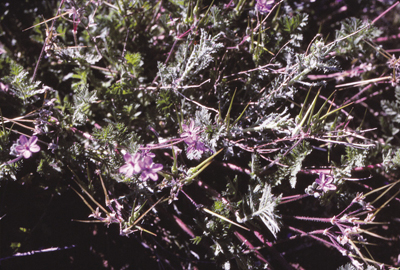
Figure 20. Filaree (Erodium cicutarium).
Description: Introduced, low-growing annual forb usually less than 6 inches tall; leaves are somewhat hairy, alternate, and pinnately divided (fern-like); flowers are in clusters on slender stalks arising from leaf axils, lavender in color, blooming from February–July; fruit is a spindle-shaped capsule with a sharp, pointed base and a tail that coils at maturity.
Distribution and Habitat: Filaree grows on the plains and mesas throughout the state, generally at elevations below 7,000 feet. Some growth occurs in fall and winter, but most occurs in the spring.
Livestock Affected: Cattle.
Poisonous Principle and Toxicity: Filaree is normally a valuable forage plant that furnishes good forage in both the green and dry state. However, plants occasionally become cyanogenic after a light frost. Nitrate concentrations as high as 4.25% have been measured during early spring. Photosensitization in calves has also been reported. There have been several instances of heavy losses of cattle in New Mexico.
Signs of Poisoning: Symptoms are typical of hydrogen cyanide (HCN) and/or nitrate poisoning.
Conditions of Poisoning: Filaree poisoning is usually a problem in early spring before other forage plants have greened up. The combination of cold nights and warm days increases the nitrate concentration in the plant.
Golden Corydalis (Corydalis aurea)
Poppy family (Papaveraceae) Fumitory subfamily (Fumarioideae) (Figure 21)
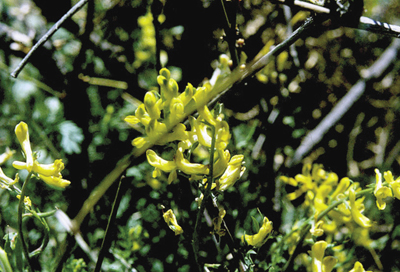
Figure 21. Golden corydalis (Corydalis aurea).
Description: Spreading yellow-flowered annual forb; leaves are 1 or 2 pinnately compound; stems are pale or whitish and leafy; the yellow flowers are irregularly shaped and spurred at the base; flowering occurs from February–May; flowers occur in loose clusters at the branch ends; seeds are black and shiny.
Distribution and Habitat: Occurs statewide, often in disturbed areas. It is more prevalent on sandy sites. It is particularly a problem during a wet spring.
Livestock Affected: Cattle and sheep are the only documented susceptible livestock.
Poisonous Principle and Toxicity : Numerous isoquinoline alkaloids are involved in toxicity. Sheep that have eaten around 2% of their body weight can exhibit Signs of Poisoning. Cumulative in action, consuming less than 5% of the animal’s weight is fatal.
Signs of Poisoning: Clinical signs appear within minutes and include uneasiness, rapid respiratory and heart rates, and twitching of the lips, face, and eyelids. Staggering, collapse, and seizures are the final symptoms observed before death. Animals consuming sub-lethal amounts of the plant usually recover quickly.
Conditions of Poisoning: Wet winters and springs cause a flush of growth of golden corydalis. Once the plants mature and die, livestock quit grazing the plant and the danger is over. Goats seem to be very resistant to golden corydalis poisoning and perhaps can be used as a tool of targeted grazing in reducing the danger.
Goldeneye
Annual Goldeneye (Viguiera annua; Figures 22A and 22B)
Showy Goldeneye (V. multiflora)
Sunflower family (Asteraceae)
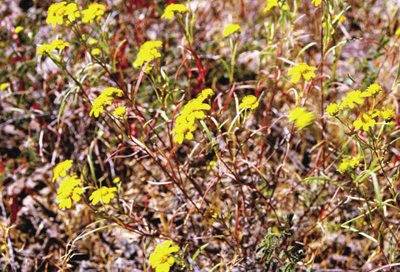
Figure 22A. Annual goldeneye (Viguiera annua).
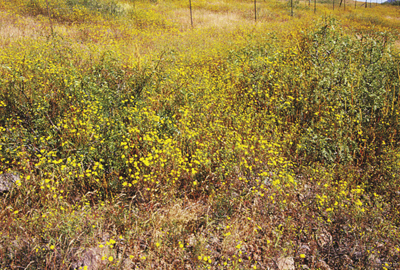
Figure 22B. Annual goldeneye (Viguiera annua).
Description: Erect branching forb 1–2 feet tall; leaves are narrow, opposite, entire, 1–1.5 inches long; plants have yellow sunflower-like heads about 1 inch in diameter.
Distribution and Habitat: Annual goldeneye is a weed on ranges at elevations up to 7,000 feet. It grows on hills, plains, and river bottoms in southwestern to west-central New Mexico. It flowers from May to October and often colors the landscape with a brilliant yellow. Showy goldeneye is a perennial and occurs at higher elevations in piñon and juniper woodlands.
Livestock Affected: Cattle are the only livestock known to be poisoned.
Poisonous Principle and Toxicity: The poisonous principle is unknown, but symptoms suggest prussic acid.
Signs of Poisoning: The first symptoms are deep, rapid breathing that progresses from labored to violent gasping. The animals tremble, stagger, and fall in convulsions. Animals that show symptoms should not be disturbed unnecessarily or watered. In borderline cases, the animal may recover in an hour or so if not excited. A glucose drench may be beneficial.
Conditions of Poisoning: Poisoning occurs mainly in fall when flowering and growth are abundant, or when other feed is scarce. Small amounts may be lethal.
Gray Horsebrush (Tetradymia canescens)
Sunflower family (Asteraceae) (Figures 23A and 23B)
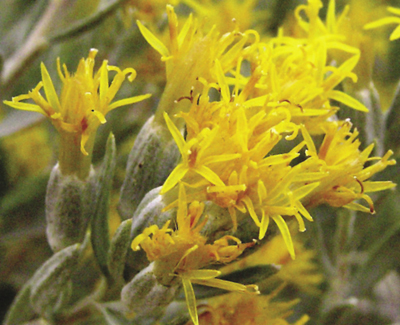
Figure 23A. Gray horsebush (Tetradymia canescens).
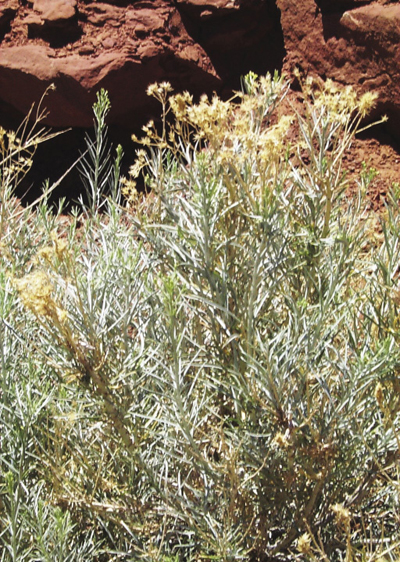
Figure 23B. Gray horsebush (Tetradymia canescens).
Description: Highly branched, woody shrub 6–36 inches tall; leaves and twigs covered with a fine mat of white hairs; leaves are linear, narrow, simple, and alternate, 0.5–1 inch long; only has yellow disc flowers, 4 in a head; heads occur in small clusters terminating on short supporting stalks.
Distribution and Habitat: Scattered throughout the state on dry open areas in foothills and plains.
Livestock Affected: Sheep.
Poisonous Principle and Toxicity: Evidence suggests toxicity seems to be due to furanoeremophilane derivatives, which are similar to the sesquiterpene lactones. Tetradymol is the most prevalent of these derivatives. The liver is unable to clear the photodynamic chlorophyll derivative phylloerythrin. Consumption of 1.25 lb of leaves and stems will cause bighead, a condition involving photosensitization and characterized by swelling of the head, neck, ears, eyelids, and nose. These signs appear within 24 hours after ingestion. Many ewes abort and become sterile after eating a sub-lethal dose.
Signs of Poisoning: In sheep, the disease is called “bighead” because of the swelling it produces in the face, ears, and lips. The swelling may be so severe that the skin cracks and serum exudes from the skin. Liver damage is usually severe.
Conditions of Poisoning: Photosensitization is more severe in light-skinned animals. This condition is greatly intensified when the affected animal has been exposed to direct sunlight.
Because gray horsebrush is an unpalatable species, toxic levels occur only when sheep are forced to eat it. This usually happens on overgrazed ranges lacking more desirable species, or when animals are trailed and not allowed to practice selective grazing. Gray horsebrush produces new growth in early spring when most of the better range plants are still scarce. This, combined with the fact that its toxicity is greatest at this time, makes spring the most dangerous season. There is an apparent interaction with sagebrush (Artemisia spp.), which grows on the same range as horsebrush and influences the hepatic mixed-function oxidase pathway. The overall effect is a debilitating liver disease.
Greasewood/Chico (Sarcobatus vermiculatus)
Goosefoot family (Chenopodiaceae) (Figures 24A and 24B)
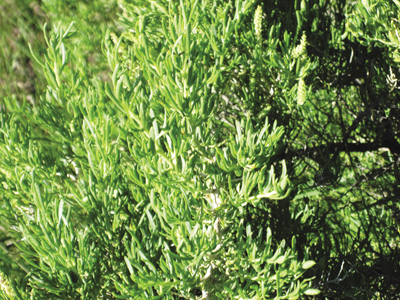
Figure 24A. Greasewood or chico (Sarcobatus vermiculatus).
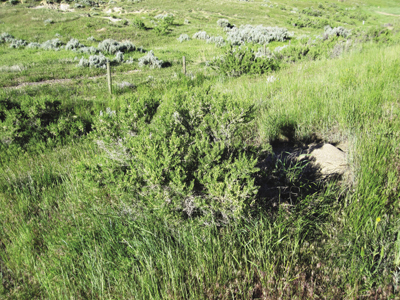
Figure 24B. Greasewood or chico (Sarcobatus vermiculatus).
Description: Erect, woody, highly branched shrub 3–5 feet tall; stems smooth, bark whitish; smaller twigs tapering to a spine-like point; leaves originating singly or in pairs, fleshy, almost round in cross section, long and narrow, 0.25–1.25 inches long, bright green when young, becoming rusty with age; flowers are of two kinds, 1) pollen-producing small, borne in dense cylindrical, cone-like clusters at end of short branches or 2) seed-producing small, inconspicuous, greenish, on short branches in leaf axils; fruit is small, encircled by a thin, ruffle-like wing around the middle.
Distribution and Habitat: Scattered throughout New Mexico on saline and saline-alkali soils. Greasewood is especially common on clayey soils and in small basins with high water tables.
Livestock Affected: Sheep and occasionally cattle.
Poisonous Principle and Toxicity: Soluble sodium and potassium oxalates. Consumption of between 1.5 and 3% of an animal’s weight in green leaves is generally lethal if eaten in a short period.
Signs of Poisoning: Dullness, depression, loss of appetite, lowering of head, reluctance to follow band, weakness, irregular gait, prostration, weak respiration and heartbeat, and coma followed by death. Signs appear within 3–5 hours after consuming a lethal dose, followed by death within 12–20 hours after consumption.
Conditions of Poisoning: Greatest losses occur in spring when hungry sheep are turned onto dense stands of greasewood and fill themselves in a short time. Heavy losses are also common when sheep are trailed through stands and are not allowed enough time to practice selective grazing. Spring is usually dangerous because the leaves are succulent and palatable, while other forage is often scarce. In a wet spring, plants are low in poison or devoid of it, but poison becomes more concentrated during dry periods. Oxalate content is greatest in the leaves and increases with maturity, reaching maximum levels in August and September.
Greasewood is usually considered a good forage and valuable to sheep and cattle for winter and spring grazing on New Mexico’s ranges. A moderate amount of other forage in the diet will prevent poisoning by greasewood. Other beneficial management practices include preventing hungry animals from filling up on greasewood exclusively, spreading out consumption of greasewood over a period of time, and allowing animals free access to salt supplements because salt-hungry animals may sometimes consume excessive amounts of greasewood.
Groundsel
Threadleaf or Wooly Groundsel (Senecio flaccidus; Figure 25A) Riddell’s or Broom Groundsel (S. riddellii; Figure 25B)
Sunflower family (Asteraceae)
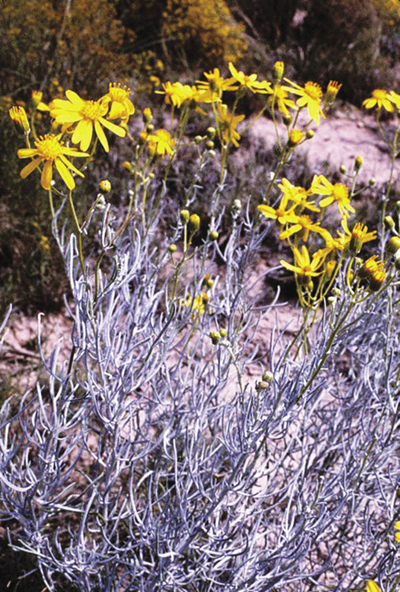
Figure 25A. Threadleaf or wooly groundsel (Senecio flaccidus).
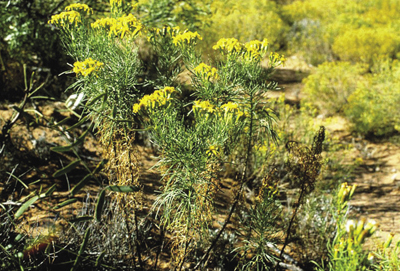
Figure 25B. Riddell’s or broom groundsel (Senecio riddellii).
Description: Threadleaf groundsel is a shrubby, erect, branched, wooly white perennial plant, leafy throughout, and about 1–2 feet tall; leaves are narrow and linear, thick, white and occasionally lobed, up to 4 inches long; it has composite flower heads that occur in numerous terminal clusters; it has 13-ray flowers, approximately 0.4 inch long; it is a common range plant throughout the state.
Riddell’s groundsel is a bright green herbaceous perennial approximately 1.5 feet tall; stems are smooth and leafy above; leaves are thread-like; the composite flower heads are numerous in flat-topped terminal clusters; 6–8 rays per flower; rays are yellow and 0.5 inch long.
Distribution and Habitat: Wooly or threadleaf groundsel occurs throughout the state on a variety of soil types and range sites. Riddell’s groundsel occurs primarily in the southeastern area of the state and is found predominantly on sandy range sites.
Livestock Affected: All classes, but cattle and horses are primarily affected.
Poisonous Principle and Toxicity: Both groundsel species contain pyrrolizidine alkaloids (PA). The specific physiological effect of this toxin group provokes liver lesions. The gradually increasing liver damage leads to hepatic insufficiency and neurologic manifestations over time. Doses of 1–5% of an animal’s weight fed at one time or over a few days will bring on acute poisoning. Acute poisoning is not unknown under natural conditions, but is rare. Chronic cases are brought on by smaller daily, but larger total, doses obtained over the course of several weeks or months, both experimentally and under natural conditions. In most cases, the amount consumed by cattle and horses before chronic symptoms begin appears to vary between 12 and 15% of body weight, with symptoms appearing in less than a month or not until after five months. Variation depends in part on species of Senecio, species of animal, and growth stage of the plant. Flowers contain a higher concentration of PA than the vegetative portions of the plant. Cattle and horses are about equally sensitive to the toxic effects. Sheep and goats are more resistant, but have been poisoned experimentally. From 1–4% of an animal’s body weight per day of groundsels would provoke symptoms after only a month. Roughly twice as much is required to poison sheep and goats for the same effect as in cattle and horses.
Signs of Poisoning: In chronic poisoning of horses, symptoms often appear abruptly. The affected animal stands apart, appearing depressed or sluggish and without appetite. The animal becomes rapidly worse. Yellow or muddy discoloration of the mucous membranes is observed, and a peculiar sweetish and unpleasant odor emanates from the skin. Weakness, uneasiness, abdominal pain, and reduced sensibility occur. In some cases, a depraved appetite is evidenced by chewing of fences, mangers, and soil. In some instances, weakness and depression increase and the animal dies quietly; in others, restlessness increases and the animal starts walking aimlessly, not avoiding objects in its path. Animals will lean or push against fences or buildings, and sometimes become frenzied. Death usually occurs within a week, although some animals linger longer.
Chronic poisoning in cattle is similar in most respects. The same peculiar odor has been noted in the milk and from the skin. Poisoned cattle generally display a roughened coat and dry, scaly muzzle. Cattle may remain quiet or become agitated. Cattle may become dangerously aggressive, even attacking automobiles.
Conditions of Poisoning: No Senecio species is palatable to livestock. Wooly groundsel stays green longer and is succulent in winter. Young growth stages are consumed unselectively with grasses in spring by grazing cattle. There is some evidence that young stages of groundsel, particularly the young leaves, while not the most toxic plant part, are the most sought after. Poisoning incidence is seasonal, with most cases occurring in the summer, but individual cases may be found in almost any month.
Symptomatic treatment is the only recommendation. However, supplementation with sulfur-containing amino acids, such as cysteine and methionine, has some anecdotal support, although it has not been confirmed experimentally.
Halogeton (Halogeton glomeratus)
Goosefoot family (Chenopodiaceae) (Figures 26A and 26B)
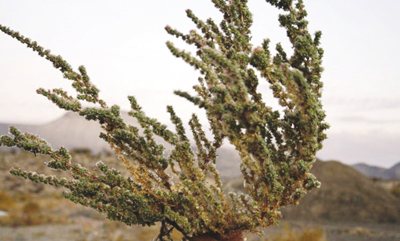
Figure 26A. Halogeton (Halogeton glomeratus).

Figure 26B. Halogeton (Halogeton glomeratus).
Description: Annual herb with thick, succulent stems branching from the base, at first spreading, then usually becoming erect; stems measure a few inches to more than a foot long, generally with numerous short lateral branches; leaves thick, succulent, 0.25–0.5 inch long, nearly tubular, tipped with a weak spine; flowers are greenish and inconspicuous; fruits are winged, conspicuous, often mistaken for flowers, basally enclosing a single seed; seeds are small and of two types, 1) black, winged, immediately germinating or 2) brown, wingless, delayed-germinating; plants are dark red to light purple in early spring, becoming pale yellow to light tan in late summer.
This plant looks like Russian thistle or tumbleweed (Salsola iberica), but the leaves of halogeton are rounded and tipped with a delicate spine, while the leaves of Russian thistle taper to a rigid spine.
Distribution and Habitat: Introduced from Russia, with only scattered stands now present in the state, but it appears to be spreading. Halogeton thrives in the alkaline, clay soils of arid regions, especially in flood plains and along rivers and roadsides.
Livestock Affected: Sheep, and less frequently cattle.
Poisonous Principle and Toxicity: Soluble sodium and potassium oxalates may comprise 30–40% of the dry matter of halogeton. The plant is lethal when as little as 0.3–0.5% of an animal’s body weight is consumed. The lethal dose for an adult sheep is about 1.5 lb of green plant. Although figures are few, toxicity to cattle appears to be about the same. Halogeton remains toxic when dried and is quite palatable.
Signs of Poisoning: Within a few hours, intoxicated sheep exhibit dullness with their head held low, accompanied by anorexia and white froth from the mouth. Shortly, weakness occurs with stiffness, rapid respiration, ataxia, and coma with extensor seizures. Cattle exhibit similar symptoms along with belligerence and a sharp drop in blood calcium. With most oxalate plant intoxications, parenteral calcium (calcium borogluconate, i.v.) is the standard treatment. With halogeton, this treatment appears beneficial to cattle and less with sheep. Calcium feed supplements are effective if given shortly before the oxalate challenge, but the protection is short-lived.
Conditions of Poisoning: Historically, halogeton is a bigger problem after frost when plants are more palatable. A typical intoxication scenario involves moving sheep to winter range and allowing them to bed down in large stands of halogeton. Losses in excess of 1,000 head in one flock have been documented.
Horsetail (Equisetum arvense, E. palustre)
Horsetail family (Equisetaceae) (Figure 27)
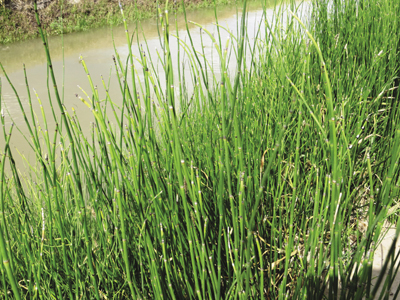
Figure 27. Horsetail (Equisetum sp.).
Description: Erect, herbaceous perennials 8–24 inches tall; aerial stems are perennial and rush-like, straight, jointed, hollow, and originating from deeply buried rhizomes; stems may be unbranched or may bear whorls of small, jointed branches; leaves are small, reduced to scales, borne in rings at the nodes; fruiting bodies are dark-colored, cone-like structures at the ends of ordinary green stems or special fertile stems.
Distribution and Habitat: Species of this genus are scattered throughout the state in meadows, swales, flood plains, or wherever the water table is high. They are a common component of some irrigated hay lands.
Livestock Affected: Although all classes of livestock are affected, horses are most commonly poisoned.
Poisonous Principle and Toxicity: Thiaminase and small amounts of pyridine alkaloids. The poisonous principle is cumulative in all classes of livestock. Hay containing at least 20% Equisetum arvense fed to horses will produce Signs of Poisoning in 2–5 weeks.
Signs of Poisoning: Horses exhibit a loss of body condition, muscular exhaustion (especially in the hindquarter), staggering gait, difficult breathing, rapid and weak pulse, convulsions, and coma followed by death. Cattle and sheep show a loss of condition, excitement, muscular weakness, trembling, staggering, and diarrhea.
Conditions of Poisoning: Although most poisoning comes from feeding hay containing large amounts of horsetail, animals grazing ranges that lack good, more preferred species have also been poisoned. The latter case is most likely in spring. Young green growth appears to be more poisonous than older growth. Young animals are more susceptible to poisoning than older animals. If intervention occurs early in the course of the disease, good nursing care will usually result in recovery. However, the most appropriate treatment is 0.5–1 g/day of thiamine given parenterally for several days. This usually alleviates symptoms within 24 hours.
Inkweed, Drymary
(Drymaria pachyphylla; Figure 28A)
Alfombrilla
(D. arenariodes; Figures 28B and 28C)
Pink family (Caryophyllaceae)
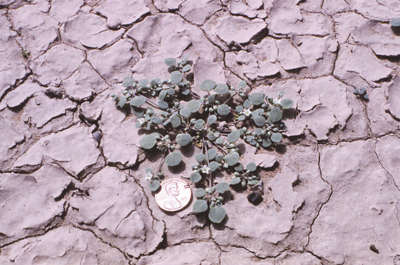
Figure 28A. Inkweed or drymary (Drymaria pachyphylla).
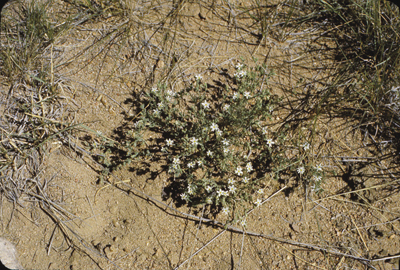
Figure 28B. Alfombrilla (Drymaria arenariodes).
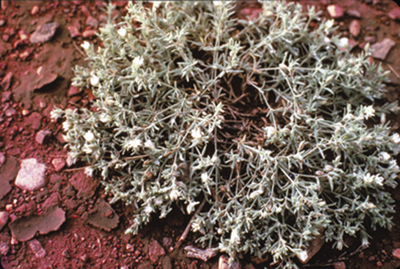
Figure 28C. Alfombrilla (Drymaria arenariodes).
Description: Inkweed, also known as drymary, is a succulent, grayish-green annual forb that lies prostrate against the ground, radiating from a single root and re-branching, forming a plant up to 1 foot in diameter; leaves are paired and opposite, ovate, less than 0.5 inch long by 0.25 inch wide, obtuse tipped, and glaucous with a fine waxy coating; flowers are small, white, solitary, inconspicuous, borne singly in leaf axils, with five sepals and five petals; fruit is a small capsule with many small seeds; a purplish juice can be squeezed from the immature capsules (hence the common name, inkweed).
Alfombrilla (Drymaria arenariodes) is more erect and not prostrate like inkweed, and has linear leaves that are not glaucous.
Distribution and Habitat: Inkweed is found on alkaline, clay soils in southern and south-central parts of the state. The seeds germinate only when moist. Inkweed is killed by the first frost. Alfombrilla is encountered on sandy or shallow sites. It has not been reported in New Mexico, but the authors have found stands of alfombrilla within 400 yards of the US–Mexico border in the Mexican state of Chihuahua.
Livestock Affected: All classes are susceptible. Goats appear somewhat more resistant.
Poisonous Principle and Toxicity: Inkweed is highly toxic and unpalatable to all classes of livestock. About 0.5% of body weight is uniformly lethal to cattle and sheep. The toxic compound in inkweed appears to be saponins found in all parts of the plant. The exact structures of the six isolated saponins are not known, but they are likely to be glycosides of githagenin.
Signs of Poisoning: Symptoms appear 12–24 hours after ingesting a toxic dose. The period between the onset of symptoms and death is brief (can be less than 2 hours) and characteristic of Drymaria spp. poisoning. In cattle, symptoms include loss of appetite, diarrhea, restlessness, arched back or tucked up appearance, depression, and frequently coma and death. Gross pathology shows congestion of the lungs, liver, and spleen and splotchy hemorrhages on the heart, lungs, and diaphragm.
Conditions of Poisoning: Inkweed is exceedingly distasteful; however, in drought years when other forage is not available, enough can be consumed to cause death. The plant lies prostrate on the ground during the day and is relatively unavailable for grazing. During the night, however, it becomes turgid so the branches are elevated a few inches, and is more easily consumed. Losses are most common during late summer. There is no cure or antidote; in fact, response to any treatment is poor.
Jimmy Fern (Astrolepis cochisensis)
Fern family (Pteridaceae) (Figure 29)
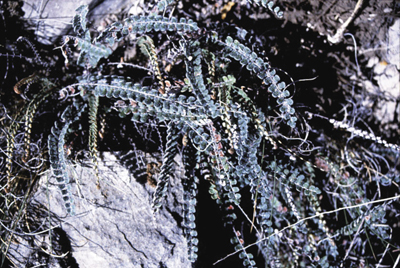
Figure 29. Jimmy fern (Astrolepis cochisensis).
Description: Erect evergreen with simple, fern-like leaves; the numerous leaflets are scaly underneath and have star-shaped hairs above. Jimmy fern is a “resurrection plant”: the leaflets roll up and become quite dry during drought, then unroll and appear green and fresh after a rain.
Distribution and Habitat: Jimmy fern grows on rocky slopes and limestone hills in the desert regions of the state.
Livestock Affected: Primarily sheep and goats, with cattle being less affected.
Poisonous Principle and Toxicity: The toxin is unknown. The toxin appears to be eliminated in milk. Sheep consuming as little as 0.5% body weight for 2 days are affected. The morbidity can be high, but the fatality rate is quite low, especially when care is administered to avoid undue stress.
Signs of Poisoning: A trembling reaction called “the jimmies” develops after 48 hours. Walking is necessary for symptoms to develop. A stilted and uncoordinated gait, arched back, and rapid heartbeat and breathing typically accompany the violent trembling. Death occurs from respiratory paralysis.
Conditions of Poisoning: Most losses occur in wet years from November–February when other forage is dry and the evergreen Jimmy fern is succulent and relatively palatable.
Jimson Weed
(Datura stramonium; Figure 30A)
Sacred Datura
(D. inoxia; Figure 30B)Nightshade family (Solanaceae)
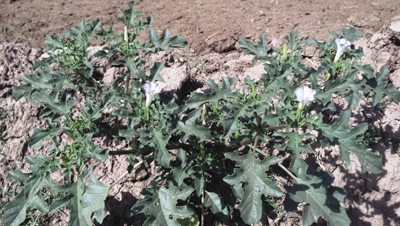
Figure 30A. Jimson weed (Datura stramonium).

Figure 30B. Sacred datura (Datura inoxia).
Description: Also known as thorn apples, these plants are large, coarse forbs with stout stems and malodorous herbage. Jimson weed (Datura stramonium) is an annual forb, whereas sacred datura (D. inoxia) is a perennial half-shrub. Leaves are large and oval with wavy to pinnately lobed margins; flowers are large, showy, tubular, white to purple, and fragrant; fruit is an oval or round, nodding or erect, prickly capsule.
Distribution and Habitat: Jimson weeds occur throughout New Mexico. These plants are particularly abundant along roadsides, ditches, and other disturbed areas.
Livestock Affected: All classes of livestock, but humans are more likely to be poisoned by jimson weeds.
Poisonous Principle and Toxicity: Jimson weed contains several anticholinergic tropane alkaloids. Poisoning of both livestock and humans occurs from eating any part of the plant, including the seeds. As little as 10–14 oz of the plant, or less than 0.1% of the body weight of the animal, has been proven fatal to cattle. Numerous incidents of human poisoning have resulted from eating the seeds and un-ripened seed pods. For centuries, these plants have been eaten for their hallucinogenic effects.
Signs of Poisoning: Symptoms of poisoning are similar among humans and livestock. Most common is bizarre behavior. Intense thirst, distorted vision, uncoordinated movement, high temperature, a rapid and weakened heartbeat, convulsions, coma, and death are also common. Activated charcoal has had limited success because the tropane alkaloids inhibit gastrointestinal function. Veterinarians generally prefer a supportive approach to poisoned animals. Cholinergic drugs such as physostigmine are not very effective against the central nervous system actions of the tropane alkaloids.
Conditions of Poisoning: Livestock rarely eat jimson weed; the ill-scented herbage makes the plants highly distasteful, and livestock literally have to be forced to eat it because of lack of other forage. Humans, on the other hand, commonly ingest the foliage or smoke the dried seeds for the hallucinogenic properties of these plants.
Johnson Grass (Sorghum halepense)
Grass family (Poaceae) (Figure 31)
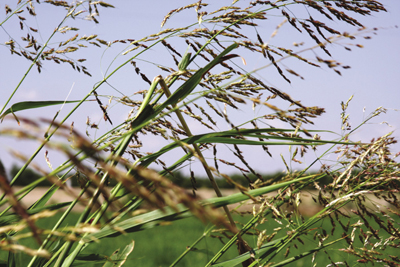
Figure 31. Johnson grass (Sorghum halepense).
Description: Coarse perennial 3–6 feet tall, with scaly root stalks; leaves are broad; the numerous seeds are yellow to purplish and occur in large, many-branched clusters.
Distribution and Habitat: Johnson grass is an introduced grass found throughout the state. It is considered a weed in cultivated fields, waste places, and along irrigation ditches and stream bottoms.
Livestock Affected: Most mortality occurs in cattle, but sheep and horses have also been poisoned.
Poisonous Principle and Toxicity: Most losses from Johnson grass are from prussic acid or hydrocyanic acid poisoning, but plants also accumulate dangerous levels of nitrate. A more detailed discussion of nitrate, cyanogenesis, and ataxia/cystitis/teratogenesis problems associated with various members of the grass family is found in the SPECIAL POISONING PROBLEMS AND ASSOCIATED PLANTS section of this publication.
Signs of Poisoning: Symptoms are typical of prussic acid poisoning. The reliable diagnostic sign of bright red venous blood will help identify prussic acid as the poison. However, dark brown arterial and venous blood would indicate poisoning by nitrate.
Conditions of Poisoning: Danger from prussic acid poisoning is greatest when soils are high in available nitrogen and low in phosphorus, when plants have been exposed to drought or disease that slows or stunts growth, and/or when plants are making rapid regrowth or have been frosted. Leaves are more toxic than stems, and young plants are more toxic than mature ones.
Kochia (Kochia scoparia)
Goosefoot family (Chenopodiaceae) (Figure 32)
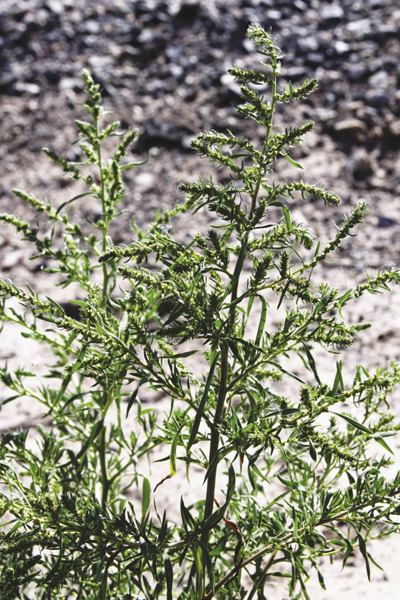
Figure 32. Kochia (Kochia scoparia).
Description: Annual, leafy forb1–3 feet tall; stems and branches are erect or ascending; leaves are alternate and linear and turn bright red in fall; flowers are clustered in the axils of the leaf like bracts.
Distribution and Habitat: Kochia is found extensively in New Mexico along the edges of cultivated fields, disturbed roadsides, and railroad rights-of-way.
Livestock Affected: All classes are affected, but cattle and sheep are the predominant victims of kochia toxicity.
Poisonous Principle and Toxicity: Interest in kochia as a weed or feed plant has been high during the past several years for reasons including the fact that protein and fiber contents of kochia are similar to alfalfa, and kochia can produce the same amount of forage per acre as alfalfa using half the water. However, there is considerable variability in its effects on weight gain. When kochia comprises 60% or more of the diet, there is a marked decrease in nitrogen retention in cattle. In addition to poor weight gains, kochia is tied to photosensitization and polioencephalomalacia (PEM). Saponins are glycosides of oleanolic acid and these, coupled with the alkaloids harman and harmine, are of primary interest. Kochia also has a propensity to accumulate nitrate and oxalate, but this is not a significant problem, as once believed.
Signs of Poisoning: 1) Photosensitization and weight loss: Grazing kochia for 2 or more weeks may only result in diminished weight gain. More severe Signs of Poisoning include decreased appetite, skin erythema, edema, and sloughing of non-pigmented areas of skin. Increases in liver enzymes and a marked increase in bilirubin are common. As the disease continues, icterus, depression, weakness, diarrhea, and dehydration are noticed. Additional serum chemistry changes seen are increased blood urea nitrogen (BUN), creatinine, and calcium, with a decrease in insulin and prolactin. These signs may occur in ruminants and horses, with a morbidity of up to 40% and an appreciable death loss
2) PEM: The sporadic occurrence of PEM with kochia ingestion appears to be the result of a complex interaction of the plant and sulfate. There have been several documented cases of cattle mortality associated with PEM symptoms in New Mexico. Typically, these cases involve elevated sulfate levels in the livestock water and the plant. Once thought to be a thiaminase activity problem, the disease is not responsive to thiamine. There is the potential for copper deficiency with long-term ingestion of high-sulfate diets. Affected animals may show signs of neurologic involvement, including incoordination, muscle tremors, head pressing, blindness, circling, aggressive or excitable behavior, neck twisting, and convulsive seizures, usually ending in death. Gross pathology includes herniation of the cerebellum, a soft gray cortex, and flattened gyri.
Conditions of Poisoning: Kochia is most toxic during drought and at seed maturation. Livestock’s drinking water should be tested for sulfates, especially if kochia is present. Water that has been in the drinking trough and not replenished from the well or pipeline is probably more dangerous since evaporation will concentrate the sulfate. General nursing care is in order for either photosensitivity or PEM. There may be some benefit to providing copper supplementation and enhancing thiamine levels, although there has been sporadic success with the latter.
Larkspurs (Delphinium bicolor, D. andersonii, D. barbeyi, D. glaucum)
Buttercup family (Ranunculaceae) (Figures 33A and 33B)
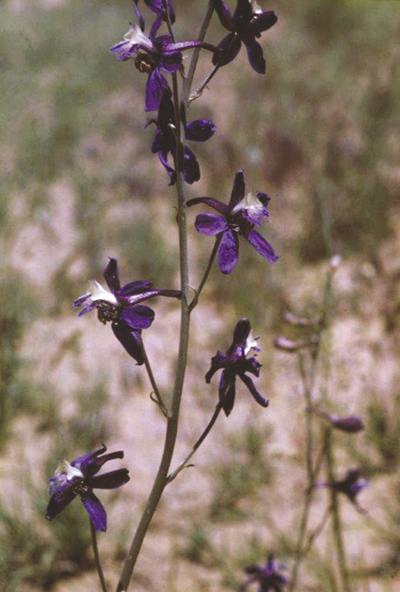
Figure 33A. Larkspur (Delphinium sp.).
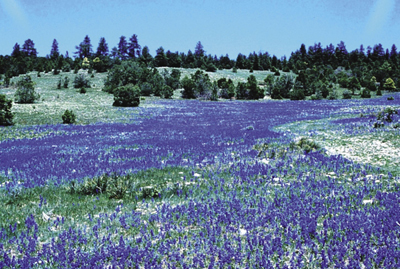
Figure 33B. Larkspur (Delphinium sp.).
Description: Low larkspurs (Delphinium bicolor, D. andersonii, and others) are low-growing perennial forbs; the fine, hairy stems are 6–24 inches tall; leaves originate from a cluster of roots and are few, mostly basal, up to 2 inches in diameter, round in outline, deeply divided into a number of linear segments.
Tall larkspurs (Delphinium barbeyi, D. glaucum, and others) are large, erect, perennial forbs 3–7 feet tall; stems are straw-colored, darkening near the base, originating from a deep woody rootstock; leaves are broad and are divided into deep lobes; flowers are whitish to blue or purple, showy, up to 1 inch across, with a long (0.5–0.75 inch) spur at the bottom, densely bunched together on the upper part of the stems, with a few to 15 flowers on short stalks along the main flowering stem. In flower, Columbia monkshood (Aconitum columbianum) looks like tall larkspur, but lacks a spur on the flower and has a solid stem.
Distribution and Habitat: Common throughout the state’s mountain meadows and valleys, which are dry to moderately moist. Low larkspurs are found at elevations up to 10,500 feet. Low larkspurs are often found growing abundantly in the same areas as death camas.
Tall larkspurs are widely distributed throughout the state in rich, moderately moist soils in half-shaded localities, especially on slopes of foothills and mountains, and among underbrush of streams. It is found in valleys and at elevations up to 9,000 feet.
Livestock Affected: Cattle, horses, and sheep (listed in order of decreasing susceptibility). Although sheep are not commonly poisoned by tall larkspurs, they are somewhat susceptible to low larkspur poisoning.
Poisonous Principle and Toxicity: The principal toxins are diterpenoid alkaloids. The range of alkaloids present is extensive, with 27 alkaloids having been isolated in some species of low larkspur. These alkaloids are grouped into three classes: the 19-C diterpenes, which are the most important toxicologically; 20-C diterpenes, of limited importance; and bis-diterpenes, of least risk. The 19-C diterpenes of interest in larkspur toxicology are the aconitine and lycoctonine types. Although the toxicity under natural conditions depends on several factors, the lethal dosage ranges between 0.5 and 3% of the animal’s body weight (5–30 lb for a 1,000-lb animal).
Signs of Poisoning: Nervousness, stiffness, staggering, and falling. The front legs frequently give way, and the animal falls and may kick convulsively in attempts to rise. Nausea, combined with excessive salivation, and frequent swallowing. Bloating is common, but not always present. Death results from respiratory failure, and the heart continues to beat for a short time after breathing stops. Signs of Poisoning occur within 3–4 hours after consuming larkspur. There are 6 stages of intoxication: 1) slight tremors, 2) lying down, 3) unable to stand, 4) sternal recumbency, 5) lateral recumbency, and 6) death.
Conditions of Poisoning: Poisoning from larkspur is most prevalent in its flowering stage. Although overall toxicity decreases with maturity, the seeds remain toxic. The occurrence of late spring and early fall snow storms covering up more desirable associated species increases the chances of larkspur poisoning. While cattle are susceptible to larkspur poisoning, sheep and horses are only occasionally poisoned from larkspur and may safely graze infested ranges. Cattle will often feed on tall larkspur, even when grazing ranges that offer plenty of good forage.
Treatment is an infrequent option on rangelands. Atropine has been used with some success; however, physostigmine is a more effective antidote. A mixture of 65 mg physostigmine salicylate, 130 mg pilocarpine, and 32 mg strychnine per 250 kg (550 lb) of body weight given subcutaneously to cattle has been the traditional recommendation. A physostigmine dosage of 0.04–0.08 mg/kg of body weight given via intraperitoneal injection can reverse the signs of larkspur poisoning in cattle even when animals are in the lateral recumbency stage. The dosage may need to be repeated every few hours.
Animals that fall facing downhill and are unable to rise should be turned to an uphill direction to facilitate movement of gases from the rumen and reduce the incidence of fatal bloat.
Acute larkspur poisoning in range cattle can often resemble grass tetany symptoms. Magnesium solutions used for treating grass tetany will exacerbate the effect of the alkaloids at the neuromuscular junction.
Lechuguilla (Agave lechuguilla)
Agave subfamily (Agavoideae) (Figures 34A and 34B)
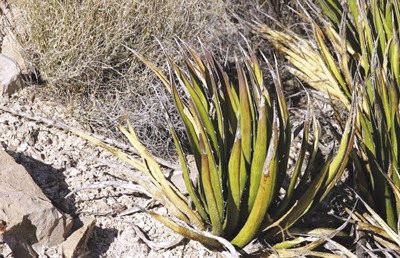
Figure 34A. Lechuguilla (Agave lechuguilla).
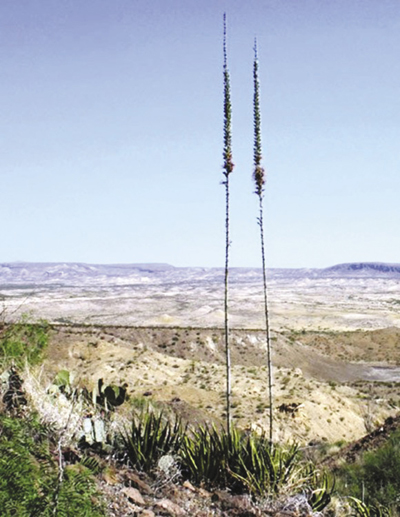
Figure 34B. Lechuguilla (Agave lechuguilla).
Description: Member of the Agave genus, which is the same as the century plant; plants have 20–30 thick, fleshy leaves 1–2 inches wide and 12–18 inches long, leaves are upright and have sharp spines on the margins and end with a sharp tip; the plant flowers once, usually at 12–15 years of age, dying shortly after flowering; flower stalk is 6–12 feet tall.
Distribution and Habitat: Lechuguilla is found in southeastern and south-central areas of the state, primarily on limestone hills on steep slopes.
Livestock Affected: Sheep and goats. Cattle may be poisoned during extended drought. No cases of horses being poisoned have been reported.
Poisonous Principle and Toxicity : There are two photodynamic saponins (smilagenin and phylloerythrin) involved in poisoning. Smilagenin is also a hepatotoxic saponin. Sheep consuming as little as 1% of their body weight develop photosensitivity within a week, and die within 2 weeks from liver and kidney disease.
Signs of Poisoning: Sheep consuming lechuguilla show signs of listlessness and anorexia. Jaundice coupled with photosensitivity, as evidenced by swelling of the ears and face (“big head”), is usually followed by progressive weakness, emaciation, coma, and death. Pathologic changes during the course of the disease include marked elevation of serum bilirubin and liver enzymes.
Conditions of Poisoning: Poisoning from lechuguilla can occur any time animals are grazing ranges with an abundance of lechuguilla. The most dangerous period is during the winter and prolonged drought.
Locoweeds, Point Locos, and Peavines (Astragalus spp., Oxytropis spp.)
Legume/pea family (Fabaceae) (Figures 35A–35F)
Description: Low-growing perennial herbs with erect to spreading stems, originating from woody taproots; leaves pinnately compound into numerous linear to oval leaflets; flowers white to purple, with a rounded keel petal (the lowermost petal), generally borne on leafy stems; fruit a pea-like pod, few- to many-seeded.
Astragalus is often confused with the genus Oxytropis. While the former has rounded keel petals and generally leafy flowering stems, the latter has keel petals abruptly narrowed to beak-like points and leafless flowering stems.
Species within the Astragalus and Oxytropis genera can cause one or more of three toxic effects: 1) selenium poisoning, 2) locoism, and 3) nitrotoxicosis.
Because they differ markedly in nearly all aspects of poisoning, they are discussed separately.
Selenium Poisoning
The following four species have the ability to take up selenium from the soil and concentrate it at levels toxic to animals: two-grooved milkvetch (A. bisulcatus), narrow leaf poison vetch (A. pectinatus), Gray’s milkvetch (A. grayi), and stinking vetch (A. praelongus) (Figure 35A).
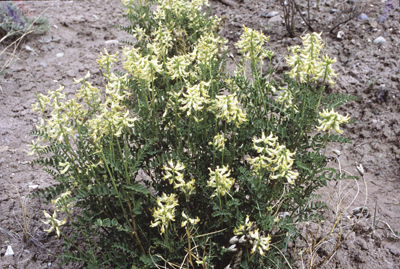
Figure 35A. Stinking vetch (Astragalus praelongus).
Distribution and Habitat: These four species are common on selenium-rich soils, and in fact are many times used as “indicator species” of high levels of soil selenium.
Livestock Affected: All classes.
Poisonous Principle and Toxicity: Selenium concentrated within the tissues of the plant, although there are usually toxic levels of the alkaloid swainsonine present also. As little as 0.6 lb of two-grooved milkvetch has been fatal to sheep within 30 minutes.
Signs of Poisoning: Three basic syndromes can develop from eating toxic quantities of selenium. These syndromes are determined by the level of selenium concentration in the plant, the amount ingested, and the time over which the poisoning takes place. The first type of poisoning is acute, while the latter two are more or less chronic.
Acute selenium poisoning is caused by eating a large single dose. Animals suffering from this type of poisoning can be recognized by their uncertain gait, lowered head and drooped ears, diarrhea, increased urination, bloating accompanied by abdominal pain, rise in temperature, rapid weak pulse, labored breathing, and dilated pupils. Death from respiratory failure occurs after complete prostration and apparent unconsciousness. These signs generally appear within a few hours to a couple of days after ingestion. Widespread damage (hemorrhage, congestion, tissue degeneration, and necrosis) to the heart, lungs, kidneys, liver, spleen, and digestive tract also result from this type of poisoning.
Chronic selenium poisoning occurs in two forms. The more pronounced case, commonly referred to as blind staggers, results from livestock grazing plants with moderate selenium concentrations (up to 200 ppm) for 1–2 weeks. It is characterized by excitement, animals wandering aimlessly and failing to distinguish fences or other immobile objects, and inactivation of the digestive tract, giving animals a depraved appetite and causing them to chew on fence rails, pieces of bone, or metallic objects. These signs may be followed by paralysis, weakness, difficult breathing, and death through respiratory failure.
The second, and more chronic, situation results from livestock grazing plants with lower selenium concentrations (5–40 ppm) ingested over a period of a month or more. This case is sometimes, inappropriately, referred to as alkali disease. It is characterized by dullness, emaciation, deformed hooves, and severe lameness. Hooves may become so severely deformed and bent forward that affected animals are unable to obtain adequate food or water. Death from starvation or thirst is not uncommon.
Internal lesions are similar in both chronic syndromes and are characterized by marked degeneration of the body organs and erosion of the contact surfaces of the long bones. In severe cases, bone marrow becomes gelatinous.
Conditions of Poisoning: Species within this group are always found growing on soils that contain selenium, so they are considered indicator plants of these soils. Livestock generally find these plants quite unpalatable and will eat them only when forced to by the lack of more preferred forage. Selenium, when incorporated into these plants, gives them a garlic odor and is directly responsible for their lack of palatability.
In the process of incorporating selenium into plant tissues, the selenium-accumulating Astragalus spp. change selenium to an organic compound that is more readily absorbed by other toxic and non-toxic species. When these converter plants drop their leaves or die and decay, there is a buildup of readily absorbable selenium in the area around these plants. Many normally good forage species, like western wheatgrass (Agropyron smithii), blue grama (Bouteloua gracilis), and winter fat (Ceratoides lanata), may also contain toxic quantities of selenium when grown in conjunction with these Astragalus spp. converters. Consequently, these normally good forage species may also become a major concern of the livestock operator.
Locoism
Locoweed has been reported to be the most widespread poisonous plant problem in the western United States. It has a substantial economic impact and may be responsible for more than $300 million in annual income losses due to death of poisoned livestock. The major contributors to these poisonings are plants from the Astragalus and Oxytropis genera, which are commonly referred to as locoweed or milkvetch. There are approximately 300 species of Astragalus known to occur in the United States. The following species of Astragalus and Oxytropis are some of the more common species known to cause locoism in livestock in New Mexico: Speckle pod loco (A. lentiginosus), white point loco (O. sericea; Figure 35B), Lambert’s crazyweed (O. lambertii), Earle’s loco (A. earlei), wooly loco (A. mollissimus; Figure 35C), sheep loco (A. nothoxys), Wooton’s loco (A. wootonii), silver line loco (A. tephrodes), and half-moon loco or rattle weed (A. allochrous; Figure 35D).
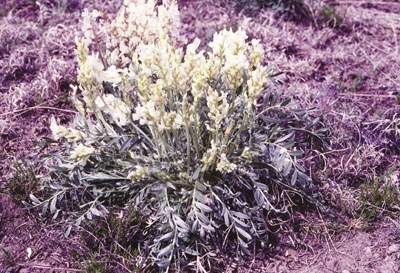
Figure 35B. White point loco (Oxytropis sericea).
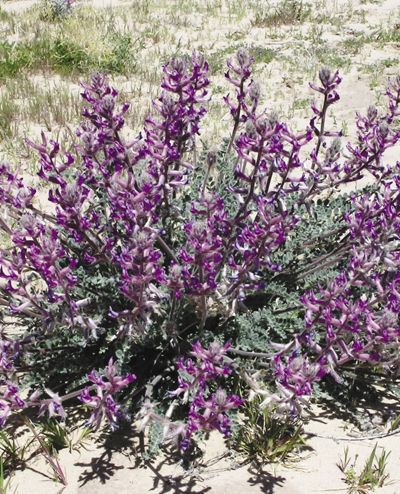
Figure 35C. Wooly loco (Astragalus mollissimus).

Figure 35D. Half-moon loco or rattle weed (Astragalus allochrous).
Distribution and Habitat: These species are common on plains, foothills, and mountains across the state and occur at elevations up to 10,000 feet.
Livestock Affected: All classes, with horses being more susceptible than ruminants. Humans are also susceptible.
Poisonous Principle and Toxicity: Swainsonine, an indolizidine alkaloid, is the toxic principle responsible for the pathological changes observed in body tissues that lead to the disease known as locoism. All parts of the toxic plants (seeds, flowers, foliage, and even pollen) contain some level of swainsonine, and dried plant stems retain sufficient swainsonine content to pose serious health risks even after a year or longer. Among all of the different species and individual varieties of plants in the locoweed category, there is a wide variety in swainsonine concentration, and this makes it difficult to ascribe any standard level of toxicity potential to a single species.
Swainsonine is produced by endophytic fungi growing within the plant. Comprehensive analyses in the United States as well as in several other countries show these endophytes in locoweeds belong to a new genus, Undifilum.
Swainsonine acts as an inhibitor of certain cellular enzymes, which causes the accumulation of water-soluble and osmotically active sugars within the lysosomes (cellular organelles responsible for digesting intracellular waste products). This inhibition leads to an increase in the size and total number of the lysosomes within affected cells, causing the formation of vacuoles (fluid-filled cavities) within the cell that disrupt normal cellular function. From a diagnostic perspective, the presence of such vacuoles in peripheral blood lymphocytes may be indicative of acute exposure (within 48 hours) to swainsonine, whereas vacuolation of brain and neural tissue, endocrine glands, and visceral as well as reproductive organs occurs with more extensive or chronic exposure.
The threshold dosage, at which clinical signs of locoism appear, is considered to be 0.3 mg of swainsonine per kilogram of animal body weight (e.g., 150 mg for a 1,100-lb horse). Since swainsonine is water-soluble, it is rapidly absorbed and excreted from the animal’s body via the urine, or milk in the case of lactating females. The serum half-life of swainsonine is less than 24 hours, so serum samples are only diagnostic for animals that are currently grazing contaminated pastures and not for those that have been removed from suspect pastures. The typical blood profile of an affected animal would have detectable levels of swainsonine, decreased α-D-mannosidase activity, and increased aspartate aminotransferase (AST). Even though the vacuolar lesions present in many body tissues may diminish over time once the animal is removed from locoweed-infested range, the damage done to brain and neural tissues is permanent and responsible for the abnormal behavior, incoordination, and impaired sensory perception that is characteristic of locoed animals. There is no proven effective treatment for locoism in horses, and locoed horses have a very poor prognosis for recovery.
Clinical signs and symptoms of locoism
Since the formation of lysosomal vacuoles can be widespread throughout body tissues, the observable effects of locoism depend on the cumulative amount of toxin ingested as well as the specific tissue affected. While overall poor performance, decreased fertility, and deformed fetuses can be attributed to locoism, the classic symptoms of locoism are due to its effects on the nervous system. Horses appear to be more susceptible to the neurotoxic effects of locoweed, and they typically display more distinctive signs than cattle or sheep. Horses in particular appear to become addicted to the plant; the addiction extends to subsequent growing seasons, so clinical signs often progressively worsen in successive years.
Classic neurologic signs appear in animals that have consumed locoweeds for several weeks to months. Locoism in horses, sheep, and cattle is variable in its onset and severity, but is often characterized by incoordination, visual impairment, depression, unpredictable behavior, emaciation, and eventual death.
Impaired function of the liver, pancreas, and thyroid and parathyroid glands contributes to weight loss of so-called locoed animals. Decreased tear secretion and damage of retinal cells accounts for the impaired vision evident in some affected animals. Horses with chronic locoism rarely recover sufficiently to be used for riding.
Abortions and congenital deformities of the limbs occur in sheep poisoned with locoweed. Further reproductive failure occurs as a result of rams having damaged testicular cells. Limb deformities in foals born to mares eating locoweed have also been reported.
Experimental feeding of locoweed to sheep produces immunosuppression, which might account for the increased incidence of such infections as pneumonia, foot rot, and keratoconjunctivitis in animals exposed to locoweed.
Locoweed poisoning can also be associated with an increased incidence of failure of the right side of the heart in cattle grazing Oxytropis sericea at high altitudes. Damage to pulmonary tissue might predispose cattle to this failure (high mountain disease). Indolizidine alkaloids of locoweeds are passed in the milk of cows and will induce cytoplasmic vacuolation in calves; this might account for unthriftiness of calves suckling cows that are grazing locoweed.
Various hematologic changes occur in locoweed poisoning that reflect generalized cellular damage. Liver enzymes are often elevated because of hepatocellular damage.
In females, swainsonine causes fetal resorption, abortion, birth defects, and altered estrus and egg development. Locoweed consumption often prolongs the time between birthing and rebreeding. Water belly (hydrops amnii) is often observed in pregnant females, along with prolonged pregnancy that results in fetal and maternal death.
Swainsonine crosses the placental barrier and poisons the fetus. Studies with sheep documented that most lambs born will not survive at birth without human intervention.
In males, intake of locoweed for one to several weeks will decrease libido and cause temporary infertility by altering sperm formation and development. Once sperm are altered by swainsonine, at least 60–90 days are required for spermatogenesis to return to normal.
Clinical symptoms of horses in the early stages of locoism include severe depression and lethargy where the horse acts sleepy or stands very still. Once the threshold dosage of toxin is ingested, more pronounced symptoms may appear. These include:
- Weight loss.
- Odd or erratic behavior, including overreaction to various stimuli such that the horse, when handled, may be severely head shy and rear and flip over backwards, or exhibit other violent and dangerous behaviors.
- Other neurological deficits, such as ataxia, incoordination, head bobbing, or an exaggerated high stepping gait.
Conditions of Poisoning: Livestock that have never grazed locoweed find it unpalatable and will avoid it if other more palatable forage is available. However, once livestock have grazed locoweed, they often become habituated to it and will seek it out. Unless these animals are moved to areas that do not support locoweed, or to holding pens, they will continue to graze it until they become locoed and die. Animals are more susceptible to loco poisoning after they have once been habituated.
Locoweed is poisonous at all stages of growth and throughout the entire year, even after it has matured and dried. All plant parts are toxic. Greatest losses generally occur in spring when little other succulent forage is available. The poisoning hazard is less in late spring through fall because other more palatable forage is present. Because loco plants remain green through late fall into winter, they again may receive considerable use into winter.
TREATMENT: Successful recovery from locoweed poisoning depends on recognizing the disease early and preventing animals from eating more of the plants. Mild cases generally resolve in 1–2 weeks. Animals with chronic locoism, in which clinical signs are present for some time, may not recover. Good animal husbandry and care of poisoned livestock are the only treatments acknowledged at this time.
MANAGEMENT: Range readiness: Grazing locoweed-infested pastures only after the predominant grass species are actively growing significantly reduces the incidence of locoism. Likewise, removing livestock from these same areas in the fall when grass begins to senesce is also very effective in managing the occurrence of locoism.
Locoweed-free pastures: Management flexibility is enhanced by using or creating (via herbicides) pastures that are relatively free of locoweed. “Locoweed-free” pastures are used early and late in the growing season to minimize locoweed consumption during those times discussed earlier. Such pastures also give ranchers an area to put livestock that are habitual consumers of locoweed. While locoweed toxicity is important to all livestock owners where it is found, it appears that horses are more likely to consume toxic levels of swainsonine and suffer more pronounced symptoms. Given the more extensive and common interaction between horses and humans, locoed horses pose a substantial risk to humans due to the increased potential for unexpected and violent behavior. Therefore, it is important that owners routinely monitor their horse pastures for the presence of suspected poisonous plants. If locoweed is a concern in your area, remove horses from the pasture and provide alternative forage sources until the locoweed can be controlled or the native grasses are green.
Close observation of livestock: When locoweed is abundant, ride through the cattle regularly and remove those animals that are beginning to consume locoweed. Pulling the “eaters” not only prevents intoxication but will prevent social facilitation or peer pressure influencing others to eat it.
Control grazing pressure: Heavy grazing pressure leads to shortages of desirable plants and plant parts, thereby forcing livestock to start grazing locoweed.
Aversion therapy: Studies at the USDA–ARS Poisonous Plant Research Laboratory and at New Mexico State University have shown cattle can become averse to eating locoweed if given an emetic like lithium chloride immediately after consuming the plant. If averted cattle are kept isolated from others that are known consumers, the aversion may last several seasons. Large-scale ranch application of this methodology is very time-consuming and expensive. Lithium chloride is also a controlled substance and therefore not available to ranchers.
Supplementation: Range nutrition studies in northeastern New Mexico by NMSU indicate that protein supplementation of beef heifers decreased locoweed consumption on dormant range. As a result, abortion rates were cut from 40% to 0%. Increased calf performance (measured at weaning) from supplemented dams was also achieved.
Herbicidal control: Previous work at NMSU has identified effective herbicide control strategies for locoweed, and these recommendations are available in NMSU Extension Guide B-823, Locoweed Control: Aerial Application or Ground Broadcast (https://pubs.nmsu.edu/_b/B823.pdf).
Nitrotoxicosis
The most common Astragalus species causing nitrotoxicosis in New Mexico is red-stemmed peavine (A. emoryanus; Figures 35E and 35F). Timber milkvetch (A. miser) has similar attributes to red-stemmed peavine and is found sporadically in the northern mountainous areas of the state.
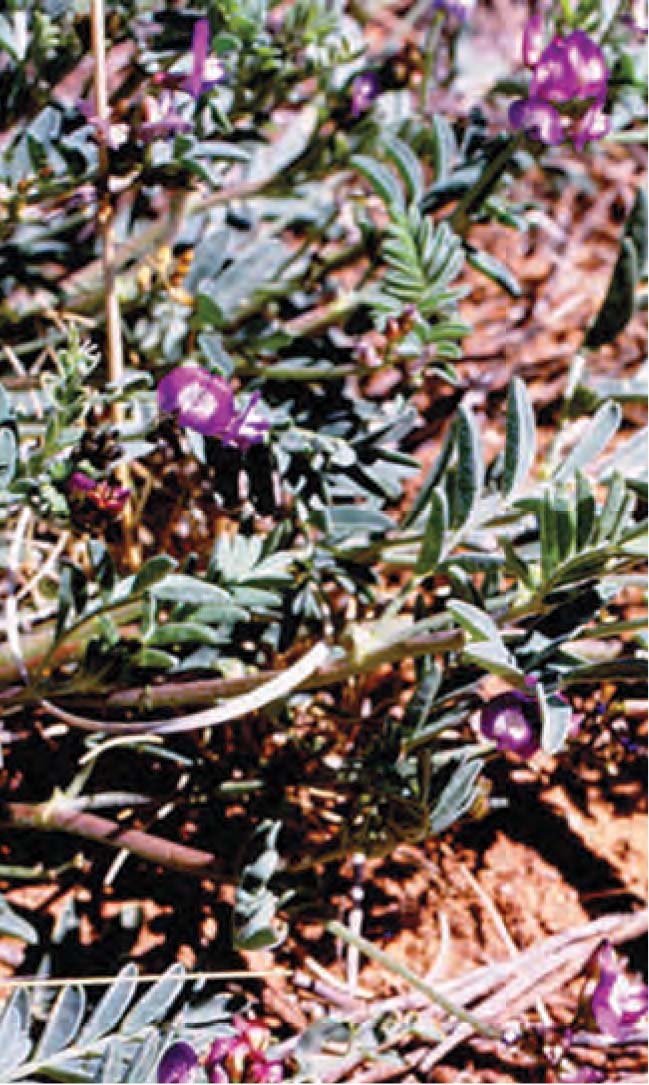
Figure 35E. Red-stemmed peavine (Astragalus emoryanus).

Figure 35F. Red-stemmed peavine (Astragalus emoryanus).
Distribution and Habitat: Scattered throughout the state on dry hillsides and piñon-juniper dominated range sites.
Livestock Affected: Although all classes are somewhat susceptible, cattle—especially lactating females—are most vulnerable.
Poisonous Principle and Toxicity: Toxic glycosides of 3-nitropropionic acid (3-NPA) and 3-nitropropanol (3-NPOH) are commonly referred to as nitro toxins. Miserotoxin is the most important 3-NPOH toxin. Two pounds of green timber milkvetch or red-stemmed peavine may kill an adult cow within 1–4 hours after ingestion.
Signs of Poisoning: “Cracker heels” is the common name for the symptoms resulting from consuming red-stemmed peavine. Typically, the disease starts after animals have been eating red-stemmed pea vine for a week or more. Common Signs of Poisoning include nervousness, emaciation, weakness, a depraved appetite, impaired vision, frequent urination, and incoordination of the hind legs that causes cattle to knock their heels together when walking (cracker heels). Morbidity is usually 10–15%.
In acute cases, signs may be limited to constipation and slight ataxia developing into a staggering walk, and then to recumbency and death in some animals. Death usually results from heart failure or respiratory paralysis. Sheep and horses exhibit signs similar to cattle, but their reactions are more acute. Common lesions include an enlarged, flabby heart with thin walls, and congestion of the liver, spleen, lungs, and parts of the digestive tract.
Conditions of Poisoning: Red-stemmed peavine causes poisoning during spring before other plants have greened up. The toxicity drops rapidly after seed scatter and, following this period, it is unlikely animals will be poisoned. While the leaves have the highest concentration of poison, lesser quantities are also present in the roots, flowers, and seeds. Conversely, most losses from timber milkvetch occur near mid-summer at about its late flowering stage. This corresponds to the season when many of the better range plants have dried up and become less palatable.
In the case of cattle and sheep, lactating females are by far the most susceptible group to poisoning. Although the death rate in horses is low, recovery allows only minimal usage. Livestock unfamiliar with these plants are more susceptible to poisoning than animals that have previously grazed them.
Lupines
Silvery Lupine (Lupinus argenteus)
Velvet Lupine (L. leucophyllus)
Silky Lupine (L. sericeus)
Legume/pea family (Fabaceae) (Figures 36A and 36B)
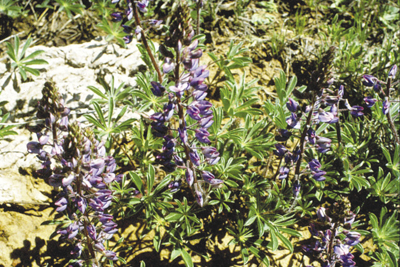
Figure 36A. Lupine (Lupinus sp.).

Figure 36B. Lupine (Lupinus sp.).
Description: Perennial forbs 0.5–3 feet tall, originating from a taproot; leaves palmately compound, divided into 5–7 finger-like leaflets; flowers are blue, occasionally white, pink, yellow, or blue-and-white, found in loose clusters around the upper stalks; fruit is a pea-like pod, 2- to 12-seeded.
Distribution and Habitat: Lupines are abundant throughout New Mexico in a wide variety of habitats, including mountain slopes, valleys, and plains. There are over 150 species in the United States, and most are non-toxic.
Livestock Affected: Sheep, with cattle and horses at lesser risk.
Poisonous Principle and Toxicity : Lupinine and several other quinolizidine alkaloids. Sheep have died from eating as little as 0.5–1.5% of their body weight (0.5–1.5 lb for a 100-lb sheep) in seed pods and seeds. It takes 7–24 lb of lupine per 100 lb of body weight to poison horses. Cattle fed 1.5 lb of lupine per day during the breeding season have given birth to calves with crooked legs and other congenital deformities.
Signs of Poisoning: Consuming lethal quantities results in loss of condition, a rough and dry coat, excitement, animals running about and butting into other animals and objects, difficult breathing, trembling, frothing at the mouth, depression, convulsions, and coma followed by death. Ingestion of sub-lethal quantities by pregnant cows may result in calves born with marked congenital deformities. This syndrome, known as crooked calf disease, is characterized by malformation of the forelimbs, neck, and back, and in some instances a cleft palate.
Conditions of Poisoning: Almost all losses occur when animals consume large quantities of mature (podded) lupine over a short time. Common cases include moving hungry animals through areas supporting dense stands of lupine and not allowing them time to practice selective grazing, unloading or bedding animals down in lupine-infested areas, grazing animals on areas where other more palatable species are grazed out and lupine is the only green vegetation available, feeding hay that contains podded lupine, or grazing animals on areas where early snow has covered most of the shorter vegetation, leaving lupine pods projecting above the snow. Most cases of serious losses occur in fall when these conditions are most probable.
Incidences of newborn calves suffering from crooked calf disease are spotty geographically and from year to year within a given herd, varying from less than 1% up to 100% of the calf crop. It is not correlated with heredity or breeds, but in some areas it is always associated with early calves and may be controlled by delaying breeding. The most dangerous period for malformation occurs between the 40th and 70th day of gestation, although slight to moderate malformation may occur when lupine is fed to cows before and after this period.
Mescal Bean (Sophora secundiflora, S. gypsophila)
Legume/pea family (Fabaceae) (Figure 37)
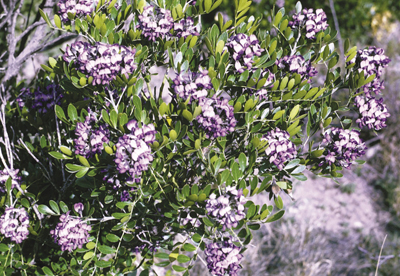
Figure 37. Mescal bean (Sophora sp.).
Description: Shrub that usually grows to about 10 feet tall; leaves are alternate with 7–13 leaflets; flowers are strongly fragrant and light lavender to purple in color; fruit is a large legume pod containing 1–8 bright red, hard-surfaced seeds that are each about 0.5 inch long.
Distribution and Habitat: Mescal bean grows on limestone hills and mountain ridges in the Guadalupe Mountains in southeastern New Mexico. It has also been found on similar sites in Lincoln and Guadalupe Counties.
Livestock Affected: Cattle, sheep, and goats.
Poisonous Principle and Toxicity : Quinolizidine alkaloids are the responsible toxins. Cattle consuming 1% of their body weight suffer severe neurologic effects. The poisoning is acute and therefore occurs a short time after eating the plant.
Signs of Poisoning: Cattle exhibit trembling, a stiff gait, and falling with an inability to rise. The seeds have been reported to have hallucinogenic potential in humans, causing dizziness, stupor, and visions.
Conditions of Poisoning: The mature leaves as well as the seeds pose the greatest risk. The beans or “frijolitos” pose a unique problem for humans. Their bright red color is attractive, and they are sometimes used in charm bracelets. Cattle will return to normal health if left alone for a short time. Forced movement may result in a return of Signs of Poisoning.
Mesquite (Prosopis glandulosa)
Legume/pea family (Fabaceae) (Figure 38)

Figure 38. Mesquite (Prosopis glandulosa).
Description: Deciduous shrub or tree, usually with several trunks; branches are arching and irregularly bent, with paired large woody spines at the leaf axils; leaves are bipinnate and linear; leaflets are linear, about 1 inch long; inflorescence is a catkin-like spike 1.5–2.5 inches long; flowers are small, numerous, and leguminous; fruit is a leathery legume pod or bean 2–6 inches long; seeds are brown or reddish brown.Distribution and Habitat: Mesquite is common throughout the southern half of New Mexico. It is a predominate plant on many dry southern ranges and is a serious competitor with forage plants.
Livestock Affected: Primarily cattle.
Poisonous Principle and Toxicity : Cattle ingesting large amounts of mesquite pods over an extended period of time experience rumen stasis and impaction with associated symptoms, and eventually death. The biochemical pathology is not fully understood, although the high concentrations of sucrose are suggested as a cause of decreased cellulose digestion, leading to chronic indigestion. Animals develop a liking or craving for mesquite beans and will consume nothing but mesquite beans when so habituated. Physiologically active tyramines, similar to those in Acacia spp., are present in high concentrations in young leaves. Cyanogenic glycosides have also been isolated from the leaves.
Signs of Poisoning: A gradual onset of weight loss, hair loss, anemia, and loss of appetite. Symptoms appear only after several months on a mesquite diet, during which the animal may gain weight. Symptoms consist of profuse and foamy salivation, continuous chewing, eventual rumen stasis, and emaciation. The disease is characterized in many animals by abnormalities in the use of jaw and tongue and stance, with the tongue protruding between the lips. As animals become increasingly poisoned, frequency of eructation is decreased and eventually it ceases. Terminal stages may be characterized by nervousness and muscular tremors, especially about the head.
Conditions of Poisoning: Losses occur in areas where large bean crops are produced each year and other forages are relatively sparse. Thus, ingestion of relatively large amounts of mesquite beans can occur over a period of many months. Typically, cattle consume the greatest quantity of beans after frost when the pods are lying on the ground.
Treatments have included parenteral glucose solutions, inoculation with ruminal fluid and contents from healthy animals, and high-energy carbohydrate rations, which have all been effective in reversing the malnutrition signs.
Milkweed
Whorled Milkweed (Asclepias verticillata)
Horsetail Milkweed (A. subverticillata; Figure 39)
Milkweed family (Asclepiadaceae)
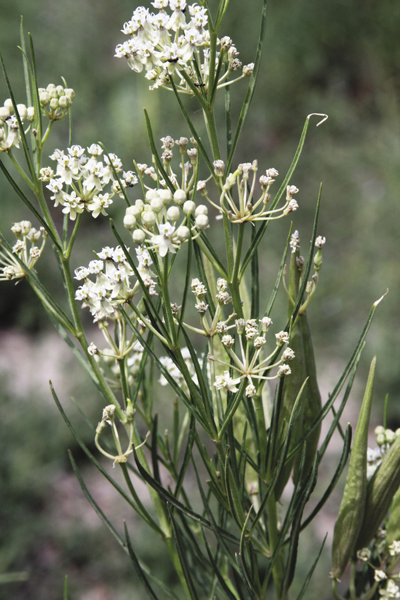
Figure 39. Horsetail milkweed (Asclepias subverticillata).
Description: There are over 100 species of milkweeds in the United States. The two that cause the most poisoning in New Mexico are whorled milkweed and horsetail milkweed. Similar in appearance, these two species can attain heights exceeding 4 feet; leaves are few to many, narrow and linear in shape, and arranged in a whorl around the stem; flowers are usually white or cream-colored with 5 fused petals, and are grouped together in dense, many flowered, umbrella-like heads at the top of the stem; milky sap is found in all species.
Distribution and Habitat: Scattered throughout the state in dry to moist soils, along stream banks, and in moist meadows to dry plains. Especially problematic in irrigated hay fields and pastures throughout the state. Found at elevations up to timberline.
Livestock Affected: All classes of livestock, including birds, are susceptible to milkweed poisoning.
Poisonous Principle and Toxicity: There are two distinct types of poisoning associated with Asclepias species. The first is a digestive tract/cardiac type; the second is a neurologic type. The most common poisoning stems from the neurologic type since the species causing the cardiac type of poisoning are quite unpalatable. A few neurotoxins have been identified as the suspected poisonous compounds. Cynafosides, a group of neurotoxic pregnane glycosides, are the most probable toxins in the neurologic poisoning of these milkweeds. Lethal levels for milkweed can be as little as 0.2% body weight of green plant material. A. subverticillata is one of the most toxic plants found in the state.
Signs of Poisoning: Depression, muscular weakness, trembling, ataxia, disturbed equilibrium, increased salivation, bloating, difficult breathing, dilated pupils, rapid and weak pulse, and coma followed by death from respiratory failure. Signs appear within a few hours after ingestion of a toxic dose, and death generally follows within one to a few days.
Conditions of Poisoning: The two species discussed here have strong rhizomes and hence form dense populations, making consumption more likely. Both species have an affinity for irrigated hay fields. This makes livestock more likely to consume the plant when it is present in hay; this is a common occurrence in New Mexico. Milkweeds remain highly toxic even when dried. Preventing consumption is the only effective means to reduce animal losses.
Oak
Shinnery Oak (Quercus havardii; Figure 40A)
Gambel Oak (Q. gambelii; Figure 40B)
Beech family (Fagaceae)
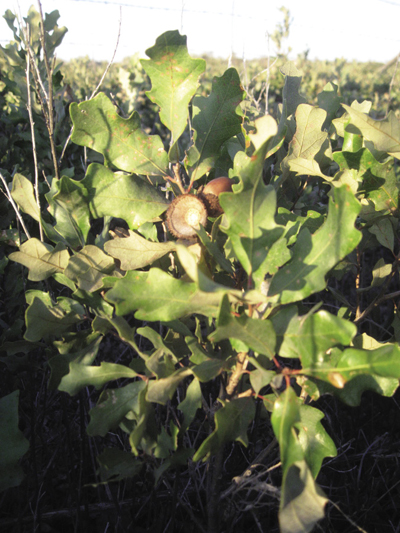
Figure 40A. Shinnery oak (Quercus havardii).
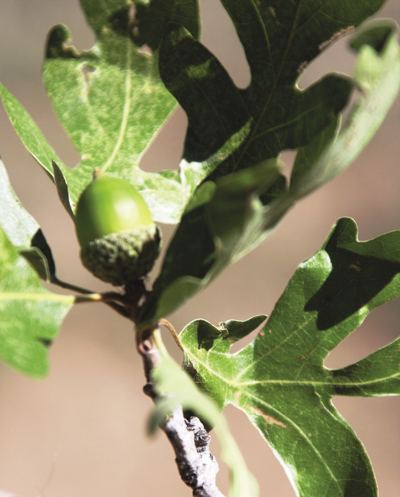
Figure 40B. Gambel oak (Quercus gambelii).
Description: There are many species of oak found in New Mexico, but the most common species implicated in livestock poisoning are shinnery oak and Gambel oak. Both are deciduous shrubs or small trees of the beech family. Gambel oak leaves are 3–6 inches long and deeply cut into long lobes; shinnery oak leaves are not deeply cut into lobes; male flowers hang in clusters, female flowers are solitary; fruit is an acorn.
Distribution and Habitat: Gambel oak is found throughout the mountainous regions of New Mexico at elevations from 5,000–8,000 feet, often in thickets. Shinnery Oak is found predominantly in the eastern third of New Mexico and is most prevalent in sandy areas.
Livestock Affected: Oaks have caused extensive losses of cattle, horses, sheep, and goats.
Poisonous Principle and Toxicity : Oaks contain gallotannins, which are found in dangerous concentrations in buds, stems, leaves, and flowers of new spring growth. Mature plants pose less risk because the mature leaves are hard and rarely consumed. As little as 6% of the animal’s body weight consumed over a week or more can cause oak poisoning.
Signs of Poisoning: Symptoms include impaction of the rumen, constipation, gaunt appearance, rough coat, dry muzzle, abdominal pain, excessive thirst, and frequent urination. At first, cattle pass small amounts of hard, brownish-black, pelleted feces, which later changes to diarrhea containing blood and mucous. Watery swellings may occur in the upper side of the body. Pulse becomes rapid but fever is absent. Symptoms usually last 3–10 days, but death may occur within 24 hours.
Death occurs in more than 85% of the cases if effective treatment is not given. Poisoned animals should be removed from the oaks, given a laxative, and fed alfalfa hay or similar forage.
Conditions of Poisoning: Occasional poisoning can occur any time, but most losses occur during a 30-day spring period when buds and immature leaves are relished by livestock, and other feed is scarce. Freezing of young leaves in this period may increase their normal toxicity. Poisoning from acorns is common in Europe, but not in America. Several oak species cause poisoning, but in New Mexico, shinnery oak is the most serious threat, mainly in areas where stands become dense. Losses can be prevented by deferring oak ranges during the period of high palatability in spring until other feed becomes plentiful, or by feeding a supplement of 54% cottonseed meal, 30% alfalfa, 10% hydrated lime, and 6% fat (one-ton mix: 1,040 lb cottonseed meal, 600 lb dehydrated alfalfa, 200 lb hydrated lime, and 160 lb vegetable oil) to prevent or minimize tannic acid poisoning. The supplement is a preventive measure and not an antidote, and it is critical that livestock are on the feed before consuming oak heavily.
Pigweed, Careless Weed (Amaranthus retroflexus)
Amaranth family (Amaranthaceae) (Figure 41)
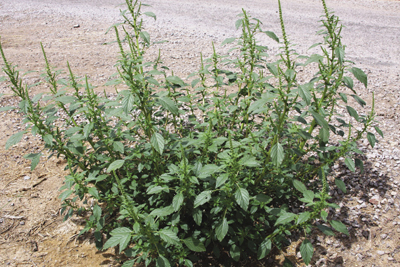
Figure 41. Pigweed or careless weed (Amaranthus retroflexus).
Description: Herbaceous summer annual varying in height from 1–6 feet depending upon growing conditions; leaves are alternate and somewhat diamond shaped in outline; flowers are small and separated into male and female flowers, forming long clusters in the axils between the leaves and the main stems and at the ends of the stems.
Distribution and Habitat: Common throughout the state and particularly abundant along river bottoms, drainage ways, and in irrigated fields. Plants flower throughout the summer months and are a main cause of hay fever in humans.
Livestock Affected: Cattle and sheep are more affected by pigweed toxicity than are horses.
Poisonous Principle and Toxicity : Knowledge of the potential toxins in pigweed is limited, and the causes of the myocardial degeneration and renal toxicity are not known. Pigweed is documented to accumulate oxalates, and levels of 2–5% oxalic acid have been measured. Under favorable growth conditions, pigweed will also accumulate high concentrations of nitrate.
Signs of Poisoning: 1) Renal toxicity: After ingesting pigweed for several days, the signs of renal disease appear over a period of a few hours and progressively include weakness, trembling, unsteadiness when standing, incoordination, knuckling of the pasterns, recumbency, paralysis, coma, and death in 1–2 days. In some instances, there may be diarrhea. The fatality rate is likely to exceed 50%. 2) Nitrate poisoning: The nitrate poisoning symptoms produced by pigweed are typical, but frequently complicated by the concurrent development of bloat. Care of poisoned animals should include treatment for bloat as well as for nitrate toxicity.
Conditions of Poisoning: Pigweed is relished by livestock, particularly during early growth stages. It is most dangerous immediately following significant environmental changes, but poisonings have occurred during all growth stages under a variety of conditions. Pigweed will remain dangerous in hay and in silage. As with other causes of renal failure, the basic goal of treatment is to assist the affected animal by symptomatic treatment and general nursing care to allow recovery of tubular function. Recovery requires several weeks, and the animal’s prognosis must be considered poor because of the possibility of developing chronic renal failure.
With respect to nitrate intoxication, treatment is similar to that generally prescribed for other causes of nitrate poisoning. The onset of Signs of Poisoning requires the immediate intravenous administration of 20 ml/100 kg body weight of a 2% solution of methylene blue.
Pingue (Hymenoxys richardsonii)
Sunflower family (Asteraceae) (Figure 42)
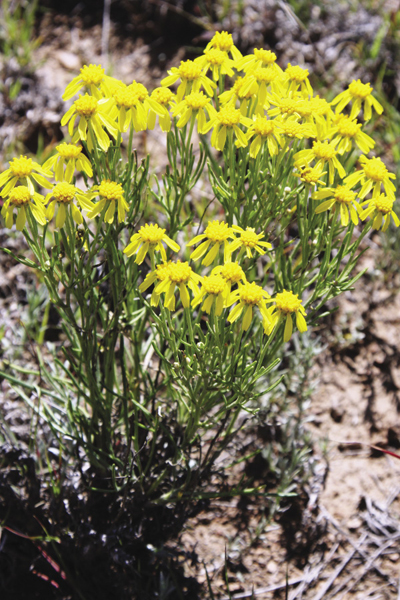
Figure 42. Pingue (Hymenoxys richardsonii).
Description: Small, perennial half-shrub growing up to 1 foot high from a thick, woody taproot; numerous stems arise from the woody base, which is covered with tufts of white cottony hair; bright yellow flowers are borne in flat-topped clusters; leaves are divided into 3–5 narrow lobes and are dotted with glands.
Distribution and Habitat: Pingue is found primarily in the piñon-juniper and ponderosa pine zones of northern and western New Mexico.
Livestock Affected: Pingue is most poisonous to sheep.
Poisonous Principle and Toxicity : The toxic principle of pingue has recently been determined to be a series of pseudoguaianolide sesquiterpene lactones. The glandular trichomes on the leaves contain nearly a dozen lactones. The seco-helenanolide, hymenoxyn, is the principal toxin. These lactones are highly irritating to the nose, eyes, and gastrointestinal tract.
Signs of Poisoning: Symptoms include a loss of appetite, abdominal pain, cessation of rumination, depression, bloating, frothing at the mouth, and a greenish discharge from the nose. Poisoned animals often lag behind the flock and may stand with an arched back. Post mortem lesions include congestion of lungs and intestinal tract, hemorrhages of the heart, and fatty degeneration of the liver.
Conditions of Poisoning: The plant is more often a problem in spring and fall, and all parts of the plant are poisonous. There is no specific treatment for poisoned animals; therefore, prevention through range management and livestock husbandry is the best approach. Livestock should be kept away from pingue-infested areas.
Poison Hemlock (Conium maculatum)
Parsley family (Apiaceae) (Figure 43)
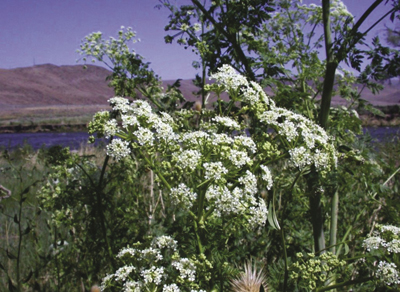
Figure 43. Poison hemlock (Conium maculatum).
Description: Biennial to perennial (on more favorable sites) erect forb 2–10 feet tall; stems are highly branched, hollow, and purple-spotted; leaves are 2–4 pinnately compound, deeply cut, and similar to parsley; when crushed, fresh leaves have a strong parsnip odor and nauseating taste; flowers are small, white, and grouped together in umbrella-like clusters.
Poison hemlock is often confused with water hemlock (Cicuta douglasii), but while the former is found on moist areas, the latter is usually semi-aquatic. The leaves of poison hemlock are much more finely divided than those of water hemlock, and the leaf veins terminate at the tips of the teeth, while those on water hemlock terminate between leaf teeth.
Distribution and Habitat: Introduced from Europe and now scattered throughout most of the state. Although poison hemlock is widespread on some ranges, generally it is most abundant in moist meadow sites above 6,000 feet.
Livestock Affected: All classes are susceptible, including humans.
Poisonous Principle and Toxicity : Poison hemlock contains at least five distinct yet closely related alkaloids. The best-known of these alkaloids is coniine. Toxic levels for cattle are between 0.1 and 0.5% (green-weight basis) of the animal’s weight (1–5 lb for a 1,000-lb animal). Reported levels for sheep are similar.
Signs of Poisoning: Poison hemlock produces two types of poisoning: depression of the central nervous system in all livestock and teratogenicity primarily in cattle and swine. Visible symptoms commence within one hour after ingestion and include nervousness, trembling, loss of coordination, dilation of the pupils, weakened pulse, coma, and eventual death through respiratory failure.
Conditions of Poisoning: Livestock poisoning is most common in spring when the tender, succulent, highly toxic new leaves appear. Poison hemlock leaves have a nauseating taste. Livestock seldom eat it, and usually do so only when forced by lack of preferred forage. Acute intoxications may be alleviated by administering stimulants and activated charcoal, which can effectively absorb the toxic alkaloids.
Poison Suckleya (Suckleya suckleyana)
Goosefoot family (Chenopodiaceae) (Figure 44)
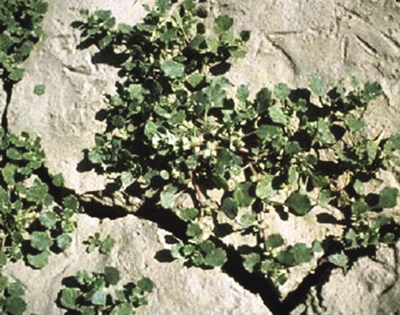
Description: Prostrate, succulent annual forb with reddish stems 1–2 feet long; leaves are alternate, triangular or spade-shaped, with dentate margins and long petioles; the small, inconspicuous flowers are borne in leaf axils; plants are monoecious, with male flowers on the tips of the branches and female flowers along the remainder of the branching stems; fruits are reddish brown and enclosed by papery, dark-colored scales joined at the tip.
Distribution and Habitat: Poison suckleya is found in localized areas in northeastern New Mexico, usually around ponds and along the edges of irrigated fields.
Livestock Affected: Cattle, sheep, and goats
Poisonous Principle and Toxicity : Cyanogenic glycosides are the cause of poisoning. The cyanogenic potential is usually less than 100 ppm, but may exceed 400 ppm in the fall of the year; 200 ppm is the “risk break” for toxicity from cyanogenic glycosides. The risk of poisoning is increased if animals drink water shortly after consuming the plant.
Signs of Poisoning: Acute poisoning is typical, with distress, muscle twitching, incoordination, licking of the lips, dribbling of urine, staggering, and then collapse. Initially the respiratory rate increases, but then becomes depressed. Heart rate becomes rapid and irregular. Death occurs a few minutes after the animal goes down.
Conditions of Poisoning: Episodes occur in years when there are dense stands of the plant around the ponds where livestock water.
Ponderosa Pine (Pinus ponderosa)
Pine family (Pinaceae) (Figure 45)
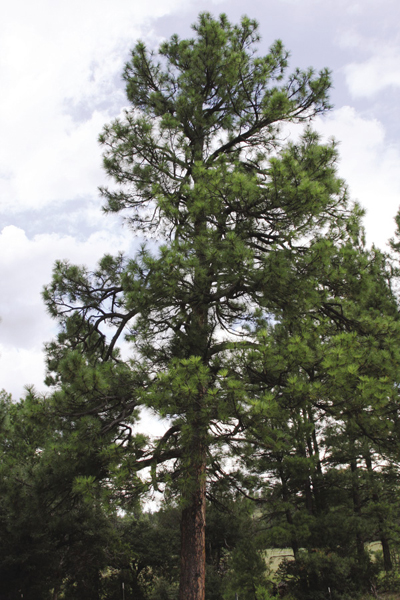
Figure 45. Ponderosa pine (Pinus ponderosa).
Description: Large, erect tree 50–150 feet tall and up to 6 feet in diameter; bark on young trees is brown to black and deeply furrowed, bark on older trees is yellow-brown to cinnamon red, 2–4 inches thick, broken into large, flat plates; needles are 2.5–8 inches long, grouped together in bunches of three in tufts at branch ends; cones are bright green, becoming reddish-brown when older, 2–4 inches long and 1–2 inches thick before opening.
Distribution and Habitat: Ponderosa pine is widespread throughout the mountains of New Mexico at elevations between 7,000 and 9,000 feet.
Livestock Affected: Cattle.
Poisonous Principle and Toxicity : The specific cause of the abortions in cattle is apparently due to isocupressic acid. Other compounds present in the needles and bark include diterpene abietane acids, which are also toxic to cattle and are possibly responsible for the kidney and brain degeneration in affected cattle. Isocupressic acid causes a marked decrease in uterine blood flow as a result of vasoconstriction. This results in a decrease in progesterone as a result of necrosis of the corpus luteum.
Signs of Poisoning: Cows consuming toxic quantities (4–5 lb/day for at least 3 days) of pine needles in the last trimester of pregnancy will abort the calf 2–21 days later. A retained placenta usually requires manual removal and is characteristic of those cows affected. The mortality rate of these cattle is high if they do not receive supportive treatment. Most deaths are probably due to secondary complications. In several instances, where cows have been examined after aborting, severe liver damage has been found. Calves born alive from poisoned cows are often weak and soon die.
Conditions of Poisoning: Abortions resulting from eating pine needles occur in the latter part of pregnancy. The most common seasons include late fall, winter, and early spring when animals may be deficient in vitamin A and desirous of green plant material. Because of the resinous taste, animals seldom eat toxic quantities, unless forced to do so through a lack of other more preferred forage. Severe losses have occurred after winter storms that leave fallen ponderosa pine trees available to hungry cattle.
Prince’s Plume (Stanleya pinnata)
Mustard family (Brassicaceae) (Figure 46)
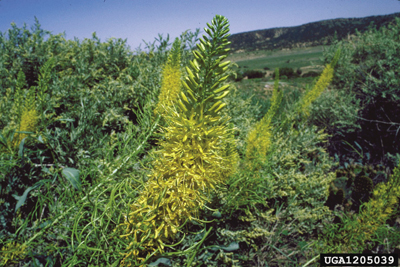
Figure 46. Prince’s plume (Stanleya pinnata). Photo by Dave Powell, USDA Forest Service (retired), Bugwood.org.
Description: Coarse, herbaceous perennial originating from a stout, woody taproot; stems are erect, thick, and woody toward the base, 1.5–5 feet tall; leaves are variable, pale green, somewhat thickened and fleshy, lower usually pinnately compound, 2–8 inches long, upper becoming smaller, and attached directly to the stem; flowers are numerous, yellow, attached directly onto the upper 0.5–1.5 feet of stem, conspicuous above the leafy part of the plant; fruit is a slender pod 0.06–0.125 inch in diameter and 1–3 inches long.
Distribution and Habitat: Sparsely scattered in the state in dry grasslands or shrub lands on soils high in selenium.
Livestock Affected: All classes.
Poisonous Principle and Toxicity : Poisoning by prince’s plume is caused by selenium. Selenium concentrations in the plant can vary, and actual concentration determines the toxicity of the plant.
Signs of Poisoning: Three basic syndromes can develop from eating toxic quantities of selenium, depending the selenium concentration of the plant, the amount ingested, and the time over which the poisoning takes place. The first type of poisoning is acute, while the latter two are more or less chronic.
Acute selenium poisoning is caused by eating a large single dose. Animals suffering acute poisoning can be recognized by their uncertain gait, lowered head and drooped ears, diarrhea, increased urination, bloating accompanied by abdominal pain, rise in temperature, rapid and weak pulse, labored breathing, and dilated pupils. Death from respiratory failure occurs after complete prostration and apparent unconsciousness. These signs generally appear within a few hours to a couple of days after ingestion. Widespread damage (hemorrhage, congestion, tissue degeneration, and necrosis) to the heart, lungs, kidneys, liver, spleen, and digestive tract also result from this type of poisoning.
Chronic selenium poisoning occurs in two forms. The more pronounced case, commonly referred to as blind staggers, results from livestock grazing plants with moderate selenium concentrations (up to 200 ppm) for 1–2 weeks. It is characterized by excitement; animals wandering aimlessly, failing to distinguish fences or other immobile objects; and inactivation of the digestive tract, giving animals a depraved appetite and causing them to chew on fence rails, pieces of bone, or metallic objects. These signs may be followed by paralysis, weakness, difficult breathing, and death through respiratory failure. The second, and more chronic, situation results from livestock grazing plants with lower selenium concentrations (5–40 ppm) ingested over a period of a month or more. This case is sometimes, inaccurately, referred to as alkali disease. It is characterized by dullness, emaciation, deformed hooves, and severe lameness. Hooves may become so severely deformed and bent forward that affected animals are unable to obtain adequate food or water. Death from starvation or thirst is not uncommon.
Internal lesions are similar in both chronic syndromes and are characterized by marked degeneration of the body organs and erosion of the contact surfaces of the long bones. In severe cases bone marrow becomes gelatinous.
Conditions of Poisoning: Prince’s plume grows only on soils high in selenium, and is often used as an indicator of high-selenium soils. The plant absorbs small amounts of selenium from the soil and accumulates it in sufficient amounts to kill livestock feeding on the plant material. Often, plants such as western wheatgrass (Agropyron smithii), winterfat (Ceratoides lanata), and Nuttall’s saltbush (Atriplex nuttallii) will accumulate toxic levels of selenium when growing in association with prince’s plume.
Although prince’s plume is poisonous at all times, and only small amounts are required to cause poisoning, animals will usually find it so unpalatable that they will only eat it when forced to by near starvation conditions. On good-condition range where more palatable species are abundant, there is little danger of losses from this species.
Russian Knapweed (Acroptilon repens)
Sunflower family (Asteraceae) (Figure 47)

Figure 47. Russian knapweed (Acroptilon repens). Photo by Steve Dewey, Utah State University, Bugwood.org.
Description: Creeping perennial forb that is erect, stiff, and branched and reaches heights of 1–3 feet; young stems are covered with short gray hair; lower leaves are alternate with toothed margins, upper leaves have entire margins and have short, stiff hairs; flowers occur in heads resembling thistles; lavender to white flowers are about 0.5 inch in diameter; the papery bracts have no spines; seeds are white to gray in color.
Distribution and Habitat: Russian knapweed is a state-listed noxious weed that aggressively spreads into rangeland, fields, and roadsides. It is found in all counties in New Mexico.
Livestock Affected: Horses.
Poisonous Principle and Toxicity : Russian knapweed contains a sesquiterpene lactone, repin; it also contains a dopaminergic neurotoxin identical to the one found in yellow star-thistle. Russian knapweed is more toxic than yellow star-thistle, requiring ingestion of about 2% body weight over a shorter time period of about 30 days. Consumption of 59–71% body weight of Russian knapweed is required before Signs of Poisoning occur.
Signs of Poisoning: Prolonged consumption of Russian knapweed results in a disease known as “chewing disease,” as seen in yellow star-thistle intoxication. The continual chewing causes frothing of saliva. Prehension and mastication are severely affected, but swallowing is not affected. Weight loss and depression are common, as is inhalation pneumonia.
Conditions of Poisoning: Similar in low palatability to yellow star-thistle, horses seem to develop a craving for the plant and will graze it exclusive even if other plants are present.
Russian Thistle(Salsola iberica, S. tragus)
Goosefoot family (Chenopodiaceae) (Figure 48)
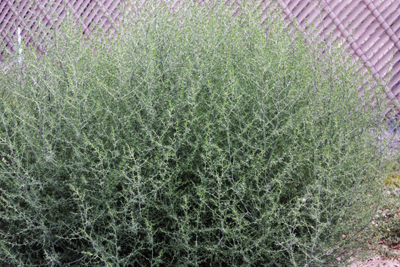
Figure 48. Russian thistle (Salsola sp.).
Description: Also known as tumbleweed; an aggressive, annual forb that was introduced from Eurasia; it consists of many branches and reaches maturity at 2–6 feet in height; at maturity, it is stiff, round, and very prickly; the spine-tipped leaves are oval; stems have distinctive purple striations when the plant is young and growing.
Distribution and Habitat: Russian thistle is found worldwide. Tumbleweeds are found in every county in the state and are common in disturbed areas, along roadsides, and in fallow fields. A prolific seed producer, Russian thistle is also extremely effective in seed dispersal when the plant breaks off at the ground surface and tumbles with the wind.
Livestock Affected: All ruminants, with cattle being the most commonly poisoned.
Poisonous Principle and Toxicity: Nitrates are the most common, levels of which can reach 5,000 ppm as NO3, and rise with increased salinity. Oxalates are also present in the plant, with 2–3% dry weight frequently encountered.
Signs of Poisoning: Livestock suffering from acute nitrate poisoning are often found dead with no previous history of illness. Less acute nitrate poisoning signs occur in this order: weakness, unsteady gait, collapse, shallow and rapid breathing, rapid pulse, dilated pupils, recovery, delayed abortion, coma, and sudden death. Unpigmented areas of skin may have a blue-brown discoloration. The blood may be a chocolate brown color.
Conditions of Poisoning: Environmental conditions often affect the levels of nitrate in Russian thistle. Nitrate poisoning is more common with plants growing in soils high in nitrogen, such as corrals or fertilized areas. Excessive shade, lack of water, and stress or physical damage may also increase nitrate levels.
Sacahuista, Bear Grass (Nolina microcarpa, N. texana)
Lily family (Liliaceae) (Figure 49)
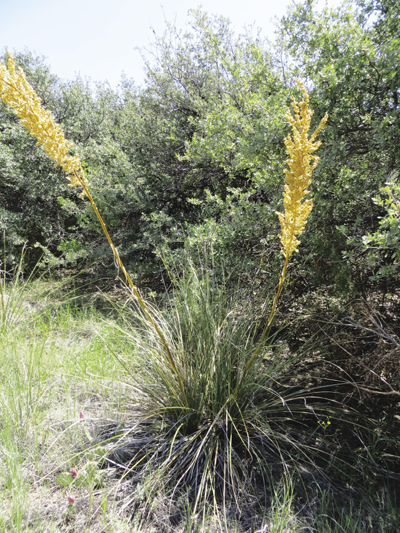
Figure 49. Sacahuista or bear grass (Nolina sp.).
Description: Perennial with thick, woody basal stems; the numerous long, narrow leaves have finely toothed margins and arise from a short basal stem, giving the plant the appearance of a course bunch grass 2–3 feet tall; small white to greenish flowers appear in May and June and are in dense, elongated clusters on stalks extending above the leaves; fruit is a dry, three-part capsule containing plump seeds in separate cells.
Distribution and Habitat: Sacahuista is largely restricted to the southern third of the state, and is found on hills and mountainsides at elevations from 3,000–7,000 feet.
Livestock Affected: Cattle, sheep, and goats may be poisoned, but sheep and goats are most susceptible.
Poisonous Principle and Toxicity : The poisonous principle is probably a sapogenin; it is found mainly in the flower buds, flowers, and fruits. The evergreen leaves are usually grazed without ill effects and are even considered desirable forage for cattle in times of drought. However, excessive grazing of the plant can cause photosensitization. The minimum toxic dose for sheep is about 1.1% of the animal’s weight of buds or blooms.
Signs of Poisoning: Symptoms appear several days after the first feeding. Poisoned animals show signs of jaundice, loss of appetite, and progressive weakness. Animals that develop severe jaundice usually die. Less severely poisoned animals, and those in the early stages of poisoning, usually recover if they are removed from the pasture and given feed and water. Other symptoms include a yellow nasal discharge, yellow or red urine, yellow-brown liver with greenish plugs in the ducts, swollen and greenish kidneys, appearance of a purplish band above the hoof, and photosensitization evidenced by itching skin and swollen face and ears.
Conditions of Poisoning: Animals relish the flower stalks in the spring when other forage plants are lacking. The best control is to remove the animals from heavily infested pastures for a short period during the flowering and early fruiting stage when the stalks are succulent and palatable.
Sand Sagebrush (Artemisia filifolia, A. tridentata, A. frigida)
Sunflower family (Asteraceae) (Figure 50)

Figure 50. Sand sagebrush (Artemisia filifolia).
Description: Sand sagebrush (Artemisia filifolia) is a perennial shrub up to 4 feet tall; stems and leaves are covered with gray hairs, which give the plant a silvery appearance; leaves are 3–4 inches long and divided linearly into filiform segments; flowers are small and borne at the end of the stems.
Distribution and Habitat: Sand sagebrush prefers sandy and deep sand range sites across the state, but is especially common in the eastern third of New Mexico.
Livestock Affected: Horses.
Poisonous Principle and Toxicity : “Sage sickness” in horses is probably caused by both sesquiterpene lactones and essential oils or monoterpenes.
Signs of Poisoning: Horses with “sage sickness” exhibit very similar neurologic signs to those with locoweed poisoning. In New Mexico, locoweed and sand sagebrush frequently occupy the same range. Ataxia, or incoordination, is particularly noticeable in the forequarters, with normal hindquarters. Some horses circle incessantly and may become excitable and unpredictable. Although similar to locoweed poisoning, horses will fully recover within 1–2 months after eating sand sagebrush.
Conditions of Poisoning: The principal toxins in sagebrush are greatest in the fall and winter, but vary considerably in quantity depending on growing conditions and season. Heavy, persistent snowfall that covers grass and forbs may trigger an episode of “sage sickness.”
Silverleaf Nightshade (Solanum elaeagnifolium)
Nightshade family (Solanaceae) (Figure 51)
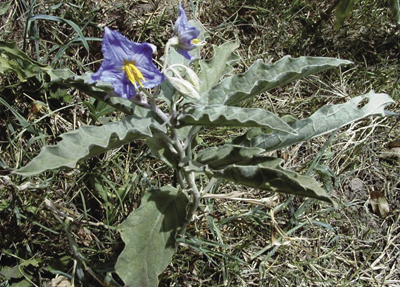
Figure 51. Silverleaf nightshade (Solanum elaeagnifolium).
Description: The most common species of Solanum in New Mexico; an upright, prickly, perennial forb up to 3 feet tall, but normally around 1 foot tall; reproduces by seed and creeping rootstalks, making it a challenge to control; the tiny, densely matted star-shaped hairs give the plant its characteristic silver color; leaves are lanceolate with wavy margins; flowers are showy and violet or bluish in color; fruit is yellow, about 0.5 inch in diameter, and slick-skinned.Distribution and Habitat: Silverleaf nightshade occurs all across New Mexico in a variety of soil types. Although found predominately on disturbed sites, it will occupy dense sod of irrigated pastures as well.
Livestock Affected: All classes of livestock are susceptible. An interesting interaction between the anthelmintic ivermectin and silverleaf nightshade occurs in horses. Normal recommended dosages of ivermectin in combination with silverleaf nightshade in the diet results in markedly elevated levels of ivermectin in the brain, causing death within 2 days.
Poisonous Principle and Toxicity : Silverleaf nightshade has a wide variety of steroidal (tropane) glycoalkaloids, including solanine and hyoscyamine, that act on the autonomic nervous system by blocking the action of cholinesterase. This causes an accumulation of the neurotransmitter acetylcholine, which inhibits the parasympathetic nervous system, causing decreased salivation and intestinal motility, dilated pupils, and tachycardia. The alkaloids also have a direct irritant effect on the gastrointestinal tract, causing colic, constipation, or hemorrhagic diarrhea.
Signs of Poisoning: Initially there may be central nervous system excitement, but depression follows with decreased heart and respiratory rate, muscle weakness, dilated pupils, colic, and watery diarrhea. Stomach rupture and paralysis of the digestive system in horses can be attributed to the tropane alkaloids.
Conditions of Poisoning: Silverleaf nightshade is highly unpalatable, and consequently poisoning cases are confined to severely abused pasture. Livestock showing severe anticholinergic symptoms such as muscle tremors, dilated pupils, intestinal stasis, and depressed respiratory rate may be treated with physostigmine. Oral administration of activated charcoal as an adsorbent is effective if given soon after the plant has been eaten.
Skunk Cabbage (Veratrum californicum)
Lily family (Liliaceae) (Figure 52)
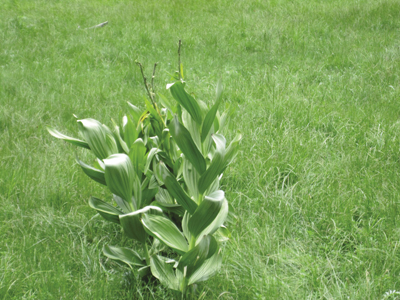
Figure 52. Skunk cabbage (Veratrum californicum).
Description: Large, coarse, erect, perennial forb 2–6 feet tall; stems are stout and hairy, arising from thick, short rootstalks; leaves are broad, prominently veined, 4–12 inches long and 3–8 inches wide; basal leaves are oval, becoming lanceolate above; flowers are numerous, white to greenish, loosely to densely bunched along the main stem.
Distribution and Habitat: Skunk cabbage occurs in the mountainous areas of northern and western parts of the state on wet sites at moderate elevations. Commonly found on stock driveways in the foothills and mountains as a result of disturbance.
Livestock Affected: Primarily sheep, although other classes are sometimes affected.
Poisonous Principle and Toxicity : There are over 50 complex alkaloids associated with skunk cabbage. The plant is most dangerous upon emergence and becomes less toxic and more unpalatable as it matures. The roots are more toxic than the leaves. Several alkaloids, including cyclopamine, jervine, and cyclopasine, are teratogenic. Sheep have shown Signs of Poisoning after eating 6–12 ounces of green stems or leaves.
Signs of Poisoning: Although skunk cabbage is known for its teratogenic effects, acute poisoning does occur, symptoms of which include excessive salivation, vomiting, and muscular weakness resulting in general paralysis, muscular tremors, and spasms; fast, irregular heart beat; slow, shallow breathing; convulsions; and coma followed by asphyxia. A lethal dose will cause death in 3–10 hours after eating the plant.
Pregnant ewes that eat skunk cabbage during the second or third week after conception may produce lambs with a congenital malformation referred to as “monkey face.” Many lambs are born with only one central eye. In severe cases, the eyes and nose are entirely lacking, and the upper division of the brain is imperfectly formed.
Monkey-face lambs carried the full term are usually born alive, but soon die because they cannot breathe and feed properly. Ewes carrying severely deformed fetuses may fail to lamb at the end of the normal term. In these cases, the fetus either continues to grow to an abnormal size or dies within the uterus. In either case, the fetus must be removed to save the ewe.
Conditions of Poisoning: Because of its sharp, burning taste, skunk cabbage is not eaten in normal grazing situations. Most losses occur when animals are forced to eat it, either by being held on a range lacking more preferred species or by not being allowed to practice selective grazing while being herded through dense stands. Human poisoning has resulted from using the leaves of skunk cabbage for plates while camping and picnicking, and eating them along with the food.
Sleepy Grass (Stipa robusta)
Grass family (Poaceae) (Figures 53A and 53B)
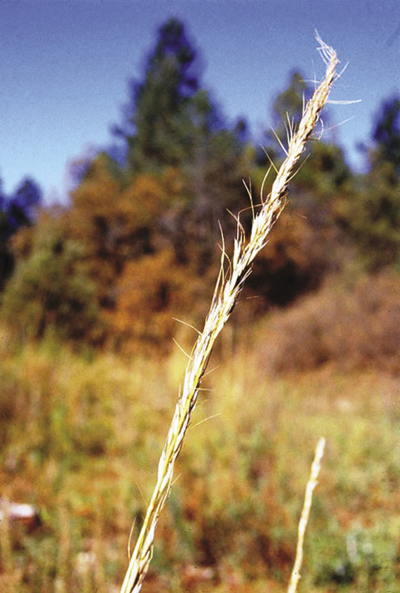
Figure 53A. Sleepy grass (Stipa robusta).
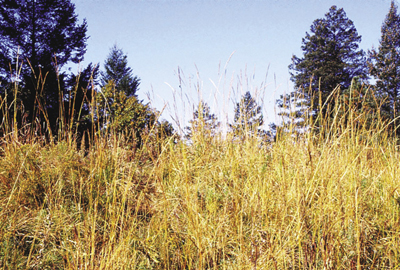
Figure 53B. Sleepy grass (Stipa robusta).
Description: Stout perennial grass forming erect clumps, mostly 2–4 feet tall; leaves are flat, 0.3 inch wide, up to 2 feet long; inflorescence is a green or greenish-yellow terminal panicle up to 1 foot long; spikelets are narrow, about 0.5 inch long, tipped by a long, dry, twisted awn; awns are about 1 inch long.
Distribution and Habitat: Sleepy grass grows primarily in the ponderosa pine zones in the mountains of the state.
Livestock Affected: Horses primarily, with cattle and sheep being affected to a lesser extent.
Poisonous Principle and Toxicity : The narcotic-like substance was once thought to be diacetone alcohol. However, a more likely cause of the problem is toxins produced by endophytic fungi of the Clavicipitaceae family. The endophytes produce high levels of ergonovine and lysergic acid in the plant tissues. Soporific effects may be caused by acetone, a known depressant, released in the digestive tract. The least toxic dose for a horse is 0.6% of the animal’s weight; 1% body weight is the average effective single dose.
Signs of Poisoning: Several hours after eating sleepy grass, animals become quite docile. All movements are slow, and animals tend to drag their feet. Horses are sleepy and are difficult to rouse. Heads are droopy, legs are crossed, and horses stagger weakly if moved. Sweating may be profuse, and the narcosis may last for several days in horses and less than 24 hours in cattle and sheep. Death is rare.
Conditions of Poisoning: Sleepy grass is not palatable and is eaten only when other forage is lacking. In general, livestock will not eat the plant again after a bout of sleepy grass poisoning.
Snakeweed
Broom Snakeweed (Gutierrezia sarothrae; Figures 54A–54C)
Threadleaf Snakeweed (G. microcephala)
Sunflower family (Asteraceae)
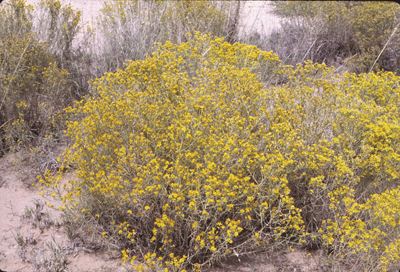
Figure 54A. Broom snakeweed (Gutierrezia sarothrae).
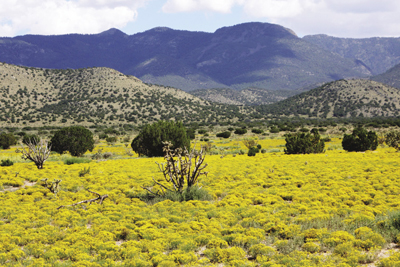
Figure 54B. Broom snakeweed (Gutierrezia sarothrae).
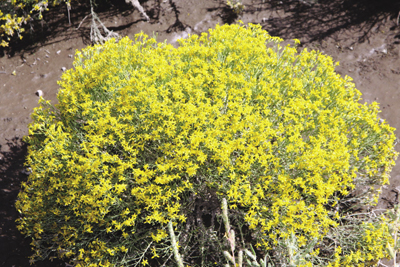
Figure 54C. Broom snakeweed (Gutierrezia sarothrae).
Description: Low, perennial half-shrub growing 1–2 feet tall; many branched and quite resinous; leaves are linear, entire, and alternately arranged; the yellow flowers occur in small composite heads, and the heads usually occur in small clusters at the tips of the numerous branches.
Distribution and Habitat: The two species occur over most of the state from 3,000–8,000 feet elevation.
Livestock Affected: Cattle, sheep, and goats have all been reported to have been poisoned.
Poisonous Principle and Toxicity : The poisonous principle is apparently a saponin. Monoterpenes and diterpene acids similar to those found in ponderosa pine have also been isolated. It is most toxic at the earlier stages of growth during early leaf development and when growing on sandy soils. Broom snakeweed is also a secondary or facultative selenium absorber.
Signs of Poisoning: Effects of snakeweeds include death, abortion, weak or lightweight calves, and retained placentas. As little as 20 lb of fresh plant material consumed in 7 days will cause cows to abort. Consuming 10–20% of the body weight in 2 weeks has caused death in sheep, cattle, and goats. Nasal discharge, weakness, and anorexia are also evident prior to the late-term abortion.
Symptoms include listlessness, loss of appetite, loss of weight, nasal discharge, fecal mucous, bloody urine, and vaginal discharge. A dry and peeling muzzle with nasal discharge has also been noted in cattle. Postmortem lesions include severe damage to kidneys and liver. The spleen is congested and the intestinal tract is inflamed. The most common sign is a retained placenta.
Conditions of Poisoning: Drought conditions, or times when no other green forage is available, aggravate the problem as livestock begin to search for fresh green material. Sandy soils have been implicated in a higher incidence of broom snakeweed poisoning.
Sneezeweed
Orange Sneezeweed (Helenium hoopesii)
Small-head Sneezeweed (H. microcephalum; Figure 55)
Sunflower family (Asteraceae)
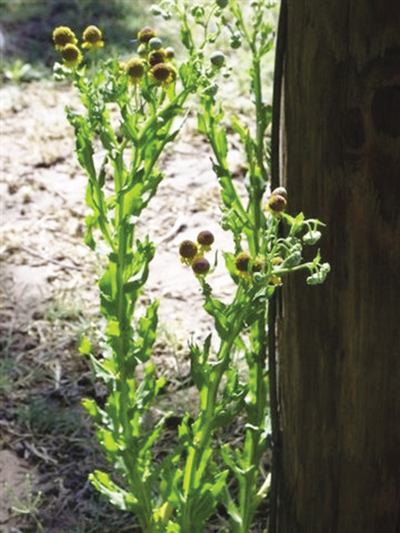
Figure 55. Small-head sneezeweed (Helenium microcephalum).
Description: There are around 40 species of Helenium in North America. Some are popular ornamentals cultivated for their showy flowers. The leaves are simple, alternate, and lanceolate with entire margins; flowering heads are showy, numerous, and borne in solitary, terminal stalks.
Distribution and Habitat: Orange sneezeweed (H. hoopesii) is found at elevations above 5,000 feet and on moist sites, whereas small-head sneezeweed (H. microcephalum) is found at lower elevations on drier sites in southern and southeastern ranges in New Mexico.
Livestock Affected: Sheep, horses, and dogs.
Poisonous Principle and Toxicity : Sneezeweeds contain sesquiterpene lactones, which irritate the nose and gastrointestinal tract. Hymenovin is the primary toxin involved. In addition to the irritant effects, the lactones have a profound effect on metabolism via their ability to bind with sulfhydryl groups. Small-head sneezeweed (H. microcephalum) is the most toxic; a dose of 0.125% body weight of green stems and leaves causes illness, and a dose of 0.25% is lethal.
Signs of Poisoning: The toxic effects of sneezeweeds are cumulative. Sheep consuming 1.5% body weight or more of orange sneezeweed green plant material for several weeks develop diarrhea, vomiting, and possibly death. “Spewing disease,” or regurgitation and vomiting, is occasionally seen in the later stages of the chronic or sub-acute forms of the disease.
Conditions of Poisoning: Literature has suggested that the leaves and stems of the mature plant cause most of the poisoning, while the immature rosettes are relatively safe. However, since the poisoning is cumulative, one must assume that the lactones are present in the immature plants also. Adhering to “range readiness” criteria helps ensure there is ample forage available and thereby reduces the possibility of grazing sneezeweed.
Sorghum
Grass and grain sorghums (Sorghum bicolor)
Grass family (Poaceae) (Figure 56)
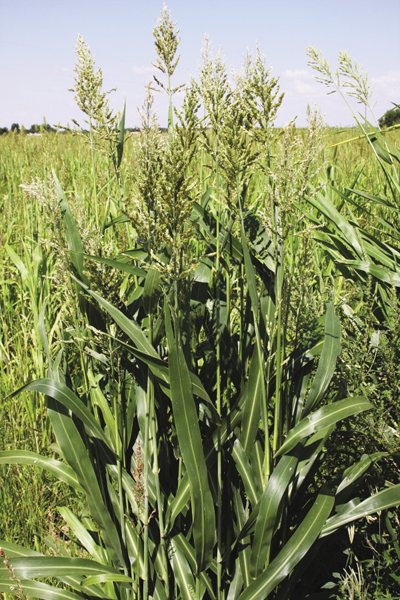
Figure 56. Sorghum (Sorghum bicolor).
Description: Sorghums are generally annuals, although a few perennials are important for livestock forage, especially Sorghum × almum, a non-weedy relative of Johnson grass. Generally speaking, the grass sorghums grown for forage are tall, slender-stemmed, and narrow-leaved; these grass sorghums are generally referred to as “Sudan grasses”; notable varieties include ‘Hay Grazer’, ‘Sweet Sudan’, and ‘Sudax’, among others. Grain sorghums include numerous varieties of milo and hegari. Sorgos, plants grown for syrup, and broomcorn sorghums are generally of lesser importance in New Mexico.
Distribution and Habitat: Grass and grain sorghums are commonly found in farming areas throughout the state. The vast majority of these plants are grown under irrigation.
Livestock Affected: Most mortality occurs in cattle, but sheep and horses have also been poisoned.
Poisonous Principle and Toxicity : Most losses from grass and grain sorghums are from prussic acid or hydrocyanic acid poisoning, but plants also accumulate dangerous levels of nitrate. A more detailed discussion of nitrate, cyanogenesis, and ataxia/cystitis/teratogenesis problems associated with various members of the grass family is found in the SPECIAL POISONING PROBLEMS AND ASSOCIATED PLANTS section of this publication.
Signs of Poisoning: Symptoms are typical of prussic acid poisoning. The reliable diagnostic sign of bright red venous blood will help identify prussic acid as the poison. However, dark brown arterial and venous blood would indicate poisoning by nitrate.
Conditions of Poisoning: Danger from prussic acid poisoning is greatest when soils are high in available nitrogen and low in phosphorus, when plants have been exposed to drought or disease that slows or stunts growth, and/or when plants are making rapid regrowth or have been frosted. Lack of soil moisture from low rainfall or lack of sufficient irrigation typically causes plant stress and accumulation of prussic acid. Leaves are more toxic than stems, and young plants are more toxic than mature ones. When plants have been frosted, they are typically the most dangerous for livestock. It is advisable to keep animals off the affected fields until the plants are completely dead.
Sweet Clover
White Sweet Clover (Melilotus alba; Figure 57)
Yellow Sweet Clover (M. officinalis)
Legume/pea family (Fabaceae)
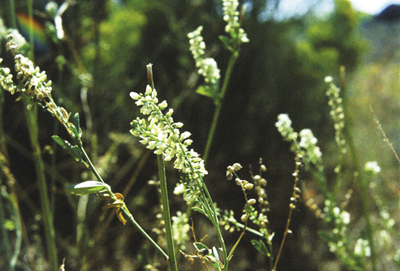
Figure 57. White sweet clover (Melilotus alba).
Description: Annual or biennial forbs that are highly branched and 2–6 feet tall; stems are robust, erect, and sparsely hairy; leaves are divided into three finely toothed ovoid leaflets; flowers are white or yellow, about 0.25 inch long, pea-like, borne in slender clusters arising from the axils of the leaves; fruit is an egg-shaped pod, one- (usually) to four-seeded.
Distribution and Habitat: Introduced from Eurasia, but now abundant throughout the state in fields, roadsides, and waste places; found in a wide range of soil and moisture conditions.
Livestock Affected: Cattle, although other classes of livestock are mildly susceptible.
Poisonous Principle and Toxicity : Sweet clovers contain relatively non-toxic coumarin, which has a vanilla-like fragrance. Fungal growth in the poorly cured stems eventually converts coumarin into dicoumarol, which interferes with the proper functioning of vitamin K. There is insufficient vitamin K available for the production of prothrombin, which is essential for blood coagulation. Toxic effects are clearly seen at levels of 20–30 ppm of dicoumarol. Levels of dicoumarol have been measured as high as 165 ppm. Moderately toxic sweet clover hay will produce Signs of Poisoning in 3–8 weeks, the average being about a month. Sweet clover is not a problem when grazed.
Signs of Poisoning: The characteristic sign of this poisoning is intractable bleeding due to inhibition or retardation of blood coagulation. Morbidity is usually low (10–15%) and the case fatality high (50%). The most devastating episodes occur during cattle working when branding, dehorning, and castrations are performed.
Common signs include marked swellings on any part of the body, although most commonly on either side of the vertebral column, shoulders, thighs, neck, and chest areas. These swellings may reach several feet in circumference, protruding as much as 10–12 inches. The visible membranes may turn pale, while the animal becomes dull and stiff. The pulse becomes fast and weak just before death without struggle.
Conditions of Poisoning: Losses from sweet clover poisoning historically coincided with its popularity as a hay or silage. It was around this time period (early 1920s) that a seemingly new clostridial-type hemorrhagic or blackleg-type of disease was recognized. Eventually, the feeding of sweet clover hay was linked to the disease. Only damaged or spoiled sweet clover hay or silage is toxic. The damaged hay is generally moldy. The mold may not be readily visible because the fungus is in the stalk cavities.
There is no evidence that green sweet clover growing on the range, or properly cured sweet clover hay, is ever toxic. Under these conditions, it provides good forage for all classes of livestock. Any questionable hay should be inspected by a qualified individual before feeding. Moldy sweet clover can be safely fed by either alternating (at less than 2-week intervals) or mixing with good-quality hay.
Tall Fescue (Festuca arundinacea)
Grass family (Poaceae) (Figure 58)
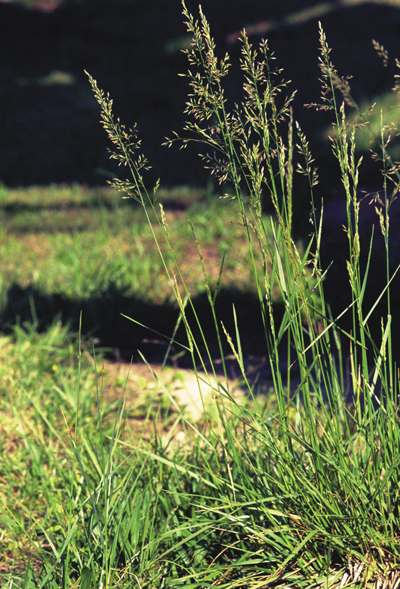
Figure 58. Tall fescue (Festuca arundinacea).
Description: Introduced cool-season perennial grass that is one of the most important pasture grasses in the United States. Nationwide, it is grown on over 35 million acres. In New Mexico, it is a common pasture grass on irrigated lands. It has smooth, dark green, stiff blades and attains a height of around 4 feet; panicle is 4–12 inches long with 3–10 spikelets on the short panicle branches.
Distribution and Habitat: Common in irrigated fields statewide; a popular forage plant for cattle and horses.
Livestock Affected: Cattle and horses.
Poisonous Principle and Toxicity : Tall fescue toxicosis is caused by the endophyte fungus Neotyphodium coenophialum. The fungus infects the plant and produces alkaloids that can reach concentrations as high as 14 ppm, of which one half are usually ergopeptides. The lifecycle of the fungus is completed entirely within the plant’s tissues, and there is no spore formation for external dissemination. Transmission of the fungus is strictly vertical through the grass seed. Perhaps as much as 90% of tall fescue in the U.S. is infected with N. coenophialum. Laboratory tests are required for detection of the fungus.
Signs of Poisoning: “Summer slump” is common in cattle that are grazing endophyte-infected tall fescue. The clinical signs include increased body temperature and respiratory rate, decreased feed intake, weight loss, and rough hair coat. Cattle tend to stand in the shade or water instead of grazing. The greater the heat and humidity stress, the more severe the syndrome.
Fat necrosis is often seen in animals that have had the summer slump. It is characterized by the appearance of numerous hard fat masses in the abominable cavity.
“Fescue foot” is the most striking of the fescue toxicity syndromes. Elevated body temperature, weight loss, and development of a rough hair coat are usually accompanied by slight diarrhea. The animal stands with arched back and swollen coronary bands. Eventually, a clear line of demarcation develops around the limb just above the fetlock. The swelling below this line progresses to dry gangrene and eventual loss of the foot. Similar lesions may occur in the tail, with eventual loss of the switch. The syndrome is indistinguishable from the dry gangrene of ergotism.
Infected tall fescue can cause several complications in pregnant mares, including prolonged gestation, failure of mammary development and lactation, difficult deliveries, retained placentas, abortion, and foal death. Foals that are born alive typically have overgrown hooves, irregular incisor eruption, long hair coats, and poor muscling.
Conditions of Poisoning: Infected tall fescue can cause poisoning any time the fungus is ingested. Increased incidence of poisoning occurs during the growing season. High summer temperatures and humidity exacerbate the summer slump syndrome. Fungus-free seed has been available since the 1980s and should be used exclusively when developing new pastures. Providing alternative or fungus-free grasses can reverse the summer slump and fescue foot syndromes.
Tansy Mustard (Descurainia pinnata)
Mustard family (Brassicaceae) (Figure 59A)

Figure 59A. Tansy mustard (Descurainia pinnata).
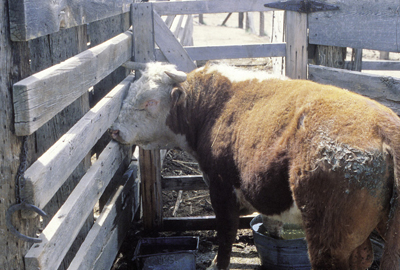
Figure 59B. Hereford bull with blindness caused by tansy mustard poisoning.
Description: Annual forb growing up to 2 feet tall, usually single-stemmed, leafy throughout, and covered with fine gray hairs; leaves are alternate and pinnately divided into numerous small segments; flowers are small, yellow, and occur in long clusters at the ends of the stem; fruits are long, round, slender, two-celled capsules filled with numerous small, waxy seeds.
Distribution and Habitat: Tansy mustard is widely distributed throughout the state up to 7,000 feet in elevation. This annual forb appears to prefer sandy range sites.
Livestock Affected: Cattle are the only class of livestock reported to be poisoned by tansy mustard.
Poisonous Principle and Toxicity : The toxin is unknown. Despite similarity of the symptoms with those produced in one type of selenium poisoning, tansy mustard does not contain enough selenium to produce the disease. Some symptoms suggest that sulfur may play a role, but the symptoms are not entirely consistent with polioencephalomalacia (PEM).
Signs of Poisoning: In cattle, the first symptom is a partial or complete blindness (Figure 59B). This is followed by an inability to use the tongue or to swallow. The disease is popularly termed “paralyzed tongue” or “wooden tongue.” Because of blindness, animals may wander aimlessly until exhausted, or stand pushing against a solid object in their path for hours. Because of the inability to swallow, animals may be observed standing at water unable to drink, or unsuccessfully grazing forage. Animals become thinner and weaker, and will die if not treated.
Treatment is simple and effective. Administer 2–3 gallons of water/cottonseed meal slurry twice daily by stomach tube. This gets the digestive system functioning and symptoms gradually disappear.
Conditions of Poisoning: A diet almost entirely of tansy mustard is required before poisoning is evident. The appearance of stands of tansy mustard thick enough to enable such a diet is erratic from year to year. If rainfall during the early winter months is adequate, the plant becomes well established and flowers during February, March, or April. It is dangerous during the bloom period and until the pods have matured, when the plants become tough and fibrous. If other feed is scarce, tansy mustard is readily consumed.
Tarbush (Flourensia cernua)
Sunflower family (Asteraceae) (Figures 60A and 60B)

Figure 60A. Tarbush (Flourensia cernua).
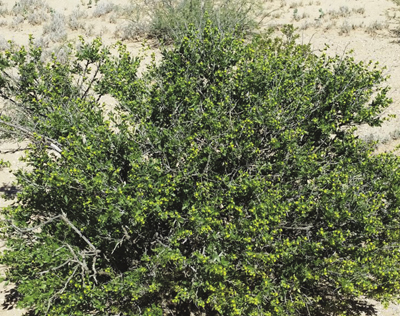
Figure 60B. Tarbush (Flourensia cernua).
Description: Perennial, branched, leafy shrub growing from 1–6 feet tall; leaves are alternate, entire, ovate, approximately 1 inch long; composite flower heads are small, yellow, rayless, and inconspicuously borne in the angles of reduced leaves along long terminal inflorescent axes.
Distribution and Habitat: Tarbush is common in southeastern to south-central New Mexico, forming thickets on dry plains, hills, and mesas.
Livestock Affected: Cattle, sheep, and goats, as well as pronghorn, have been reported to be poisoned by tarbush.
Poisonous Principle and Toxicity : Tarbush first was suspected to be poisonous in the 1930s in far west Texas when winter losses of sheep and goats were experienced. There was a large die off of pronghorn in the same geographical area in the 1960s. The affected pronghorn were found to have consumed over 90% of their diet in tarbush. The buds, heads, green achenes, and especially the mature achenes are the main problems. About 1% of the animal’s body weight in tarbush fruits is toxic. There is considerable variation in individual susceptibility, and only a small margin exists between toxic and lethal doses. The specific toxin is unknown, although there is a high concentration of polyphenolics, including phenolics and condensed tannins.
Signs of Poisoning: Under range conditions, symptoms appear a day or less after eating a toxic amount of the plant material. Symptoms are somewhat modified by the severity of poisoning, but in general they are loss of appetite, abdominal pain, reluctance to move, and, occasionally, labored respiration accompanied by groaning. Animals are reluctant to move and stand with an arched back and “tucked up” abdomen. In acute cases, salivation may be observed. Animals remain on their feet until shortly before death, which occurs usually without struggle.
Conditions of Poisoning: Tarbush is distasteful and will not be browsed unless livestock are unusually hungry. Range cases are usually traced to a lack of forage. Poisonings occur mostly in January, February, and March after the fruit has matured.
Twin-Leaf Senna (Senna roemeriana)
Legume/pea family (Fabaceae) (Figure 61)
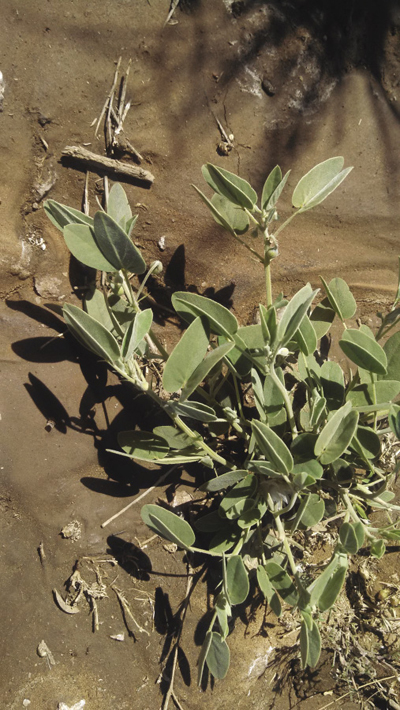
Figure 61. Twin-leaf senna (Senna roemeriana).
Description: Perennial forb; stems are erect; leaves are pinnately compound with one pair of leaflets; flowers in the spring and has showy flowers.
Distribution and Habitat: Twin-leaf senna is found on sandy sites in the southern desert regions of the state.
Livestock Affected: Sheep, goats, and cattle.
Poisonous Principle and Toxicity : Twin-leaf senna contains a series of anthraquinones that exert toxic effects on the digestive tract and skeletal muscles. Other species of Senna have been used as a source of commercial laxatives.
Signs of Poisoning: Diarrhea accompanies the digestive disturbance. If sufficient plant material is consumed, skeletal and perhaps cardiac muscle degeneration may occur within a few days. Anorexia, depression, muscle weakness, and recumbency are common signs after initial diarrhea.
Conditions of Poisoning: Generally, twin-leaf senna does not occur on New Mexico’s rangelands in sufficient quantity to pose much of a threat. It can be found in abundance in roadside areas and disturbed areas such as gravel pits.
Water Hemlock (Cicuta maculata)
Parsley family (Apiaceae) (Figure 62)
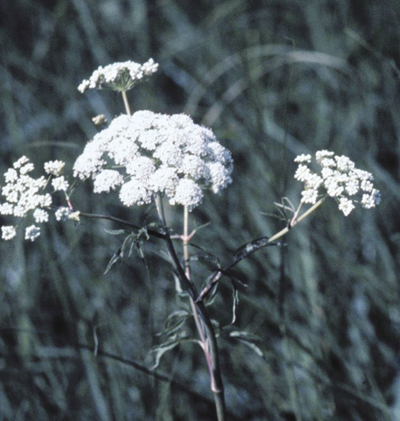
Figure 62. Water hemlock (Cicuta maculata).
Description: Stout, erect, branched, leafy forb 2–7 feet tall; arises from tuberous, thickened roots; leaves 4–16 inches long, two or three times divided; the final divisions (leaflets) 1–4 inches long with saw-toothed edges; flowers white, grouped in umbrella-like clusters; clusters numerous, 2–5 inches wide.
Poison hemlock (Conium maculatum) is often confused with water hemlock, but while the former is found on moist areas, the latter is usually semi-aquatic. The leaves of poison hemlock are more finely divided than those of water hemlock, and the leaf veins terminate at the tips of the teeth, while those of water hemlock terminate between the leaf teeth. If the base of the stem of water hemlock is cut lengthwise just above the root, many small chambers are visible. This characteristic is not shared by other members of the parsley family.
Distribution and Habitat: Introduced from Europe and now widely distributed throughout the state. Found in wet meadows, pastures, and along streams and ditches.
Livestock Affected: Principal loss is from cattle, but all classes are susceptible. Cases of human poisoning have also been documented in the state. Humans die within 2–3 hours after ingesting a few bites of the root.
Poisonous Principle and Toxicity : An oily liquid in the roots contains acetylenic alcohols, the most prevalent of which is cicutoxin. Only 2 ounces of the young leaves, stems, or tubers have killed sheep; 8–10 ounces will kill cows and horses.
Signs of Poisoning: Excessive salivation, muscular twitching, frothing at the mouth, uneasiness, violent convulsions involving clamping of jaws and grinding of teeth, evidence of abdominal pain, elevated body temperature, dilation of the pupils, coma, and death caused by respiratory paralysis and asphyxia. Cicutoxin is a convulsant, but also has cardiopulmonary effects. The duration of the convulsions is usually 3–4 hours because the toxin is quickly eliminated from the body.
Conditions of Poisoning: Most losses occur in early spring before more preferred forage is available. At this time of year, new growth is highly toxic. Also, the ground is often soft and loose, allowing the roots to be pulled up and eaten along with the tops. The highest concentration of cicutoxin is found in the roots, but it is also present in the leaves and stems during early growth. Leaves and stems lose most of their toxicity as they mature. People are sometimes poisoned by eating water hemlock roots, mistaking the plant for wild parsnip (Pastinaca sativa).
Western Monkshood (Aconitum columbianum)
Buttercup family (Ranunculaceae) (Figure 63)
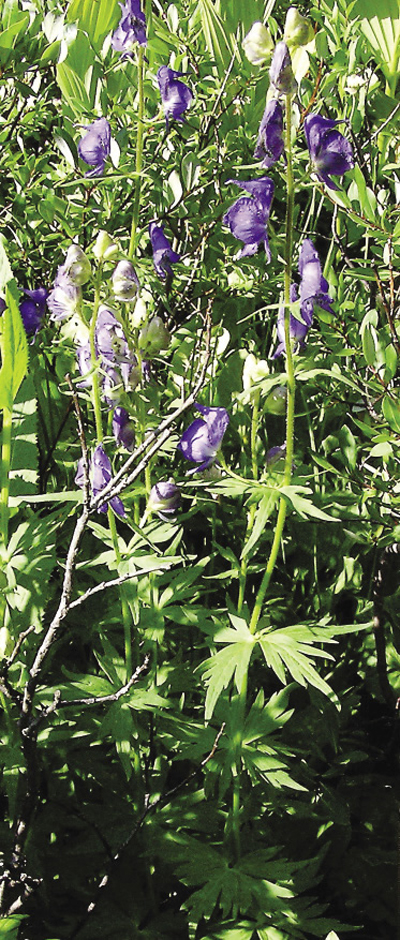
Figure 63. Western monkshood (Aconitum columbianum).
Description: Perennial forb that arises from tubers; stems can be erect or reclining and twining and grow to about 1 foot tall; leaves are alternate and palmately lobed, similar to larkspur (Delphinium spp.); flowers are usually deep purple with the upper petal-like sepal being larger and forming the characteristic “hood.” Western monkshood can be differentiated from larkspur, if there are no flowers, by the solid stems. Wild geranium leaves resemble western monkshood when they first emerge, but have the distinctive geranium odor when crushed.
Distribution and Habitat: Western monkshood is usually found in deep, moist soils of New Mexico’s northern mountain meadows and open timber stands. It often grows in the same areas as larkspur.
Livestock Affected: All classes, including humans.
Poisonous Principle and Toxicity : Diterpene alkaloids, including aconitine, mesaconitine, napelline, and hypaconitine, all of which are highly toxic. All parts of the plant are toxic, with the roots, new leaves, and seeds being especially toxic. Lethal doses may be as little as 0.075% of body weight, but this has only been documented in horses.
Signs of Poisoning: Symptoms of western monkshood poisoning are similar to those of larkspur poisoning. Signs of Poisoning begin within a few hours, and death may occur within a day or less. The diterpene alkaloids cause cardiac arrhythmias. Animals become restless, salivate excessively, develop muscle weakness, and have difficulty breathing before collapsing. Bloat is a common problem in ruminants after they become recumbent.
Conditions of Poisoning: Generally, western monkshood poisoning is difficult to pinpoint since it grows with larkspur in most localities. Human poisoning occurs mostly due to the misuse of medicinal extracts of aconitine or when the root is mistakenly eaten as wild horseradish. The toxins can be absorbed through the skin and are hazardous to people handling the plant. Symptomatic treatment is the only action available for poisoned animals.
Wooly Paperflower (Psilostrophe tagetina)
Sunflower family (Asteraceae) (Figure 64)
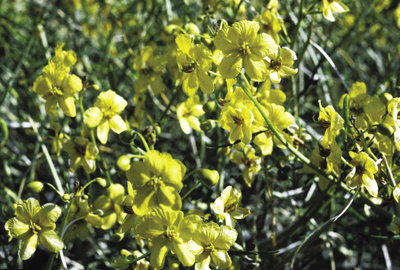
Figure 64. Wooly paperflower (Psilostrophe tagetina).
Description: Biennial forb with a woody taproot and densely pubescent leaves and stems; leaves are simple, alternate, with entire margins to pinnately lobed; flowering heads are quite showy and borne in terminal clusters; flowers are bright yellow to orange in color.
Distribution and Habitat: Wooly paperflower is often seen as conspicuous roadside flowers, and occurs in the southern desert regions of the state on a variety of soils.
Livestock Affected: Primarily sheep; cattle and goats are less susceptible.
Poisonous Principle and Toxicity : Wooly paperflower contains sesquiterpene lactones, such as helenalin and vermeerin, and derivatives of hymenoxyn. The plant contains similar toxins as those found in species of Hymenoxys and Helenium. A large amount of the plant is required for poisoning to occur.
Signs of Poisoning: Following ingestion, the onset of symptoms is gradual. Affected animals become weak and depressed and sluggish in their movements, and lag behind the flock. Latter stages involve coughing, emaciation, and regurgitation of greenish ingesta seen on the mouth. Affected animals stumble and become quickly exhausted, with markedly elevated respiratory and heart rates.
Conditions of Poisoning: Scattered losses of sheep were first reported in the early 1930s. Death losses of 20% have been reported in the spring and fall when other forage is scarce. Treatments are similar to those described for bitterweed and pingue (Hymenoxys spp.).
Yellow Star-Thistle (Centaurea solstitialis)
Sunflower family (Asteraceae) (Figure 65)
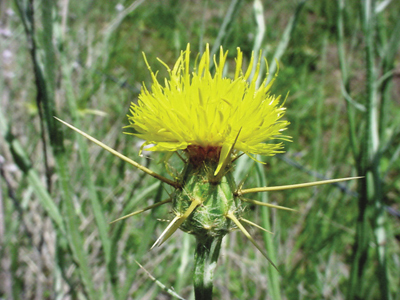
Figure 65. Yellow star-thistle (Centaurea solstitialis).
Description: Annual forb branching from the base to about 1 foot tall; leaves are covered with cottony hairs and the basal leaves are linear and entire; flowers are yellow and showy with bracts that are tipped with stiff, yellow spines 0.5–1 inch long.
Distribution and Habitat: Yellow star-thistle is an aggressive invader of pastures, farmland, and waste areas throughout the state. It is a state-listed noxious weed.
Livestock Affected: Horses.
Poisonous Principle and Toxicity : Several compounds have been identified in yellow star-thistle, including aspartic and glutamic acids, sesquiterpene alkaloids, and a dopaminergic neurotoxin similar to the poison that induces Parkinson’s disease in humans.
Signs of Poisoning: Poisoning in horses does not occur until the plant has been eaten in large quantities for 1–2 months; this equates to 86–200% body weight. Affected horses have problems eating and drinking. This may be accompanied by apprehension, nervousness, and confusion. Within a few days, there is noted depression and swelling of the lips and tongue. The increased tone may produce a fixed facial expression and constant chewing as if there is an obstruction in the throat. This syndrome is commonly called “chewing disease.” The mouth may be held open with the tongue protruding and having a grooved, curled shape. The disease leads to dehydration and starvation, with the animal submerging its head to allow water to flow into the esophagus.
Conditions of Poisoning: Although a large amount of yellow star-thistle is required to induce poisoning, horses develop a preference for the plants and will eat them even when mature and spiny.
Losses from causes other than Poisonous Plants
Diseases can cause large and/or sudden livestock losses and can be confused with poisonous plant losses. It is important that you involve your veterinarian when investigating any large, sudden, or suspicious livestock loss. It is also important that you involve your veterinarian when you see clinical signs in livestock that may be from poisonous plants since some plant toxicoses are treatable, especially early in the disease process. Many plant toxicoses cause an abortion syndrome in livestock that looks like several diseases caused by infectious agents. You will need veterinary assistance to determine the cause of abortions or loss of pregnancy. The following section lists some infectious diseases and physical conditions that may look similar to plant poisonings.Viral, Bacterial, and Other Diseases
Bovine Respiratory Disease Complex (BRD)
Animals affected: Cattle
The infectious agents involved in BRD include the viruses Infectious bovine rhinotracheitis virus (IBR) or “rednose,” Bovine viral diarrhea virus (BVD), parainfluenza virus (PI3), Bovine respiratory syncytial virus (BRSV), and the major bacteria Mannheimia haemolytica. This disease complex can cause very devastating losses to susceptible cattle and has been identified as the causative agent in adult cattle losses. Depending on the immune status and susceptibility of cattle exposed to the causative agents of BRD, clinical signs are generally associated with respiratory disease. Difficult breathing, reluctance to move, open-mouthed breathing, loss of appetite, dehydration, coma, and death are common with BRD. Many times the disease process can move so quickly that no clinical signs are noticed, and sudden death may be the only finding. Vaccination and management can help prevent or minimize losses associated with BRD.
Clostridial Diseases
Animals affected: Cattle, sheep, goats, and horses
The Clostridium spp. of bacteria cause a variety of diseases that can cause large and/or sudden livestock losses. The most common clostridial disease, “blackleg,” still causes livestock losses today. Other species of this genus cause musculoskeletal and gastrointestinal disease. Some clostridial organisms are found in soil and are very infectious to susceptible livestock. Overeating disease, tetanus, botulism, blackleg, red water, black disease, and malignant edema are all caused by Clostridium spp. Sudden death in suckling calves can be caused by C. perfringens; in stocker cattle by the blacklegs C. chauvoei, C. novyi, and C. septicum; and in cattle on feed overeating disease caused by C. perfringens. These diseases can be prevented or minimized with vaccination and management.
Listeriosis
Animals affected: Sheep, goats, and cattle
This disease affects the brain and is caused by the bacteria Listeria monocytogenes. This disease is usually seen as a brain problem, and affected animals may show the clinical signs of circling, ataxia, anorexia, stumbling, paresis, coma, and death. The ataxia and “brain signs” are similar to many plant poisonings, such as nitrate toxicity. Other syndromes are possible, but not as common as the brain signs. There is no vaccination to prevent the disease, but it is treatable with limited success if diagnosed early.
Thromboembolic Meningoencephalitis (TME)
Animals affected: Cattle
This is a disease caused by Histophilus somnus (formerly Haemophilus somnus) that causes brain signs and damage. This form may be accompanied by a mild to moderate respiratory disease. This disease is usually seen in feeder cattle, but can be seen in weaned calves on pasture, such as wheat pasture. Clinical signs include depression, ataxia, anorexia, stumbling, reluctance to move, knuckling over, paresis, paddling, coma, and death. The respiratory disease may be associated with brain signs in some cattle. Vaccination and management may prevent or minimize losses from this disease. It is treatable when diagnosed early in the course of the disease.
Polioencephalomalacia (PEM)
Animals affected: Cattle, sheep, and goats
Sulfur toxicity is the leading cause of PEM in ruminants. If dietary (from feed or water) sulfur levels exceed 1,000 ppm, toxicity can result. Clinical signs include anorexia, ataxia, depression, head pressing, “star-gazing,” paresis, coma, and death.
High-Elevation Disease (Brisket Disease)
Animals affected: Cattle
This disease is caused by pulmonary hypertension resulting from decreased environmental atmospheric pressure. Cattle acclimated at lower elevations and higher environmental atmospheric pressure may develop hypertension when moved to a higher elevation. Researchers are exploring a possible genetic predisposition to this disease. Some genetic lines of cattle appear to be more tolerant to changes in elevation and therefore show less hypertensive effects. Clinical signs of this disease are a gradual loss of condition, depression, anorexia, swelling in the brisket region, jugular pulse, difficulty breathing, open-mouthed breathing, reluctance to move, recumbency, and death. If cattle are moved back down to lower elevations, some may spontaneously improve. Testing cattle for pulmonary arterial pressure may identify susceptible cattle prior to moving to high elevation. Bulls selected for low arterial pressures at high-elevation bull tests should be considered for sires when high elevations are involved in your ranching operation.
Bluetongue
Animals affected: Sheep, cattle, and deer
Bluetongue virus causes the disease bluetongue, and is transmitted by midges or “no-see-ums” belonging to the Culicoides genus. This vector-borne disease causes much more disease in sheep than cattle, but many cattle in NM are serologically positive for bluetongue. This disease also affects wildlife. Clinical signs are varied but usually include anorexia, ataxia, swelling of the head and face, sores in the mouth, and lameness. Sudden death can be seen with bluetongue. Brain signs can also be seen in some cases. In some instances, vaccination may be included in the management for preventing this disease.
Nutritional Disorders
Pregnancy Toxemia
Animals affected: Sheep
Also referred to as pregnancy disease, ketosis, and acetoanemia or twinning disease because it is most common among ewes carrying twins or triplets. The disease is caused by inadequate energy intake during the last 4 weeks of pregnancy when nearly 2/3 of fetal growth occurs. Symptoms are similar to those of many toxic plant poisons. Ewes begin showing dullness and lagging behind the flock. Animals become unsteady and urinate frequently. There may be a grinding of teeth, and breathing is labored. Vision is impaired and blindness may result. Animals tend to walk in circles or push against solid objects. Finally, the ewe loses the ability to stand and frequently lies down on her chest with her head turned to one side. Occasionally, the lambs are delivered, in which case the recovery is prompt. Otherwise, the disease is fatal in 1–7 days. Pregnancy toxemia is easier to prevent than to treat. Providing more concentrated sources of nutrients in late gestation is quite helpful. Treating with glycerol or with large doses of long-acting glucocorticoids are usual treatments administered by a veterinarian.
Enterotoxemia
Animals affected: Sheep and goats
Various forms of overeating disease are in the same category. These may occur when animals are shifted from poor forage to rich feed, and are caused by toxins produced by intestinal bacteria as a response to the rich feed. Affected animals lag behind, stagger, knuckle over on the front legs, and show a depraved appetite. They fall and make futile attempts to rise. Respiration becomes rapid and labored. Salivation and champing of the jaws are common, and bloat may develop. Animals may die in convulsions or enter a coma and die quickly. Vaccination with enterotoxemia vaccine can usually prevent losses.
White Muscle Disease
Animals affected: Sheep, cattle, and horses
This disease is due to an interference with selenium metabolism, or an actual deficiency of selenium or vitamin E in the diet. Affected animals have usually been grazing on irrigated pastures, and the incidence is much higher on legume pastures. Symptoms include an arched back and incoordination of the rear legs. The disease is most common in lambs 3–8 weeks old. There is a progressive paralysis of the skeletal muscles, heart, diaphragm, tongue, and esophagus.
A common treatment is an injection of selenium and vitamin E, available only from a veterinarian, or by feeding a mineral mix with added selenium. Care should be observed when treating for selenium deficiency because selenium toxicity is just as detrimental as selenium deficiency.
Salt Toxicity
Animals affected: All classes
The exact conditions necessary for salt poisoning in livestock are rather obscure. However, it is generally agreed that availability, or lack of, good-quality water is the controlling factor. Salt poisoning occurs when animals are starved for salt, have a restricted water supply, and suddenly have access to loose salt or brine solutions. Cases of salt poisoning have occurred in New Mexico during wet periods when normally dry playa lakes have standing water in them. These waters are often salty, and in such cases livestock must have other water available. Caution is also advised when feeding salt-limiting protein supplements. Affected animals show signs of abdominal pain and diarrhea. The oral mucosa is dry and bloody. There is great thirst and dehydration. Frequent urination, paralysis of the hind limbs, general paralysis, and death occur in 6–24 hours after ingestion of the salt.
Blue-Green Algae
Animals affected: All classes
Blue-green algae, also known as cyanobacteria, are a group of photosynthetic bacteria that many people refer to as “pond scum.” Blue-green algae are most often blue-green in color, but can also be blue, green, reddish-purple, or brown. They generally grow in lakes, ponds, and slow-moving streams. Blue-green algae of a number of species have caused livestock and elk deaths in many areas when animals drank algae-infected water.
When environmental conditions are just right, blue-green algae can grow very quickly in number. Most species are buoyant and will float to the surface where they form scum layers or floating mats or “blooms.” Blue-green algae blooms generally occur between mid-June and late September, although in rare instances blooms have been observed in winter, even under ice.
The most commonly detected species include Anabaena spp., Aphanizomenon spp., Microcystis spp., and Planktothrix spp. It is not always the same species that blooms in a given water body, and the dominant species present can change over the course of the season.
Concerns associated with blue-green algae include discolored water, reduced light penetration, taste and odor problems, dissolved oxygen depletions during die-off, and toxin production. Discolored water is an aesthetic issue, but when blue-green algae reach bloom densities, they can actually reduce light penetration, which can adversely affect other aquatic organisms both directly (e.g., other phytoplankton and aquatic plants) and indirectly (e.g., zooplankton and fish that depend on phytoplankton and plants). When a blue-green algae bloom dies off, the blue-green algae cells sink and are broken down by microbes. This breakdown process requires oxygen and can create a biological oxygen demand. Increases in biological oxygen demand result in decreases in oxygen concentration in the water, and this can adversely affect fish and other aquatic life, and can even result in fish kills.
Blue-green algal toxins are chemical compounds that are sometimes produced inside the cells of certain species of blue-green algae. Microcystin-LR (a hepatotoxin) and anatoxin-a (a neurotoxin) are the most frequently detected toxins. Dosages in excess of 1 g/kg body weight are lethal.
These chemicals are not produced all of the time, and there is no easy way to tell when blue-green algae are producing them and when they are not. When the cells are broken open, the toxins may be released. Sometimes this occurs when the cells die off naturally and they break open as they sink and decay in a lake or pond. Cells may also be broken open when the water is treated with chemicals meant to kill algae, and when cells are swallowed and mixed with digestive acids in the stomachs of people or animals. The only way to be sure if the toxins are present is to have water samples analyzed in a laboratory using sophisticated equipment. Treating surface water that is experiencing a blue-green algae bloom with an herbicide or algaecide may kill the blue-green algae, but any toxin(s) contained in the cells will be released at once, resulting in a large amount of toxin(s) in the water. So while the bloom may no longer be visible, toxin(s) may be present for some period of time following treatment.
Animals dying from algal poisoning must not be used for food because the toxic principle is stable and can be passed on to the consumer.
Poisonous Feed
Moldy Hay or Grain
Animals affected: All classes
Molds in hay or grain feed can produce aflatoxicosis if certain species of molds are involved. In all animals, the first symptoms are loss of appetite, reduced growth rate, or loss of condition. Other signs of aflatoxin poisoning are usually not seen until a week or two before death. Advanced stages of aflatoxicosis include jaundice and apathy.
Urea Poisoning
Animals affected: All classes
Urea poisoning almost always is a result of improperly mixed feed. Ruminant animals use urea nitrogen to form microbial protein if there is enough energy in the diet for rumen microbes to form proteins. If there is not enough energy, or if the urea feed is not mixed properly, the animal suffers from ammonia toxicity. If diet energy sources are not available in sufficient amounts, or if the animal eats too much urea at once, the excess ammonia generated by the breakdown of urea is absorbed by the blood.
Urea poisoning is almost always acute, with symptoms appearing within 30–60 minutes. The syndrome is marked by excessive salivation with frothing, ataxia, weakness, trembling of muscles, occasional paralysis of the forelegs, bloat, and sometimes severe tetany or strychnine-like convulsions. Breathing is slow, difficult, and deep. Gasping is often seen, and grinding of the teeth is almost always noted. Death usually occurs within a matter of hours. Early signs of urea poisoning also include staggering, stretching, frequent urination, and knuckling of the rear fetlocks.
Blister Beetles
Animals affected: Horses
Blister beetles produce the toxin cantharidin. Horses are most likely to encounter cantharidin when blister beetle-infested alfalfa is baled as hay. The crimpers in the swather that speed the drying process may crush the beetles, thereby releasing the toxin, which remains in the hay even after the dead beetles drop out.
Blister beetles have also been reported in kochia (Kochia scoparia). However, blister beetle poisoning of horses grazing kochia has not been a widespread issue.
Consuming as little as 4–6 grams of dried beetles can be fatal to a horse. Signs of Poisoning range from mild depression and discomfort to severe colic-like pain, indicated by restlessness, irritability, and sweating. Other signs may include fever, dark mucous membranes, increased heart and respiratory rates, diarrhea, and painful urination. Horses often take frequent drinks or repeatedly dunk their muzzles in water. In severe cases, horses may exhibit extensive ulceration of the oral cavity and/or entire digestive tract (upon necropsy).
Blood tests will show decreased levels of serum calcium and magnesium and high levels of creatinine. Blood tests must be performed within the first three or four days of the beginning of symptoms to get an accurate result.
There is no specific antidote for cantharidin. Horses may recover with supportive care, including intravenous fluids to rehydrate and correct electrolyte imbalances as well as analgesic and anti-inflammatory medications. A more detailed discussion of blister beetles, their management, and their toxicity can be found in NMSU Extension Circular 536, Blister Beetles in Alfalfa (https://pubs.nmsu.edu/_circulars/CR536.pdf).
Quick Reference Chart of Poisonous Plants and Symptoms (PDF)
Glossary
All definitions taken, in whole or in part, from Dorland’s Medical Dictionary, 27th ed. (1985; W.B. Saunders Publishing) unless otherwise noted.
Acute: Having a short and relatively severe course.
Alkali soil: A soil that has either such a high a degree of alkalinity (pH 8.5 or higher) or such a high a percentage of exchangeable sodium (15% or higher) or both that the growth of most plants is limited.
Anorexia: Lack or loss of the appetite for food.
Anoxemia: Reduction of oxygen content of the blood below physiologic levels.
Anoxia: A total lack of oxygen; often used interchangeably with hypoxia to mean a reduced supply of oxygen to the tissues.
Ascites: Effusion and accumulation of serous fluid in the abdominal cavity.
Ataxia: Failure of muscular coordination; irregularity of muscular action.
Carcinogen: Any cancer-causing substance.
Carcinogenic: Capable of producing carcinoma.
Carcinoma: A malignant new growth made up of epithelial cells tending to infiltrate the surrounding tissues and give rise to metastasis.
Chronic: Persisting over a long period of time.
Cirrhosis: Liver disease characterized pathologically by loss of the normal microscopic lobular architecture, with fibrosis and nodular regeneration.
Congenital: Existing at, and usually before, birth; referring to conditions that are present at birth, regardless of their causation.
Congestion: Excessive or abnormal accumulation of blood in an area, organ, body part, etc.
Conjunctiva: The delicate membrane that lines the eyelids (palpebral conjunctiva) and covers the exposed surface of the sclera (bulbar or ocular conjunctiva).
Conjunctivitis: Inflammation of the conjunctiva, generally consisting of conjunctival hyperemia associated with a discharge.
Cyanosis: A bluish discoloration, applied especially to such discoloration of skin and mucus membranes due to excessive concentration of reduced hemoglobin in the blood
Demyelination: Destruction, removal, or loss of the myelin sheath of a nerve or nerves.
Dyspnea: Difficult or labored breathing.
Ecchymosis: A small hemorrhagic spot, larger than a petechia, in the skin or mucus membrane that forms a non-elevated, rounded, or irregular bluish or purplish patch.
Edema: The presence of abnormally large amounts of fluid in the intercellular tissue spaces of the body; usually applied to demonstrable accumulation of excessive fluid in the subcutaneous tissues.
Edematous: Pertaining to or affected by edema.
Effusion: The escape of fluid into a part or tissue, such as an exudation or transudation.
Emaciation: Excessive leanness; a wasted condition of the body.
Erythema: A name applied to redness of the skin produced by congestion of the capillaries, which may result from a variety of causes, the etiology or a specific type of lesion often being indicated by a modifying term.
Erythrocyte: One of the elements found in peripheral blood; called also red blood cell or corpuscle.
Exudate: Material, such as fluid, cells, or cellular debris, that has escaped from blood vessels and has been deposited in tissues or on tissue surfaces, usually as a result of inflammation.
Gastroenteritis: An acute inflammation of the lining of the stomach and intestines, which has various causes, including food poisoning; characterized by anorexia, nausea, diarrhea, abdominal pain, and weakness.
Hemoglobin: The oxygen-carrying pigment of the erythrocytes, formed by the developing erythrocyte in bone marrow.
Hepatitis: Inflammation of the liver.
Hyperemia: An excess of blood in the vessels supplying an organ or other part of the body.
Hypoglycemia: An abnormally diminished concentration of glucose in the blood, which may lead to tremulousness, cold sweat, piloerection, hypothermia, and headache, accompanied by irritability, confusion, hallucinations, bizarre behavior, and ultimately convulsions and coma.
Icterus: See Jaundice.
Intestinal mucosa: The mucous membrane lining the intestine.
Jaundice: A syndrome characterized by hyperbilirubinemia (an excess of bilirubin in the blood) and deposition of bile pigment in the skin, mucus membranes, and sclera, resulting in a yellow appearance of the patient; called also icterus.
Lesion: Any pathological or traumatic discontinuity of tissue or loss of function of a part.
Lethargy: Abnormal drowsiness or stupor; a condition of indifference.
Lysin: Any substance that causes cell lysis.
Lysis: Destruction, as of cells by a specific lysin.
Metastasis: The transfer of disease from one organ or part to another not directly connected with it.
Mutagenic: Causing change; inducing genetic change.
Necropsy: Examination of a body after death.
Nephritis: Inflammation of the kidney.
Neurologic: Pertaining to neurology or to the nervous system.
Paralysis: Loss or impairment of motor function in a part due to lesion of the neural or muscular mechanism; also, by analogy, impairment of sensory function (sensory paralysis).
Paresis: Slight or incomplete paralysis.
Petechia: A pinpoint, non-raised, perfectly round, purplish-red spot caused by intradermic (within the skin layers) or submucous (within or under a mucous membrane) hemorrhage.
Polydipsia: Chronic, excessive thirst.
Polyuria: The passage of a large volume of urine in a given period.
Pruritus: Itching; an unpleasant cutaneous sensation that provokes the desire to rub or scratch the skin to obtain relief.
Rumen atony: Lack of normal tone or strength of the rumen.
Sclera: The tough white outer coat of the eyeball.
Serous: Pertaining to or resembling serum. Producing or containing serum, as a serous gland or cyst.
Teratogenesis: The production of physical defects in offspring in utero.
Teratogenic: Tending to produce anomalies of formation.
Toxic: Pertaining to, due to, or of the nature of a poison or toxin; manifesting the symptoms of a severe infection.
Toxicant: Poisonous; a poisonous agent.
Toxicity: The quality of being poisonous, especially the degree of virulence of a toxic microbe or of a poison.
Transudate: A fluid substance that has passed through a membrane or been extruded from a tissue, sometimes as a result inflammation.
Tremulous: Shaking, trembling, or quivering.
Virulent: Pertaining to or characterized by virulence; exceedingly pathogenic, noxious, or deleterious.
References
Allison, C.D. 1991. Livestock poisoning plants of New Mexico rangelands [Circular 531]. Las Cruces: New Mexico State University Cooperative Extension Service.
Burrows, G.E., and R.J. Tyrl. 2001. Toxic plants of North America. Ames: Iowa State University Press.
Cheeke, P.R., and L.R. Shull. 1985. Natural toxicants in feeds and poisonous plants. Westport, CT: Avi Publishing Co.
Hart, C.R., A. McGinty, and B.B. Carpenter. 1998. Toxic plant handbook: Integrated management strategies for West Texas [B-6072]. College Station: Texas A&M University, Texas Agricultural Extension Service.
James, L.F., M.H. Ralphs, and D.B. Nielsen (Eds.). 1988. The ecology and economic impact of poisonous plants on livestock production. Boulder, CO: Westview Press.
Keeler, R.F., K.R. Van Kampen, and L.F. James (Eds.). 1978. Effects of poisonous plants on livestock. New York: Academic Press.
Kingsbury, J.M. 1964. Poisonous plants of the United States and Canada. Englewood Cliffs, NJ: Prentice Hall, Inc.
Knight, A.P., and R.G. Walter. 2001. A guide to plant poisoning of animals in North America. Jackson, WY: Teton New Media.
Norris, J.J., and K.A. Valentine. 1954. Principal livestock-poisoning plants of New Mexico Ranges [Bulletin 390]. Las Cruces: New Mexico State University Agricultural Experiment Station.
Seawright, A.A., M.P. Hegarty, L.F. James, and R.F. Keeler (Eds.). 1984. Plant toxicology. Melbourne: Dominion Press – Hedges & Bell.
Schmutz, E.M., B.N. Freeman, and R.E. Reed. 1968. Livestock poisoning plants of Arizona. Tucson: University of Arizona Press.
USDA–ARS. 2011. Plants poisonous to livestock in the western states [Bulletin 415]. Logan, UT: USDA–ARS, Poisonous Plant Research Laboratory.
For Further Reading
B-816: Managing Rangelands and Cattle in Drought-Prone Areas of the Southwest
pubs.nmsu.edu/_b/B816/
CR-374: New Mexico Range Plants
pubs.nmsu.edu/_circulars/cr-374/
CR-636: An Annotated Checklist of Poisonous or Injurious Range Plants of New Mexico
pubs.nmsu.edu/_circulars/CR-636/
 |
IN MEMORIAM This publication is dedicated to the memory of John David Graham, Union County Extension Agricultural Agent and a leader in toxic plant management, especially locoweed. His leadership and passion for management of the rangelands of New Mexico are his legacy to the citizens of the state. |
To find more resources for your business, home, or family, visit the College of Agriculture and Home Economics on the World Wide Web at pubs.nmsu.edu
Contents of publications may be freely reproduced for educational purposes. All other rights reserved. For permission to use publications for other purposes, contact pubs@nmsu.edu or the authors listed on the publication.
New Mexico State University is an equal opportunity/affirmative action employer and educator. NMSU and the U.S. Department of Agriculture cooperating.
March 2016


